





Academic Authors: Sneha Sharma, Anuj Gupta, Sayani Sarkar, Chandni Bhargava
Creative Director: Bhavna Tripathi
Book Production: Vishesh Agarwal, Amisha Gupta
VP, Learning: Abhishek Bhatnagar
All products and brand names used in this book are trademarks, registered trademarks or trade names of their respective owners.
© Uolo EdTech Private Limited
First impression 2025
This book is sold subject to the condition that it shall not by way of trade or otherwise, be lent, resold, hired out, or otherwise circulated without the publisher’s prior written consent in any form of binding or cover other than that in which it is published and without a similar condition including this condition being imposed on the subsequent purchaser and without limiting the rights under copyright reserved above, no part of this publication may be reproduced, stored in or introduced into a retrieval system, or transmitted in any form or by any means, electronic, mechanical, photocopying, recording or otherwise, without the prior written permission of both the copyright owner and the above-mentioned publisher of this book.
Book Title: Dawn Teacher Manual Level C Part-II
ISBN: 978-81-985727-4-5
Published by Uolo EdTech Private Limited
Corporate Office Address:
85, Sector 44, Gurugram, Haryana 122003
CIN: U74999DL2017PTC322986
Illustrations and images: www.shutterstock.com, www.stock.adobe.com and www.freepik.com
All suggested use of the internet should be under adult supervision.

he early years of education serve as the cornerstone for a child’s cognitive, social, and emotional development. This crucial stage is not solely about literacy and numeracy but about enabling holistic growth, ensuring that children develop into confident, inquisitive, and well-rounded individuals. The DAWN curriculum has been meticulously designed to be in alignment with the National Education Policy (NEP) 2020 and the National Curriculum Framework for Foundational Stage (NCF-FS) 2022, thereby integrating the Panchakosha framework—a five-dimensional approach that nurtures physical, emotional, intellectual, social, and moral development in young learners—within the scope of this curriculum.
The curriculum follows a structured 180-day teaching plan, ensuring a well-paced and progressive learning journey. The 4+1 Teaching Model offers a balanced approach, with four days dedicated to new learning and the fifth day—the Catch-up Carnival—focused on revision and personalised support. This model ensures that every child consolidates learning effectively while receiving additional reinforcement where needed.
A Curriculum Rooted in the Panchakosha Framework
The DAWN curriculum is not merely a sequence of lessons; it is an experiential and thoughtfully designed learning journey that strengthens all five dimensions of the Panchakosha framework:
1. Physical Development – Through movement-based activities, action rhymes, gross and fine motor skill exercises, yoga, and simple meditation practices, children enhance coordination, balance, and self-regulation.
2. Social and Emotional Growth – Circle Time discussions, role-play, games, storytelling, and collaborative activities encourage empathy, cooperation, self-expression, and social awareness.
3. Intellectual Growth – The structured and age-appropriate progression of literacy and numeracy concepts, moving from concrete to abstract understanding, strengthens problem-solving skills, logical thinking, and foundational cognitive abilities.
4. Spiritual and Moral Development – Stories, rhymes, discussions, and guided reflections help children understand fundamental values such as kindness, honesty, patience, and respect for both people and the environment. Guided yoga and meditation help children stay calm, focus better, and feel happy.
5. Sensory and Experiential Learning – The DIY section provides opportunities for art and craft, STEM-based explorations, rhymes, stories, and interactive games, ensuring hands-on engagement, creativity, and imaginative thinking.
The curriculum has been carefully structured for ease of implementation, ensuring that lessons are engaging, developmentally appropriate, and seamlessly executable with minimal resources. Pro tips, error alerts, and best-practice strategies equip teachers with the tools needed to deliver lessons effectively while maintaining a structured and stimulating learning environment.
This manual is not just a teaching guide but a comprehensive support system designed to make classroom instruction efficient, engaging, and impactful. Each lesson follows a well-defined sequence, ensuring a smooth flow of activities that build upon prior knowledge, making learning meaningful and enjoyable.
By following this manual, teachers can confidently create a nurturing, inclusive, and stimulating learning environment, ensuring that every child progresses at their own pace while developing a strong foundation for future learning and personal growth. Through this collaborative journey, let us empower young learners to explore, discover, and thrive—one meaningful lesson at a time.



• Structured 180-Day Plan – The curriculum is designed with 150 teaching days dedicated to introducing and developing new concepts, and 30 revision days to reinforce learning and strengthen the understanding of one concept before moving forward to the next.
• 4+1 Teaching Model – A systematic and balanced approach where the first four days in a week focus on new learning, ensuring concept clarity and skill-building, while the fifth day is dedicated to revision and reinforcement. This structured progression helps children absorb, apply, and retain knowledge effectively.
• Catch-up Carnival: A Dedicated Revision and Support Day – The 5th day of every week is designed to consolidate learning and provide targeted support through:
Revisiting and Strengthening Weekly Learning – A structured review session that ensures children have the opportunity to recap and reinforce concepts introduced during the week.
Providing Additional Support for Struggling Learners – Carefully designed guidance, scaffolding techniques, and engaging revision strategies to help children who need extra time and practice to grasp key ideas.
• Strong Emphasis on Core Subjects – The curriculum provides comprehensive coverage of General Awareness, Literacy, and Numeracy. Every lesson is carefully designed to enhance cognitive skills, logical reasoning, and problem-solving abilities, ensuring children develop a strong academic foundation.
• Dynamic Circle Time Engagement – Thoughtfully structured Circle Time activities to kickstart the day on a positive note, and promote physical agility, emotional intelligence, social skills, moral values and spiritual awareness. Teachers are provided with a variety of interactive discussions, songs and rhymes, stories and role play scenarios, guided meditation, yoga practices, and mindfulness exercises to help children kickstart their day on a positive note.
• Hands-on Learning through the DIY Section – A dedicated enrichment segment at the end of each day, the DIY section offers STEM explorations, Art & Craft activities, storytelling sessions, song and dance, fun activities and interactive games. These experiential activities not only encourage creativity, motor development and sensory learning, but also add a flavour of joy in day-to-day learning.
3. Engaging Learning Approach: A Structured and Interactive Experience
•

Seamless Daily Flow – Each day follows a well-structured sequence, ensuring a smooth transition between activities and concepts. This thoughtful flow allows children to grasp new ideas naturally while reinforcing prior learning in a logical and engaging manner.


• Step-by-Step Lesson Guidance – Clear, concise, and easy-to-follow lesson plans provide teachers with structured guidance, ensuring confident, organised, and effective lesson delivery.
• Multisensory Learning Approach – Lessons are designed to stimulate multiple senses, incorporating visual, auditory, and kinesthetic activities. This approach enhances retention, strengthens comprehension, and makes learning more dynamic and interactive.
• Progressive & Play-Based Activities – Carefully curated play-based learning experiences align with children's developmental needs, ensuring a smooth transition from concrete exploration to pictorial representation and symbolic understanding. This gradual progression builds confidence and deepens understanding.
• Pro Tips for Teachers – Expert-backed teaching strategies and classroom management tips help educators enhance student engagement, encourage participation, and maximise learning outcomes.
• Error Alerts for Caution – Carefully curated guidelines on common teaching pitfalls ensure that lessons are delivered smoothly and effectively, helping teachers avoid misconceptions and common errors or mistakes.
• Creative Homework Ideas – Engaging, hands-on, and age-appropriate homework activities encourage playful learning beyond the classroom, reinforcing key concepts in a fun and meaningful way.
1. Use Fun Attention Getters – Clap patterns, call-and-response chants, or simple signals like “1-2-3, eyes on me!” keep kids engaged.
2. Use a Soft Signal for Attention – Instead of raising your voice, use a bell, a clapping pattern, or a simple phrase like "Hands on your head!"
3. Print-rich Environment – Use pictures and words to label materials in the classroom for creating a print-rich environment.
4. Create Clear Rules – Keep the rules simple and display them with pictures so kids can easily remember.
5. Use Positive Reinforcement – Notice good behavior and give compliments or badges often to encourage more of it. Praise good behaviour by saying "I love how quietly you are sitting!" instead of pointing out who isn’t.
6. Use Visual Schedules – A daily routine chart helps kids know what to expect and feel secure.
7. Make Transitions Exciting – Use songs or movement games to smoothly switch between activities.
8. Use Colour Cues for Noise Levels – Display a red sign for silent work, yellow for low talking, and green for discussion time.
9. Keep Instructions Short & Sweet – Young learners need clear, simple directions. Too many words can confuse them.
10. Use Movement Breaks – Brain breaks, stretching, or dancing help keep little bodies and minds active.
11. Have a Magic Word – A special word (like “popcorn”) can signal kids to listen or freeze.
12. Keep Supplies Organized – Label bins and shelves with pictures so kids can easily find and put away materials.
13. Use a Talking Object – Pass around a soft toy or ball; only the person holding it can talk.
14. Use Ice-cream Sticks – Write each student's name on an ice-cream stick, randomly pick one, and invite that child to answer.
15. Set Up a Turn-taking Chart – Write names in order so kids know when their turn is coming.
16. Mix Up Seating Arrangements – Change partner or group work setups to keep children engaged and encourage teamwork.
17. Have a "Mystery Motivator" – Randomly surprise children with a small reward for good behaviour (e.g., extra playtime).
18. End the Day on a Happy Note – Have a short "What did you learn today?" or "One thing that made you smile!" discussion before leaving.




Circle Time Yoga and Meditation
General Awareness My School
General Awareness, page 30
Foundational Literacy A Man and A Cat Reader, page 1; Literacy Workbook, page 8
Foundational Numeracy Diamond Numeracy Skillbook, page 21
DIY Magic Flower
STEM Exploration, pages 7–8
LO: Children will perform simple yoga and meditate to relax themselves.
Resources: Soft music
1. Warm-Up: Play soft music and guide the children through gentle stretches. Say:
• Stretch your arms up high as if reaching for the sky.
• Bend down and touch your toes.
• Stand straight and take deep breaths, in and out.
2. Tree Pose Yoga: Demonstrate and guide the children through this pose. Say:
• Stand tall with your feet together and arms by your side.
• Take a deep breath and imagine that you are a tall, strong tree.
• Lift one foot and place it on the side of your other leg (below or above the knee, but not on the knee).
• Focus on something in front of you to balance yourself.
• Put your hands together in a prayer position at your chest.
• Raise your arms to the sky like tree branches.
• Hold the pose for 10–20 seconds, breathing deeply.
3. Meditation: Ask the children to sit cross-legged and close their eyes. Play soft music and say: Imagine you are a bright star in the night sky, shining gently. Take slow, deep breaths and feel calm. Let them sit still for a moment, then gently guide them to open their eyes. If sitting cross-legged is not possible, then let them sit in their seats.

LO: Children will understand the importance of school and identify different things they learn at school.
Resources: General Awareness, page 30
1. Warm-Up: Greet the children warmly and ask questions, such as:
• Why do we come to school?
• With whom do we study and play with?
• Who teaches us at school?
Encourage each child to respond.
2. Importance of School: Ask: What do you like about school? Encourage children to share their thoughts. Talk about different school activities such as reading, listening to stories, playing, and painting. Ask: What do we do at school? Briefly explain that school is a place to learn new things, make friends, and have fun.
3. My School: Refer to page 30 of the General Awareness book. Point to each picture and introduce school activities. Say:
• I learn to read and write at school.
• I play with my friends at school.
• I learn to draw and paint in school. Repeat each activity 3–4 times for reinforcement.


















Let children take turns to play the roles of teacher and student, performing activities, such as reading, writing, or playing.
LO: Children will listen to, read, and write CVC words with the middle /a/ sound and read sight words.
Resources: Reader, page 1; Literacy Workbook, page 8



1. Picture Talk: Ask children to open page 1 of the Reader. Point to a picture and ask: What do you see? Take a few responses and say: This is a cat. with other pictures.

















2. Explaination: Read the lines from page 1 of the Reader and explain them in a mix of English and the home language to ensure understanding.








3. Modelling: Demonstrate how to read the sentences in page 1. Read slowly but loudly and with clear pronunciation and voice modulation.





4. Sight Words: Introduce the sight words from page 1. Write the sight words on the board and read each word aloud. For example, write words like as, the, is, on, in, has and help children identify and read the sight words after you. Call children one by one, say a sight word, and ask them to point to it in the Reader.
5. Reading CVC Words: Introduce the CVC words on page 1. Write a word on the board and guide children in reading it. For example, write cat and say: /c/ /a/ /t/ → cat. Emphasise the middle sound /a/ and ask children to repeat after you. Repeat with other CVC words containing the middle /a/ sound such as man, fat, cat, nap, can, rat, hat and mat.
6. Writing CVC Words: Ask children to open page 8 of the Workbook. Help them read the CVC words on the page. Ask them to trace and write only the first two lines. Assist those who need help.



























Refer to page 8 of the Workbook. Trace and write the CVC words. Practise reading words with the middle /a/ sound at home.
LO: Children will identify and recognise the diamond shape.
Resources: Numeracy Skillbook, page 21; large diamond cutout; diamond-shaped objects (earrings, mirror, kite, etc.); chalk
1. Explaining the Concept: Show a large diamond cutout and say: This is a diamond. Doesn’t it look like a kite? Then, show diamond-shaped objects (e.g. a kite, earrings) to help children understand the shape.
2. Shape Hunt: Draw diamonds, squares, and rectangles on the board. Call children one by one to identify and point to the diamonds.
3. Diamond: Ask children to open page 21 of the Skillbook. Show them the diamond shape and discuss its sides. Help them identify the diamond-shaped objects in the picture. Guide them to count the big and small diamonds in the king’s crown and write the numbers in the boxes.
LO: Children will understand how flowers absorb water through their stems.









Resources: STEM Exploration, pages 7–8; a plastic cup; white daisy or carnation (or any flower with white petals); water; food colouring
1. Warm-Up: Show the children the flower (e.g. a white carnation or daisy) and say: Do you know even flowers drink water? to build curiosity.
2. Demonstration: Gather the children in a circle. Fill plastic cups with water and add a few drops of different food colourings. Cut the flower stems at an angle and place one flower in each cup. Ask: What do you think will happen to the flower petals? Encourage all responses. Let the flowers sit for a few hours. Ask the children to observe when the petals have changed colours. Bring a cup or jar, a white flower with a stem, and food colouring for the next session.








Circle Time
Speaking My Thoughts
General Awareness Rooms In a School
Foundational Literacy
A Man and A Cat
Foundational Numeracy Semicircle, Star and Diamond
General Awareness, page 31
Reader, page 1; Literacy Workbook, pages 9–10
Numeracy Workbook, page 15
DIY Magic Flower STEM Exploration, pages 7–8
LO: Children will gain confidence in speaking by responding to simple questions in a fun and supportive environment.
Resources: A puppet or soft toy
1. Warm-Up: Show a puppet or soft toy and then hide behind you pretending it to be too shy to come out. Whisper to the children: The puppet is feeling a little shy. If we stay really quiet, it might come out to say hello. Pretend the puppet is hiding its face. When the room is silent, make the puppet shyly say hello. Whisper to the children: The puppet wants to ask you a question!
2. Speaking My Thoughts: Call one child at a time and hand them the puppet. Say: The puppet wants to whisper a secret question just for you! Pretend the puppet is whispering in your ear, then gently ask the child a question. Encourage responses with a soft and supportive tone. Some example questions are:
• Can you tell the puppet your name?
• Do you have any pets?
• Who do you love playing with at home?
• Where is your favourite place to go?
• What is your favourite colour?
If a child is shy, let them whisper their answer to the puppet first, then encourage them to share with the group. Model full sentences: My favourite colour is blue. After each response, make the puppet nod happily or clap its hands, showing excitement. End the session by saying: Our puppet had so much fun listening to everyone! It feels really happy to have so many new friends.

LO: Children will identify and name different rooms and places in a school.
Resources: General Awareness, page 31


1. Recapping the Concept: Ask: What do you like about school? Encourage children to share their thoughts. Talk about different school activities such as reading, listening to stories, playing, and painting. Ask: What do we do at school? Explain: Just like our home has different rooms, a school also has different rooms and places where we study, play, and eat.
2. Rooms in a School: Refer to page 31 of the General Awareness book. Point to each picture and introduce the different rooms in a school. Ask: What do we do here? Encourage responses and explain:
• Classroom: We learn and study here.
• Library: We read books here.
• Principal’s Office: The principal works here.
• Computer Room: We learn to use computers here.
• Washroom: We keep ourselves clean here.
• Music Room: We sing and play musical instruments here.
Repeat each room 3–4 times for reinforcement.


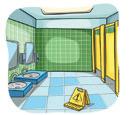


3. Identifying the Rooms in a School: Guide the children to refer to page 31 of the General Awareness book. Ask them to identify and colour the circles for the rooms they have seen in their school. Assist those who need help.
If possible, take the children for a short walk around the school. Stop at each place and help children identify it.







LO: Children will practise reading and writing CVC words with the middle /a/ sound and identify sight words through guided activities.
Resources: Reader, page 1; Literacy Workbook, pages 9–10
1. Revising the CVC and Sight Words: Write the CVC words from page 1 of the Reader on the board. Read them aloud, emphasising the middle /a/ sound. Invite a few children and say a word and ask them to identify it on the board. Write sight words on the board and read them aloud. Ask children to read the sight words with you and underline each with a pencil.
























2. Guided Reading: Read aloud the sentences from page 1 of the Reader. Ask children to repeat after you while pointing to each word with their finger. Make sure the repetition happens at each sentence level.






3. Reading Practice: Call children one by one to read a sentence from the Reader. Encourage others to repeat after them. Assist those who need help.





















Encourage children to point to each word and read slowly, one word at a time.
4. Writing CVC Words: Ask children to open page 9 of the Workbook. Help them read the CVC words, then guide them to trace and write them.




Refer to page 10 of the Workbook. Trace and write the CVC words. Practise reading words with the middle /a/ sound at home.


LO: Children will identify, describe, and find semicircle, star, and diamond shapes in their surroundings.
Resources: Numeracy Workbook, page 15; flashcards of shapes: semicircle, star, and diamond (from Skillbook)
1. Shapes Talk: Show flashcards of a semicircle, star, and diamond one by one. Ask:
• What does this shape look like?
• Have you seen something like this before?
• Can you name any objects in this shape? Encourage responses and introduce real-life objects related to each shape.
2. Shapes and Objects: Draw the three shapes on the board. Call one child at a time and say a shape name (e.g., semicircle). Ask the child to refer to the Skillbook and show the corresponding flashcard. Repeat until each child has had a turn.
3. Semicircle, Star and Diamond: Guide children to open page 15 of the Workbook. Ask them to identify the shapes given. Help them trace over the semicircle, star, and diamond. Let them match objects to their corresponding shapes.





LO: Children will understand how flowers absorb water through their stems in a fun experiment. Resources: STEM Exploration, pages 7–8; materials brought by children from home
1. Recap: Show the children the flower from the previous session. Ask them: Did the flower drink the coloured water? Are the petals white or a different colour?
2. Magic Flower Experiment: Distribute cups with coloured water to small groups. Assist children in cutting the flower stems at an angle. Place the flowers in the cups. Ask: Do the petals change colour immediately? Explain that it will take a few hours for the colour to travel up the stem. Guide children to open to page 8 of STEM Exploration and answer the questions based on their observations. Assist those who need help.




Domain Topic of the Day Book & Page
Circle Time
Shopping Bag Game
General Awareness Good Habits at School
Foundational Literacy Read and Match
General Awareness, pages 32–33
Literacy Skillbook, page 29; Literacy Workbook, page 11
Foundational Numeracy Complete the Patterns Numeracy Skillbook, page 22; Numeracy Workbook, page 16
DIY Rhyme: My Little Hands Rhymes and Stories, page 21
LO: Children will develop cognitive and listening skills through a fun game.
1. Warm-Up: Gather children in a circle and say: Let’s play a fun game about shopping! Ask: What do we buy from the market? Welcome responses like fruits, vegetables, and snacks. Explain: We will take turns remembering and adding items to our shopping list!
2. Shopping Bag Game: Start by saying: I went to the market and bought an apple. The next child repeats and adds an item: I went to the market and bought an apple and a banana. Continue around the circle, helping children recall the list and making sure each child gets a chance to participate. Encourage children to listen carefully and help if someone forgets.
Instead of shopping, ask children to say what they had for breakfast: For breakfast, I ate toast. The next child repeats and adds their item: For breakfast, I ate toast and an egg.

LO: Children will learn and practise good habits to follow at school.
Resources: General Awareness, pages 32–33
Introduction
1. Talking About School Habits: Ask: What do we do at school every day? Encourage children to share their thoughts. Say: At school, we learn, play, and have fun, but we also need to follow good habits to keep ourselves and our friends happy and safe!
2. Discussion on Good Habits: Talk about simple good habits such as raising hands before speaking, keeping the classroom clean, sharing, using kind words, and listening to the teacher. After each habit, ask: Why is this important? Encourage children to think and respond.
3. Act It Out: Call children one by one and give them a good habit to demonstrate, such as:
• Asking for permission before leaving the classroom.
• Putting away toys after playtime.
• Waiting for their turn in a game.
• Greeting the teacher in the morning. Praise them for good behaviour and explain why each good habit helps everyone.
4. Good Habits at School: Refer to pages 32–33 of the General Awareness book. Encourage the children to look at the images carefully and identify the good habits. Then, allow them to colour the circle red if it shows a good habit and colour the circle blue if it shows a bad habit.



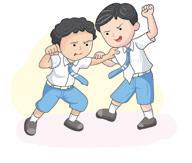

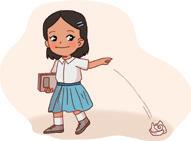


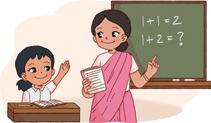


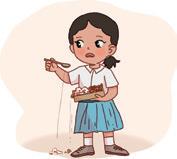



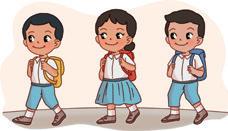

Model good habits daily. Praise children when they follow rules like sharing, raising their hands to speak, or keeping their classroom tidy.





LO: Children will read simple sentences with three letter words with middle /a/ sounds and match them with the correct pictures.
Resources: Literacy Skillbook, page 29; Literacy Workbook, page 11; a mat; a bat
1. Warm-Up: Keep a bat on the mat and ask: What do you see? Encourage children to share responses. Then say: The bat is on the mat. Ask children to repeat after you. Write the sentence on the board.
2. Reading Practice: Write a few sentence on the board:
• The cat is on the mat. • The fan is on the van.
• The lad and the bat. • The cat is in the cab.
First, read aloud these sentences and ask children to repeat after you. Then, invite a few children to read aloud the sentences.
3. Read and Match: Ask children to open page 29 of the Skillbook. Call children one by one and guide them to read aloud one sentence from the page. Ensure everyone gets a turn. Finally, ask children to look at the pictures and tick the correct sentences.







Refer to page 11 of the Workbook. Read the sentences and match them with the pictures given.
LO: Children will identify and complete shape patterns.
Resources: Numeracy Skillbook, page 22; Numeracy Workbook, page 16
1. Warm-Up: Draw a simple shape pattern on the board. Point to the missing shape and ask: What comes next? Welcome responses and encourage reasoning.
2. Exploring Patterns: Draw incomplete patterns on the board. Call children one by one to complete the pattern. Repeat with different shapes each time you call the children (e.g. stars, semicircles, diamonds). Assist those who need help.
3. Complete the Patterns: Guide children to open page 22 of the Skillbook. Ask them to identify the shapes given. Let them complete the patterns as instructed in the book. Then, ask them to refer to page 16 of the Workbook and identify the shapes given there. Guide them to draw the missing shapes to complete the patterns.









LO: Children will recite the rhyme My Little Hands with actions to develop rhythm and coordination.
Resources: Rhymes and Stories, page 21
1. Warm-Up: Show your hands and wiggle your fingers. Ask: What can we do with our hands? Welcome responses like clapping, waving, and drawing. Say: Today, we will learn a fun rhyme about our little hands!
2. Rhyme Time: Recite My Little Hands slowly with actions. Ask children to follow along. Repeat 3–4 times, encouraging them to join in. Invite a few children to perform with actions. Praise their efforts.



Domain
Topic of the Day
Circle Time Passing a Compliment
General Awareness My School
Book & Page
Foundational Literacy It Is Literacy Skillbook, page 30; Literacy Workbook, page 12
Foundational Numeracy What Comes Next? and Making Patterns Numeracy Workbook, pages 17–18
DIY Rhyme: My Little Hands Rhymes and Stories, page 21
LO: Children will learn to give and receive compliments to promote kindness and positivity.
Resources: A soft toy
1. Warm-Up: Gather the children in a circle. Show a small soft toy and say: Today, we will play a game where we say nice things to our friends!
2. Passing a Compliment: Model the activity by turning to the child on your right, passing the soft toy, and saying: Sara is very kind. Encourage the child to pass the object to the next child and give him/her a compliment. Guide them with simple ideas, such as:
• Deepak shares his toys.
• Neha is always helpful.
• Aarav is a good friend.
At the end, say: Wasn’t it nice to hear kind words? Being kind to others make us feel happy! Let’s remember to be kind every day.

LO: Children will express why they love their school and engage in a simple act of kindness for their school. Resources: Red coloured paper (cutouts into heart shape); crayons
1. Warm-Up: Ask: What do you love about our school? Welcome responses like friends, teachers, playground, or books. Say: School is a special place where we learn, play, and make happy memories!

2. Hearts for the School: Give each child a small paper heart. Say: Let’s fill our school with love! Ask them to complete the sentence I love my school because... and write/draw their answer on the heart. Once done, call one child at a time and let them take turns sharing their answers. Assist those who need help. Then, display the hearts on a board or wall to create a We Love Our School collage.
3. Secret Kindness Mission: Tell children: We will do a secret kindness mission for our school! Talk about small acts of kindness (like picking up paper, arranging books, or wiping desks). Let children choose one and complete the task quietly like kind superheroes. Say: When we take care of our school, it stays a happy place for everyone!







LO: Children will be able to form simple sentences using “It is” to describe objects. Resources: Literacy Skillbook, page 30; Literacy Workbook, page 12; classroom objects (ball, book, pen, chair, etc.)
1. Warm-Up: Shows an object (e.g., a ball) and say: Look! It is a ball! Repeat with 2–3 more items. Ask: What is this? And guide children to respond: It is a ____.
2. Explaining the Concept: Write a sentence on the board like It is a ball. Explain: We say It is when we talk about one thing “It” is used of plants, animals and things. Point to some real classroom objects to show more examples:
• It is a chair.
• It is a book.
• It is a pen.
• It is a toy.
First, read aloud these sentences and ask children to repeat after you. Then, invite a few children to read aloud the sentences.
3. It Is: Ask children to open page 30 of the Skillbook. Guide the children to identify the pictures and say the CVC words. Then, ask them to read, understand and write the sentences using ‘It is…’








Refer to page 12 of the Workbook. Look at the pictures and write the sentences using ‘It is…’
LO: Children will identify patterns in colours, shapes, numbers, and objects.
Resources: Numeracy Workbook, pages 17–18; colourful beads or crayons (red, blue, yellow); shapes flashcards (from Skillbook)
1. Warm-Up: Show a simple colour pattern (red, blue, red, blue, __?). Ask: What comes next? and let children guess. Repeat with a shape pattern (circle, square, circle, square, __?).
2. Building a Pattern: Make the children sit in small groups. Provide the objects and shapes flashcards to the children. Ask each group to create two patterns using the materials. Assist those who need help.
3. What Comes Next?: Guide children to open page 17 of the Workbook. Ask them to identify the shapes given. Let them complete the patterns as instructed in the book.
4. Making Patterns: Ask them to refer to page 18 of the Workbook and identify the shapes given there. Guide them to draw the missing shapes to complete the patterns.











LO: Children will recite the rhyme My Little Hands with actions to develop rhythm and coordination. Resources: Rhymes and Stories, page 21
1. Rhyme Time: Recite My Little Hands and ask the children to recite it with you. Repeat 3–4 times, encouraging them to join in. Invite a few children to perform with actions. Praise their efforts warmly.
2. Passing the Ball: Gather the children in a circle. Call a child one at a time. Ask them to share one activity they can do with their hands. Repeat the activity till each child gets a chance to participate. Assist those who need help.











Domain
Learning Outcome
General Awareness
Children will identify the importance of school, different rooms in school, practise good habits, and express their love for school.
Resources General Awareness, pages 30–33; Objects that can be used as a mic (pens, pencils, rulers, etc.)
Suggested Method
Ask one child to come in front. Hand them the object (pen, pencil, etc.) to it like a mic.
Ask them questions like:
• Name two things you learn in school?
• Name two good habits that you must follow in school?
• Name any two rooms in school?
• Why do you love your school?
Clap loudly for each child. Repeat until all children get a chance.
Support for Struggling Learners
Domain
Make the children sit in a circle. Refer to the General Awareness book pages 30–33 and explain the different types of things we learn in school by pointing at each picture given. Say the names of the things aloud and allow the children to say the names after you. Repeat the same with the different rooms and good habits.
Foundational Literacy
Learning Outcome Children will read simple sentences with the middle /a/ sound.
Resources Reader
Suggested Method
• Call children one by one and ask them to read the sentences from the Reader.
• Ask them to say and write any two CVC words on the board.
• Ask them to write any two sight words on the board.
• Clap loudly for each child. Repeat until all children get a chance.
Support for Struggling Learners
Domain
Gather the learners in a circle. Show them some objects or pictures of objects starting with the middle sound /a/. For example, say: /m/ /a/ /t/ and ask the children to repeat after you. Repeat the same for the other pictures given in the Reader. Guide them to read the sentences and encourage children to point to each word and read slowly, one word at a time.
Foundational Numeracy
Learning Outcome Children will identify objects that have the shapes of a diamond, semicircle and star.

Resources Chalks; flashcard of shapes-diamond, star and semicircle (from Skillbook)
Suggested Method
Support for Struggling Learners
Give each child a shape flashcard. Draw a diamond, star, and a semicircle on the board. Call children one by one and guide them to match their flashcard with the correct shape by placing it on the corresponding drawing. Ensure every child gets a turn. Celebrate their effort with applause and a smiley sticker.
Gather the learners together and draw a diamond on the board. Say: This is a diamond. It has four sides but it looks like a kite! Then, ask the children to find and hold up their flashcard showing a diamond. Repeat the same process for a star and a semicircle, guiding the children to recognise and match each shape correctly.



































Domain
Topic
Circle Time Move, Freeze and Partner Play
General Awareness People Who Help Us
Foundational Literacy Middle Sound /e/
Foundational Numeracy Forward Counting (1–10)
DIY A Beautiful Butterfly
Book & Page
General Awareness, pages 34–35
Literacy Skillbook, pages 31–32
Numeracy Skillbook, pages 23–24
Art and Craft, page 11
LO: Children will play a fun game of finding a partner and doing some fun actions together.
Resources: Music
1. Dancing to the Music: Play a lively, child-friendly song. Encourage children to move, dance, hop, or simply walk around the circle freely.
2. Finding a Partner: Pause the music for a moment and say: Freeze! Let each one of us quickly find a partner! Allow children to take some time to pair up.



3. Action Time: Call out a simple action such as clap your hands/jump up/spin around/give a high five to your partner. Both partners do the action together. Start the music again and continue for a few rounds so children get to move and pair with different friends.
If there is an odd number of children, one child can partner with you so no one is left out.

LO: Children will identify different people who help us and the tools they use.
Resources: General Awareness, pages 34–35
Introduction
1. Warm-Up Discussion: Ask: Who helps us get ready for school at home? Who helps us study in school? Encourage each child to give responses. Then say: There are many people who help us in different ways. They use different tools to do their work. Let’s learn about them today!
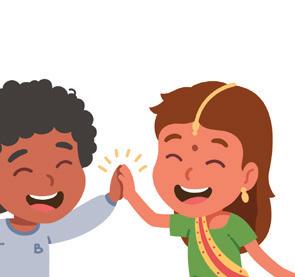


2. People Who Help Us: Ask children to open page 34 of the General Awareness book. Show pictures one by one and discuss them. Say, for example: This is a housemaid. She helps in cleaning our homes and keeping them tidy. Ask the children to repeat the sentences after you. Repeat each helper 2–3 times for reinforcement.
3. Helpers and Their Tools: Ask children to open page 35 of the coursebook. Point to the helpers on the left and name them. Example: This is a tailor. He stitches our clothes. Encourage children to repeat after you. Repeat each name and sentence 2–3 times. Point to the tools on the right and discuss them. Say, for example: This is a hairdryer. This is used by a barber. Then say: This is a mixer grinder. It is used by a cook or chef. Ask children to repeat each sentence slowly with you.





















LO: Children will recognise and understand middle /e/ sounds in CVC words. Resources: Literacy Skillbook, pages 31–32; some pictures objects with middle /e/ sound (pen, red, peg)
1. The Middle /e/ Sound: Write the letter ‘e’ on the board and say: This is the letter e. It makes /e/ sound. Show different pictures or objects, emphasising the middle /e/ sound and as you say each word aloud. Ask children to repeat after you, really stretching the middle /e/ sound. For example: pe - e - n / he - e - n / re - e - d.
2. Blending Three Letter Words: Write simple CVC words with the middle /e/ sound like PEN, HEN, NET, TEN etc. on the board. Point to each letter and sound them out slowly, blending the sounds together in the end. For example: /p/- /e/ - /n/ → pen. Ask children to repeat many times after you, helping them blend and read the words fluently.
3. Middle Sounds /e/: Writer ‘en’ on the board and say: We will read the words that have middle sound /e/ and end with the sound /n/. Guide children to open page 32 of the Skillbook. Write the ‘en’ words on the board. Read the words aloud one by one as done in step 2. For example: /h/ - /e/ - /n/ → hen; /t/ - /e/ - /n/ → ten. Repeat the same process for other word families too.


















4. Matching Pictures with Words: Ask children to open page 32 of the Skillbook. Guide them to identify the pictures and colour the words that match the pictures.
LO: Children will count till number 10 and identify the missing numbers between 1–10.
Resources: Numeracy Skillbook, pages 23–24
1. Counting from 1–10: Begin the session by encouraging all children to count numbers 1 to 10 aloud together. Say each number clearly and ask the children to repeat after you. Once they are familiar, invite a few children one by one to count from 1 to 10 on their own. Gently support those who need help and praise everyone’s effort.
2. Finding the Missing Numbers: Write numbers 1–10, on the board, with a few numbers missing in between. For example: 1, 2, __, __, 5, ___, 7, 8, ___, 10. Invite a few children to identify the missing numbers and then fill in the blanks.
3. Missing Numbers: Ask children to open page 24 of the Skillbook. Guide them to read the numbers, identify the missing ones, and write them correctly on the number tracks.






Complete writing numbers 1–10 on page 23 of the Numeracy Skillbook.
LO: Children will decorate a butterfly with colourful pens.
Resources: Art and Craft, page 11; colourful pens (yellow, green and blue)
1. Warm-Up Discussion: Ask children to open page 11 of the Art and Craft book. Show the picture and ask: What is this? Take a few responses and say: This is a butterfly. Then, ask children to share different colour butterflies that they have observed in their surroundings.
2. A Beautiful Butterfly: Help children identify the different colours used to decorate the butterfly. Demonstrate and guide children to decorate the butterfly by making dots on it using colourful pens.





Circle Time Think and Try!
General Awareness People Who Help Us
General Awareness, pages 34–35
Foundational Literacy Middle Sounds /e/ Literacy Workbook, page 13
Foundational Numeracy Group of 10 Numeracy Skillbook, page 25
DIY A Walrus
Art and Craft, page 12
LO: Children will learn to solve a simple problem by thinking, trying, and working together. Resources: A soft toy; classroom objects like: chairs, books, water bottles (to make obstacles or paths)
1. Warm-Up Story: Gather the children in a circle, if possible. Show Teddy and a few obstacles (e.g., water bottles or chairs on the floor) and say: Teddy wants to go home. But oh no! There are some chairs on the way. Can we help Teddy find a way to his home?
2. Problem Solving Time: Let the children suggest how Teddy can be helped to reach home. You may give them question prompts, such as:
• Should we move the blocks?
• Can we go around them?

LO: Children will identify different people who help us and the tools they use through fun riddles. Resources: General Awareness, pages 34–35; flashcards of helpers (from Coursebook)
1. Identifying the Helpers: Hand out the flashcards to the children and call out the name of the helpers one by one. For example, say: Can you show the picture of a farmer? Ask children to hold up the flashcard showing the helper. Monitor and guide the children as required. Assist those who need help.
2. People Who Help Us: Ask children to open pages 34 and 35 of the General Awareness book. Recall the helpers, the works they do and the tools used by them by referring to the pictures shown on the pages. Also, introduce other helpers like farmers (who grow crops for us); police officers (protects our city); vet (a doctor who takes care of pets) and firefighters (who protects us in case of fire).
3. Riddle Time: Ask some riddles to the children and let them identify the helpers and their tools. You can ask them riddles, such as:
• I collect trash and garbage from your house daily. Who am I? (Garbage Collector)
• I protect and look after your home and school, keeping the places safe. Who am I? (Guard)
• I make wooden furniture for your home and school. Who am I? (Carpenter)
• A tailor uses me for sticking clothes. Who am I? (Needle and Thread)
• A barber uses me to dry your hair. Who am I? (Hairdryer)





















LO: Children will read the CVC words with middle sound /e/ and match them with the correct pictures.
Resources: Literacy Workbook, page 13
Introduction
1. Reading Time: Write simple CVC words with middle /e/ sound like: PEN, HEN, NET, RED etc. on the board. Read each letter first and then read it together as a word. For example: /h/ - /e/ - /n/ → hen.Then, invite a few children to read the words individually.
Practice
2. Middle Sounds /e/: Ask children to open page 13 of the Workbook. First, read aloud the words one by one. Then, guide the children to identify the pictures and match them with the correct word.












LO: Children will understand the concept of grouping objects into 10 through hands-on activities.
Resources: Numeracy Skillbook, page 25; objects like: ice-cream sticks, pencils, crayons, books, erasers (10 pcs each)
Introduction
1. Counting Till 10: Show 10 fingers and say: Let’s count to 10 using our fingers! Now show 10 crayons and say: This is a group of 10. Can you say group of 10? Repeat with another set (e.g., ice-cream sticks, pencils) to reinforce.
2. Making Group of 10: Divide children into small groups. Give each group a tray with mixed objects (books, erasers, crayons, etc.). Say: Can you find and keep only 10 things together? Help them count and group 10 items. Once done, say: Well done! You made a group of 10! Assist those who need help.

3. Group of 10: Ask children to open page 29 of the Skillbook. Guide them to count the apples in the picture and identify the number symbols.





























































Practise making a group of 10 by counting different objects at home like spoons, forks, fruits, etc. DIY












LO: Children will develop their fine motor skills by colouring the picture of a walrus using their fingerprints.
Resources: Art and Craft, page 12; brown watercolour
1. Warm-Up Discussion: Ask children to open page 12 of the Art and Craft book. Then, ask: Can you identify the animal? Take a few responses and say: This is a walrus. It is found in polar regions. Polar regions are very cold.
You can give examples of other common polar animals like polar bears and penguins.


2. A Walrus: Demonstrate and guide them to dip their fingers in brown colour and make fingerprints within the outline of the walrus.

Circle Time
Earth Helpers
Book & Page
General Awareness Story: The Great Rescue General Awareness, pages 36–37
Foundational Literacy Puzzle Time Literacy Skillbook, page 33
Foundational Numeracy Grouping in Tens Numeracy Skillbook, pages 26–27
DIY Story: The Blue Jackal Rhymes and Stories, pages 22–26
LO: Children will identify helpful and harmful actions for the environment and suggest ways to protect nature.
1. Warm-Up Discussion: Greet the children warmly and ask: What do you see around you in nature? (e.g., trees, flowers, birds, water). Then, ask: What can we do to take care of the Earth? Welcome responses like throwing garbage in the bin, planting trees, not wasting water.
2. Think and Respond: Give different situations to the children and ask them to say Yay! and clap if it is good for the Earth. If it’s not good for the Earth, ask them to say Oh no!
3. Action Time: Call out situations and ask children to act how they would help in those situations:
• A plant is drooping and looks thirsty.
• You see litter in the park.
• The tap is running in the washroom.
Let them use gestures to show helping actions (watering, picking trash, turning off the tap).

LO: Children will listen to a story The Great Rescue and understand how firefighters and police help us.
Resources: General Awareness, pages 36–37; flashcards of helpers (from Coursebook)
1. Warm-Up Discussion: Hand out the flashcards to the children. Ask them to show the flashcards of a firefighter, a doctor and a police officer. Ask: How does a firefighter / a doctor / a police officer helps us? Listen to a few responses and say: Today we will listen to a story on a firefighter, a police officer and a doctor.

2. Picture Talk: Guide children to open pages 36 and 37 of General Awareness book. Show the pictures to the children and ask questions on them.
3. Interactive Read-Aloud: Read aloud the story The Great Rescue with expressions and voice modulation. Pause in between to show the pictures.
Encourage each child to participate and give respond.

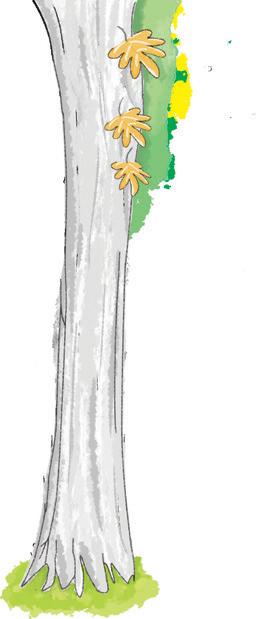

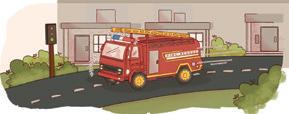



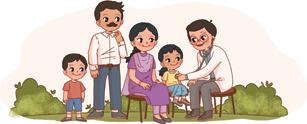




Ask children to share whether they have seen a fire truck on the road and heard the siren played by the truck.





LO: Children will recognise, read, and spell CVC words with the middle sound /e/. Resources: Literacy Skillbook, page 33
1. Recap: Write some CVC words with middle sound /e/ on the board. For example: PET, NET, TEN, MEN, PEN etc. Point to each letter and sound them out slowly, blending the sounds together in the end. For example: /p/ - /e/ - /n/ → pen. Ask children to repeat many times after you, helping them blend and read the words fluently.
2. Guess the Missing Letter: Call children one by one. Say aloud a CVC word (e.g. PEN), and write its spelling on the board with one letter missing (e.g., p e __). Guide children to guess the missing letter. Repeat with 8–10 different words.
3. Puzzle Time: Ask children to open page 33 of the Skillbook. Guide them to complete the puzzle by filling in the missing letters.















Find any three objects with middle /e/ sound at home. Write the spelling of the words and bring it to the class the next day.

LO: Children will count objects by grouping in tens.
Resources: Numeracy Skillbook, pages 26–27; 10 bundles of ice-cream sticks with 10 ice-cream sticks in each bundle; some loose ice-cream sticks
1. Counting Groups of 10: Begin by counting and showing 9 ice-cream sticks to the children. Then, say: Now let’s add one more stick to 9. That makes 10! These 10 sticks make one bundle of 10. Next, show 2 bundles of 10 and say: 2 bundles of 10 make 20. Continue adding bundles one by one, saying aloud: 3 tens make 30, 4 tens make 40. Continue all the way up to 10 tens to make 100.
2. Counting Time: Call children one by one. Say aloud a number (e.g. 40) and ask children to pick up that many bundles to represent the number. Ensure everyone gets a turn.
3. Grouping in Tens: Ask children to open pages 26–27 of the Skillbook. Show that each group has 10 pencils. Then help them count the groups and say the numbers. Repeat counting 3–4 times for practice.













LO: Children will listen to and discuss the pictures from the story The Blue Jackal. Resources: Rhymes and Stories, pages 22–26; blue watercolour; cotton or white cloth
1. Experiment Time: Show the children a piece of white cotton or white cloth and ask: What do you think will happen if we dip this into blue colour? Encourage and welcome all responses. Then, dip the cotton into the blue colour and take it out. Explain clearly: Look! The white cotton has turned blue. When we dip something into coloured water, it changes its colour to the colour in the coloured water.
2. Picture Talk: Ask children to open pages 22–26 of the Rhymes and Stories book. Show the pictures one by one and discuss them.

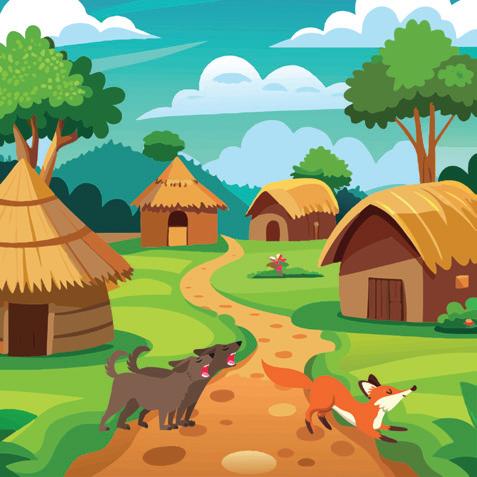

Circle Time
Talking about Feelings
Book & Page
General Awareness Hawkers General Awareness, page 38
Foundational Literacy Colour by Family Literacy Skillbook, page 34
Foundational Numeracy Counting in Tens Numeracy Workbook, page 19
DIY Story: The Blue Jackal Rhymes and Stories, pages 22-26
LO: Children will recognise and name basic emotions, and develop their socio-emotional skills.
1. Feelings Circle: Gather the children in a circle, if possible. Say: Let’s go around the circle and each share how we are feeling today. I feel happy today because I saw the sunshine. Encourage children to use words like happy, sad, excited, tired, angry, scared, proud, etc. If needed, offer choices: Do you feel happy like when you eat your favorite food? Or Do you feel sleepy like when it’s bedtime? Ensure each child gets a chance to participate.
Accept all feelings without judgment. Use supportive phrases like That’s okay to feel that way.
2. Feelings Action Game: Say an emotion and ask children to show it using only their face and body. Example: Show me what a happy face looks like… now show me angry… sleepy… surprised! Then switch it up by saying: Now, walk around the circle like you’re feeling. Let them move like a happy child skipping, a sad child walking slowly, or a tired child yawning. Assist those who need help.

LO: Children will identify the names of different hawkers and the things they sell.
Resources: General Awareness, page 38
1. Warm-Up Discussion: Tell the children a short story about hawkers and vendors. For example, you can tell them a story like this one:
Raju the hawker pushes his fruit cart every morning. He brings fresh apples and bananas to people’s homes. He rings his bell so everyone knows he is coming! Ask:
• Have you seen someone like Raju near your house?
• What did they sell?
Encourage each child to participate and respond.
2. Hawkers: Ask children to open page 38 of the General Awareness book. Point and show the pictures of the hawkers one by one and discuss them. For example: This is an ice-cream seller. He sells ice-cream. Repeat for all the sellers. Then, guide the children to match the sellers with the items they sell.


















LO: Children will identify the CVC words with the same middle and ending sounds.
Resources: Literacy Skillbook, page 34
1. Same Middle and Ending Sounds: Write a simple word (e.g., PEN) on the board and say it aloud. Then, write the next word (e.g., DEN) underneath and say: Pen, den—they sound the same at the end, which is ‘en’. Then, ask: Can you say other words that end with /en/ sound? Guide children to share their responses and write the words on the board. Repeat with other words ending with ‘et’, ‘ed’, ‘eg’ and ‘em’ sounds.
2. Identifying Words: Write down some CVC words ending with ‘en’, ‘et’, ‘ed’, ‘em’ and ‘eg’ in a random order on the board. Call children one by one and ask them to spot, circle and read aloud two words that have the same middle and ending sounds. Ensure everyone gets a turn.

3. Colour by Family: Ask children to open page 34 of the Skilbook. First, call children one by one and ask them to find and read aloud a word. For example, ask: Can you find a word that ends with the /en/ sound? Then, guide them to find the words ending with /ed/, /en/ and /eb/ sounds and colour them as per the given colour code.


Refer to page 34 of the Skillbook. Find the words ending with /eg/, /et/ and /em/ sounds and colour them as per the given colour code.

LO: Children will count the objects by grouping into tens.
Resources: Numeracy Workbook, page 19; 10 bundles of ice-cream sticks with 10 sticks in each bundle
1. Counting Using Bundles: Call children one by one. Keep a number of bundles on a table and ask children to count the bundles and identify the number. For example: Keep 4 bundles of 10 and guide the children to say: 4 tens are 40. Ensure everyone gets a turn.
2. Counting in Tens: Ask children to open page 19 of the Workbook. Guide them to count the bundles shown in the picture and write the correct numbers in the given boxes.
LO: Children will listen to and discuss the story The Blue Jackal.
Resources: Rhyme and Stories, pages 22–26

• Who was chasing the hungry jackal?
• What did the jackal see in the washerman’s house?
• Why did the dogs get scared?
• How did the jackal know that he was blue?
• What did the jackal tell the animals?
• What did the jackal do when he heard the other jackals howling?









































































1. Warm-Up Discussion: Begin by asking: What did we observe in the previous session when we dipped the white cotton in the blue paint? Let children share their responses freely. Then, say: The cotton turned blue. Today we will listen to the story of a jackal who turned blue after hiding in a tub of blue paint..
2. Interactive Read-Aloud: Read aloud the story The Blue Jackal with expressions and voice modulation. Pause at relevant intervals to show pictures and discuss the story by asking questions like:









Domain General Awareness
Learning Outcome Children will identify some common helpers and how they help us.
Resources Flashcards of helpers (from Coursebook)
Suggested Method Place the flashcards neatly in a row on the table. Call children one by one and ask them to pick up a flashcard. Guide them to identify the helpers and say how they help us. Also, ask them to mention a tool used by the helpers. Clap for each child and give them a smiley sticker. Ensure everyone gets a chance.
Support for Struggling Learners
Pair each learner with a confident learner. Ask them to refer to page 34 of the General Awareness book. The buddy points and says aloud the name of a helper and the learner repeats after the buddy. Also, ask the buddy to say how each helper helps us. Monitor and guide the pair as required.
Domain Foundational Literacy
Learning Outcome Children will read the CVC words with the middle /e/ sound.
Resources Objects or pictures of objects with the middle sound /e/
Suggested Method
Support for Struggling Learners
Call children one by one. Say aloud a word with middle /e/ sound. Guide children to spell the word and write it on the board. Then, ask them to write two other words with the same middle and ending sounds. Clap for each child and give them a smiley.
Gather the learners. Show them objects or pictures of objects with middle sound /e/ (e.g. pen) and write it on the board. Guide the children to read the individual sounds that blend together: /p/ /e/ /n/ - pen. Ask the children to repeat 3–4 times after you. Repeat as many words as possible.
Domain Foundational Numeracy
Learning Outcome Children will count numbers by grouping them in tens.
Resources Ice-cream sticks: 10 bundles with 10 ice-cream sticks in it; pencils; crayons
Suggested Method
Support for Struggling Learners
Call children one by one. Give them a set of bundles and say: 2 bundles of 10. Ask them to identify the number and say it aloud. Guide them to say, for example: 2 tens make 20. Clap for each child and give them a smiley.
Gather the learners, first guide them to count aloud from 1–10 and make a group of 10 using ice-cream sticks while counting. Say: This is 1 group of 10. Then show 2 bundles of 10 and say: 2 groups of 10 makes 20. Add one more and say: 3 groups of 10 makes 30. Continue adding bundles until 100 (10 groups of 10).


















Domain Topic of the Day
Circle Time
Memory Chain Game
General Awareness Odd One Out
Book & Page
General Awareness, pages 39–40
Foundational Literacy A Jet Reader, page 2; Literacy Workbook, page 14
Foundational Numeracy Numbers 11–20
DIY Lollipop Number Pops
LO: Children will develop listening and memory skills.
Numeracy Skillbook, pages 28–29
1. Warm-Up: Start with a fun, simple question: Do you remember what you had for breakfast today? Then say: We’re going to play a fun game using just our voices and our minds. It’s called the Memory Chain Game. We’ll take turns saying words, and we have to remember what our friends said before us.
2. Memory Chain Game: Ask the children to sit in a circle. Explain the rules clearly: I will start with a sentence. The next person repeats what I said and adds their own words. We go around to make a memory train! Start by saying: I went to the market and bought an apple. Ask one child to continue the sentence by adding an item. Continue with each child adding one more. Gently support any child who forgets.
Start with short, simple chains and use actions or expressions to help children remember.

LO: Children will identify different community helpers and the tools they use.
Resources: General Awareness, pages 39–40
1. Warm-Up: Greet the children warmly. Then, act out a helper’s role (e.g., pretend to saw like a carpenter or use fingers like scissors for a barber). Ask: Who am I? Encourage children to guess the helper. Then ask each child to share what they want to be when they grow up and why. For example, let them say: I want to be a doctor when I grow up. I will treat sick people. Welcome all responses.
2. Let’s Be Helpers: Say: Imagine we are in a busy town! Let’s become helpers and do our jobs! Call one child at a time to come forward. Call out a helper’s name (doctor, firefighter, teacher, etc.), and the child acts out their role. For example:
• Doctor: Pretend to check a friend’s heartbeat.
• Firefighter: Act like spraying water on fire.
• Postman: Pretend to deliver letters.
Encourage the other children to guess the helper. Make sure each child gets a turn and support those who need help.

3. Odd One Out: Refer to page 39 of the General Awareness book. Point to each picture and ask the name of the helper shown. Then let the children find and circle the items that do not belong to the helper in each set.















4. Matching Names: Refer to page 40. Point to the pictures and ask the children to identify and match each helper with their correct name.




























Let children take turns playing the roles of teacher and student, acting out classroom activities like reading, writing, or playing with school objects.

LO: Children will listen to, read, and write CVC words with the middle /e/ sound and read the sight words.
Resources: Reader, page 2; Literacy Workbook, page 14
1. Picture Talk: Ask children to open page 2 of the Reader. Point to a picture and ask: What do you see? Take a few responses and say: This is a hen Repeat with other pictures.
2. Explaining in Home Language: Read the lines from page 2 of the Reader and explain them in a mix of English and the home language to ensure understanding.
3. Modelling: Demonstrate how to read aloud the sentences from page 2. Read slowly but loudly with clear pronunciation and voice modulation.
4. Sight Words: Introduce the sight words from page 2. Write them on the board and read them aloud. Help children identify and read the sight words after you. Call children one by one, say a sight word, and ask them to point to it in the Reader.








5. Reading CVC Words: Introduce the CVC words on page 2. Write them on the board and guide children in reading them. For example, write hen and say: /h/ /e/ /n/ – hen. Emphasise the middle sound /e/ and ask children to repeat after you. Repeat with other CVC words containing the middle /e/ sound such as hen, ten, jet, gets, web, net and bed.
6. Writing CVC Words: Ask children to open page 14 of the Workbook. Help them read the CVC words on the page. Ask them to trace and write only the first two lines (red and bed). Assist those who need help.





Refer to page 14 of the Workbook. Trace and write the CVC words. Practise reading words with the middle /e/ sound at home.
LO: Children will identify that numbers 11–20 are made by grouping 10 objects (1 ten) and counting the leftover ones.
Resources: Numeracy Skillbook, pages 28–29; 20 ice-cream sticks; rubber bands
Introduction
1. Magic Number Talk: Recite the rhyme Magic Number Talk with actions. Encourage the children to sing along with you. Repeat the rhyme at least 2–3 times.
2. Numbers from 11 to 20: Refer to page 28 of the Skillbook. Say: Let’s count the pencils. Take 10 pencils and tie them with a rubber band to make a bundle. Say: 1 ten = 10 pencils. Now, add one pencil at a time and count aloud together up to 20. Follow the pictures in the book as you count.
Practice
Ten and one, here comes eleven, Ten and two, twelve is steppin’! Ten and three, thirteen’s here, Ten and four, give a cheer! Ten and five, fifteen’s alive, Ten and six, sixteen’s quick! Ten and seven, seventeen flies, Ten and eight, open your eyes! Ten and nine, nineteen is neat, Ten and ten, twenty’s complete!
3. Bundle of Ice-cream Sticks: Make the children sit in a circle. Call one child at a time. Say a number (e.g., 14) and ask: Can you make this number with sticks? Help them bundle 10 sticks to make 1 ten and use loose sticks for the ones. Repeat with numbers from 11 to 20. Make sure everyone gets a turn and help those who need it.
4. Count and Write: Ask the children to refer to page 29 of the Skillbook. Guide them to count and write the numbers from 11 to 20 in the boxes. Assist those who need help.








LO: Children will identify numbers 11 to 20 and develop fine motor skills through cutting, gluing, and decorating.
Resources: Circular cutouts of coloured paper; ice-cream sticks; crayons; glitter; stickers; glue sticks; paper cups (to hold lollipops); number flashcards (from Skillbook)
1. Warm-Up: Show a sample lollipop number pop. Say: Today, we’ll turn numbers into candy—lollipops full of sparkle and fun!
2. Making the Lollipops Number Pops: Sit the children in a circle and give them circle cutouts. Ask them to write numbers 11–20 (one per circle), then decorate each like a lollipop using glitter, stickers, and crayons. Glue an ice-cream stick to each to make lollipops. Place the lollipops in a paper cup to create a Number Pop Bouquet. Help children as needed.
Domain Topic of the Day
Circle Time
The Dog and The Bone
General Awareness Places Around Us
Book & Page
General Awareness, pages 41–42
Foundational Literacy A Jet Reader, page 2; Literacy Workbook, page 15
Foundational Numeracy Count Forward Numbers 11–20
DIY Rhyme: Play Safe, Play Smart
Numeracy Skillbook, page 30
Rhymes and Stories, page 27
LO: Children will develop gross motor skills through running and bending.
Resources: A soft toy
1. Warm-Up: Take the children outdoors or to the playground. Gather them in a circle and say: Today we are going to play an exciting game called The Dog and the Bone!
2. The Dog and The Bone: Explain the game to them. Then, divide the children into two teams standing in lines facing each other. Place a soft toy in the centre.
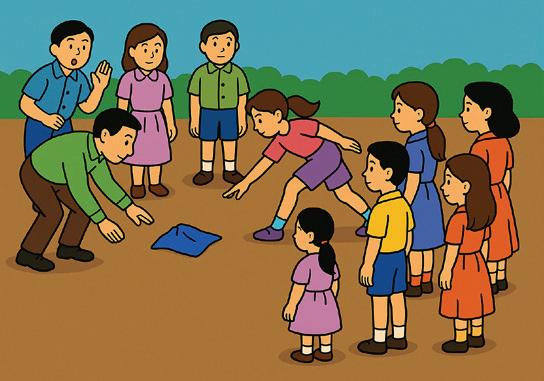
Call one child from each team to be the ‘dog’. Say GO!—they race to grab the toy and run back to their team. If tagged before reaching their line, the other team scores. Repeat until everyone gets a turn. Cheer each round and encourage fair play.
Use different animal themes such as The Cat and the Fish OR The Rabbit and the Carrot on different days to keep the game fun and imaginative!


LO: Children will identify common places in their surroundings, such as school, park, hospital, and market.
Resources: General Awareness, pages 41–42
1. Warm-Up: Gather the children and ask: Can you name some places where you go with your family? You may ask them a few guiding questions, such as:
• Where do we buy fruits? (Market)

• Where do we go when we’re sick? (Hospital)
• Where do we go to play? (Park)
Say: All these are places around us! Let’s learn more about them today.
2. Discussion time: Refer to pages 41–42 of the General Awareness book. Introduce each place one by one by pointing to the pictures. For example, point to the first picture and say: This is an airport. It is a big place where aeroplanes take off and land. People go to the airport when they want to travel to faraway places. Repeat with the other pictures. Use simple questions and prompts and ask:
• Have you been to the post office? What do we do there?
• Who works in a hospital? What do they do?
• What do you see in a market?
Welcome all responses.












3. Places Around Us: Let the children refer to pages 41–42 of the General Awareness book. Guide them to identify and tick the places they have seen around them.







LO: Children will practise reading and writing CVC words with the middle /e/ sound and identify sight words through guided activities.
Resources: Reader, page 2; Literacy Workbook, page 15
1. Revising the CVC and Sight Words: Write the CVC words from page 2 of the Reader on the board. Read them aloud, emphasising the middle /e/ sound. Invite a few children and say a word and ask them to identify it on the board. Write sight words on the board and read them aloud. Ask children to then call out sight words one by one and guide them to underline each with a pencil.
2. Guided Reading: Read aloud the sentences from page 2 of the Reader. Ask children to repeat after you while pointing to each word with their finger. Make sure the repetition happens at each sentence level.
3. Reading Practice: Call children one by one to read a sentence from the Reader. Encourage others to repeat after them. Assist those who need help.












Encourage children to point to each word and read slowly, one word at a time.
4. Writing CVC Words: Ask children to open page 15 of the Workbook. Help them read the CVC words, then guide them to trace and write them.
LO: Children will identify, count and write the numbers 11–20.
Resources: Numeracy Skillbook, page 30; number flashcards 11–20 (from Skillbook)
1. Rhyme Time: Recite the rhyme Magic Number Talk with actions introduced in the previous session. Encourage the children to sing along with you. Repeat the rhyme at least 4–5 times.
2. Numbers from 11 to 20: Call out a few numbers randomly and ask the children to refer to the Skillbook and show the number flashcards accordingly and say the number aloud. Then, ask them to count the numbers from 11 to 20 and place the flashcards in the correct order. Assist those who need help.





3. Counting Forward From 11 to 20: Guide the children to refer to page 30 of the Skillbook. Ask them to count and write the numbers from 11 to 20. Assist those who need help. 30


LO: Children will recite the rhyme Play Safe, Play Smart with actions and identify basic safety rules on the road.
Resources: Rhymes and Stories, page 27
1. Warm-Up: Gather the children in a circle and ask: Have you seen traffic lights? What do you do when you cross the road? Welcome all responses. Say: Today, we’ll learn how to stay safe on the road with a fun rhyme!
2. Rhyme Time: Recite the rhyme Play Safe, Play Smart. Ask children to follow along. Repeat 3–4 times, encouraging them to join in.



Domain Topic of the Day
Circle Time
Treasure Hunt
General Awareness Places Around Us
Book & Page
General Awareness, pages 41–42
Foundational Literacy This is… Literacy Skillbook, page 35
Foundational Numeracy Forward Counting and Numbers From 11 to 20 Numeracy Skillbook, pages 20–21
DIY Rhyme: Play Safe, Play Smart Rhymes and Stories, page 27
LO: Children will follow simple clues and instructions and make logical connections to solve mini-problems. Resources: Classroom objects (books, bag, bottle, pen,chalk, etc,.); basket; stickers
1. Warm-Up: Begin with a short discussion: What do you do when you can’t find something? How can we solve small problems together? Welcome all responses. Say: Today, we will become little detectives and go on a treasure hunt using our thinking skills!
2. Treasure Hunt: Hide 4–5 object-based clues around the classroom. Each clue leads to the next (e.g., an arrow pointing under a table, a red circle near the bookshelf, a clue saying Look where we keep our crayons, etc.). The final clue leads to the treasure (a basket with stars, stickers, or small rewards). Show the first clue and read it aloud. Children work together to think. Ask: Where should we go next? Let them discuss, explore, and find the next clue. Continue until they find the treasure! Celebrate and cheer together: We solved it!

LO: Children will identify the common places in their surroundings (e.g., school, park, hospital, market). Resources: General Awareness, pages 41–42
1. Warm-Up: Gather children and ask: Where do you go to learn? / Where do you go when you feel sick? / Welcome all responses. Welcome all responses.
2. Riddle Time: Call one child at a time. Say a riddle and ask the child to identify the place. Repeat the activity till each child gets a chance. Some of the riddles that can be asked are:
• When you feel unwell, I’m the place to go, Doctors and nurses help you, you know! (Hospital)
• Fruits and veggies, colours bright, buy them fresh, morning or night! What am I? (Market)
• I have swings and slides and lots of fun. You play and laugh under the sun! What am I? (Park)
• I carry letters far and wide, Put a stamp and send with pride! What am I? (Post Office)
• If there’s a fire, I rush to you. With water and a siren too! What am I? (Fire Station)
3. Places Around Us: Ask children to open pages 41–42 of the General Awareness book. Call one child at a time. Say the name of a place and have them point to its picture. Then ask them to say a few sentences about it (e.g., This is a supermarket. We buy fruits, vegetables, and toys here). Encourage them to talk about places they’ve visited with their parents. Help with sentences as needed. Repeat till everyone gets a turn.











LO: Children will be able to identify and use the phrase This is… correctly.








Resources: Literacy Skillbook, page 35; real classroom objects (e.g., pencil, book, bag, ball, toy)
1. Warm-Up: Greet the children and show them a few objects. Ask: What is this? and answer yourself: This is a pencil. This is a ball. Repeat with a few more objects and ask: What is this? and guide children to respond: This is a ____. Use voice modulation and excitement to capture attention.
2. Explaining the Concept: Write a sentence on the board like This is a book. Explain: This is a word we use when we talk about a thing that is near us. Point to some real classroom objects to show more examples:
• This is a chair.
• This is chalk.
• This is a pen.
• This is a marker.
First, read aloud these sentences and ask children to repeat after you. Then, invite a few children to read aloud the sentences.
3. This is: Ask children to open page 35 of the Skillbook. Guide the children to identify the pictures and say the CVC words. Then, ask them to read, understand, and write the sentences using ‘This is’.


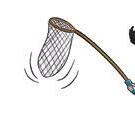





LO: Children will identify and fill in missing numbers in a sequence. Resources: Numeracy Workbook, pages 20–21; number flashcards 11–20 (from Skillbook); classroom objects (pencils, ice-cream sticks, etc.)
1. Missing Numbers: Write numbers from 11 to 20 on the board but leave out a few numbers (e.g., 11, 12, __, 14, __, 16…). Call one child at a time and ask: Can you find the missing number? Ask the child to show the correct number flashcard and say the number aloud. Repeat the activity till each child gets a turn.
2. Counting Objects: Place number flashcards (11–20) on a table. Call one child at a time. Say a number (e.g., 13), and ask the child to count out the correct number of objects and place them below the matching number card. Repeat till each child has a turn.
3. Forward Counting: Guide children to open to page 20 of the Workbook. Ask them to count forward and fill in the missing numbers in the number line. Provide help, if needed.
4. Numbers From 11 to 20: Ask children to turn to page 21 of the Workbook. Guide them to count the objects in each picture and write the correct number in the box. Assist those who need help.









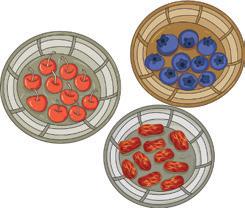
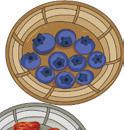













LO: Children will recite the rhyme Play Safe, Play Smart and identify the basic road safety rules. Resources: Rhymes and Stories, page 27
1. Rhyme Time: Recite the rhyme Play Safe, Play Smart. Ask children to follow along. Repeat 3–4 times, encouraging them to join in. Invite a few children to perform with actions. Praise their efforts warmly.
2. Colouring the Traffic Light: Provide each child with an A4 sheet and crayons. Begin by asking: Have you seen a traffic light? What colours does it have? Welcome all responses. Say: Today, let’s make a traffic light! Draw three circles (like a traffic light) on the board and ask the children to copy them on their sheets. Guide them, step-by-step, to:
• colour the top circle red and say: Red means stop!
• colour the middle circle yellow and say: Yellow means wait!


• colour the bottom circle green and say: Green means go! Help children label each colour and its meaning. Once done, invite each child to come forward, show their work, and say a sentence about their traffic light (e.g., Red means stop). Play Safe, Play Smart
Domain Topic of the Day
Circle Time Guess the Objects
General Awareness Places Around Town
Book & Page
General Awareness, pages 43–44
Foundational Literacy This is… Literacy Workbook, page 16
Foundational Numeracy Join the Dots Numeracy Workbook, page 22
DIY Role Play on Places Around Us
LO: Children will identify and describe objects using sensory words like soft, rough, cold, smooth, fluffy, etc.
Resources: Objects in the classroom (books, bag, bottle, pen, chalk, etc.); basket; stickers
1. Warm-Up: Start by asking: Feel you shirt. It is soft to touch. Then, ask them to feel their desk surfaces, erasers, their shoes and hair and share how each objects feels. Explain: Some things are soft like a pillow. Some are hard like a rock.
2. Guess the Objects: Say: Today we are going to play a game—we’ll guess the object using our imagination and senses. Ask the children to close their eyes and listen carefully. Describe an object using texture words and ask them to guess what it is. Use these examples:
• I’m thinking of something soft and fluffy that keeps you warm. What is it? (Answer: Blanket)
• It’s cold and hard. It melts if you hold it in your hand. What could it be? (Answer: Ice)
• It feels rough and scratchy, and you can use it to tie things together. (Answer: Rope)
• It is smooth and flat. You can see your face in it. (Answer: Mirror) Encourage children to think of their own objects and describe them using texture and sensory words. Support them with questions like: Is it soft or hard? Is it warm or cold? What does it feel like?


LO: Children will identify common places in their surroundings (e.g., school, park, hospital, market) and match the correct place name to its picture.
Resources: General Awareness, pages 43–44; flashcards of places around us (from Coursebook)

1. Warm-Up: Begin with a short discussion: Do you know where you go when you’re sick? Where do we play outside the house? Welcome all responses.
2. Discussion Time: Gather the children in a circle. Call one child at a time to come to the centre. Ask the child to pick a flashcard of a place and say a sentence about it. Model the response: This is a railway station. A railway station is a place where trains stop. People come here to catch a train and go to other places. Repeat the activity until each child gets a turn. Gently guide and assist those who need help in forming sentences.
3. Places Around Town: Ask the children to open their General Awareness book to page 43. Guide them to identify and name each place aloud. Say: Let’s help each person go to the right place! Ask them to draw a line through the maze to connect each person to where they need to go. Assist those who need help.
4. Matching Activity: Ask children to refer to page 44. Say: Look at each picture. Can you match it to the correct name? Guide them to draw lines from the picture to the correct place name. Support those who need help with reading or matching.








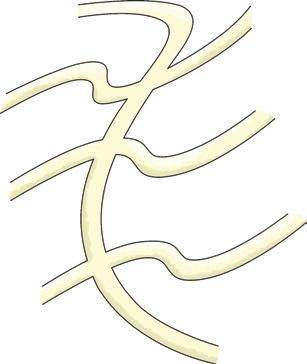

















LO: Children will be able to form simple sentences using ‘This is’ to describe objects. Resources: Literacy Skillbook, page 16; common classroom objects, such as: pencil, book, bag, ball, toy
1. Warm-Up: Show an object, like a pencil, and say: This is a pencil. Let children repeat after you. Repeat with 2–3 more classroom objects (e.g., book, toy, ball). Use a clear and cheerful tone to keep it engaging.
2. Speaking Circle: Gather the children in a circle. Pass around a classroom object (e.g., a ball, doll, or book). The child holding the object says: This is a ball. Repeat until every child gets a turn. Support those who need help saying the sentence.
3. This is: Ask children to open page 16 of the Workbook. Guide the children to identify the pictures and circle the correct words. Then, ask them to write the sentences using ‘This is a...’ Assist those who need help.


















LO: Children will identify and fill in missing numbers in a sequence.
Resources: Numeracy Workbook, page 22
1. Let’s Count and Play-Number Rhyme: Recite the rhyme Let’s Count and Play! with actions to the children. Ask children to follow along. Repeat 3–4 times, encouraging them to join in. Invite a few children to perform with actions. Praise their efforts warmly.
Let’s Count and Play! 1, 2, buckle my shoe, 3, 4, knock at the door. 5, 6, pick up sticks, 7, 8, lay them straight. 9, 10, do it again, Let’s count more—not just 10! 11, 12, ring the bell, 13, 14, all is well. 15, 16, jump so high, 17, 18, touch the sky! 19, 20, shout hooray— We’ve counted up, hip-hip-hooray!



2. Join the Dots: Ask the children to turn to page 22 in the Workbook. Guide them to count and join the dots from numbers 1 to 20 to complete the picture. Encourage them to say the numbers aloud as they join each dot. Provide support to children who need help with number recognition or sequencing.
LO: Children will identify and name different places around them. Resources: Flashcards of community helpers and places around us (from General Awareness book)
1. Rhyme Time: Begin by asking questions such as: Where do you go to study? Where do we go when we are sick? Welcome all responses.
2. Setting-Up the Role Play: Divide the children into small groups. Assign each group a place: school, hospital, market, police station, park, etc. Provide flashcards of helpers (teacher, doctor, shopkeeper, etc.) and the place they belong to.
3. Role Play: Encourage the children to act out simple and familiar roles with a short dialogue. Offer help with prompts if needed.








Domain General Awareness
Learning Outcome
Children will identify and name the places around us.
Resources A soft toy; General Awareness book, pages 41–42
Suggested Method Ask one child to come to the front. Ask them to hold a ruler as if it is a microphone. Ask them questions like: Name two places around us? / Name the community helpers who work there? / Why do we go to those places? / Which place do we love the most? Clap loudly for each child. Repeat until all children get a chance to answer.
Support for Struggling Learners
Make the children sit in a circle. Refer to the General Awareness book pages 41–42 and introduce each place one by one by pointing to the pictures. For example, point to the first picture and say: This is an airport. It is a big place where aeroplanes take off and land. People go to the airport when they want to travel to faraway places. Repeat with the other pictures.
Domain Foundational Literacy
Learning Outcome Children will read simple sentences with the middle /e/ sound.
Resources Reader
Suggested Method
• Call children one by one and ask them to read the sentences from the Reader.
• Ask them to say and write any two CVC words on the board.
• Ask them to write any two sight words on the board.
• Clap loudly for each child. Repeat until all children get a chance.
Support for Struggling Learners
Gather the learners in a circle. Show them some objects or pictures of objects starting with the middle sound /e/. For example, say: /h/ /e/ /n/ and ask the children to repeat after you. Repeat the same for the other pictures given in the Reader. Guide them to read the sentences and encourage children to point to each word and read slowly, one word at a time.
Domain Foundational Numeracy
Learning Outcome Children will identify, count and write the numbers from 11 to 20.
Resources Chalk; number flashcards from 11 to 20 (from Skillbook); pencils (20 pcs)
Suggested Method Give each child the number flashcards. Write the numbers from 11–20 on the board leaving a few missing numbers in between. Call one child at a time. Ask them to identify and write the missing numbers. Ask them to arrange the number flashcards in a correct sequence order. Clap loudly for each child. Repeat until all children get a chance.

Support for Struggling Learners
Gather the learners in a circle. Refer to page 28 of the Skillbook. Say: Let us count the pencils in the bundle. Count and take ten pencils. Tie them with a rubber band to make a bundle. Explain: 1 ten = 10. Now add one pencil at a time and count aloud together till 20. Encourage the children to follow the pictures in the book and count with you. Repeat the activity for all the other numbers till 20.


































Circle Time Simon Says: Do the Opposites
General Awareness Animals Around Us General Awareness, page 46
Foundational Literacy Recall ‘a’ and ‘e’ Literacy Skillbook, page 36
Foundational Numeracy Numbers 21 to 30 Numeracy Skillbook, page 31
DIY Exploring Leaves with all Five Senses STEM Exploration, pages 9–11
LO: Children will identify and practice opposites through a fun and engaging movement game.
1. Warm-Up: Gather children in a circle and say: Today, we will play a special Simon Says game. If I tell you to stand up, you will sit down. If I tell you to clap slowly, you will clap fast. Whatever I ask you to do, you will do the opposite!
2. Game Time: Start the game and call out an action, and ask the children to perform the opposite of what you say! Example commands:
• Simon says, Walk forward! → Children walk backward
• Simon says, Stand up! → Children sit down
• Simon says, Make a big circle with your hands! → Children make a small circle
• Simon says, Jump up! → Children crouch down
If you do NOT say Simon says before a command, children should not follow it!
You can also give turns to some children to give the commands while playing the game.

LO: Children will identify some common birds and animals around us through a fun movement activity.
Resources: General Awareness, page 46
1. Warm-Up: Ask: Name some common birds and animals that you see daily around you. Let children share their responses freely.

2. Move Like an Animal: Gather the children in a circle and say: Let’s pretend to be animals and birds we see around us! Call out a name (e.g., dog, cat, crow, pigeon). The children must move or make sounds like that animal. For example: Flap arms for a bird, hop like a rabbit, or meow like a cat.
3. Animals Around Us: Ask children to open page 46 of the General Awareness book. Point and show the animals one by one and name them. Ask children to say the name of the animals after you. Then, ask children to tick the birds and the animals that they see around their house. Assist those who need help.




















LO: Children will recall and identify the middle sounds /a/ and /e/ in CVC words.
Resources: Literacy Skillbook, page 36
1. Sound Stretching: Say: Let’s stretch some words and listen carefully to the middle sound! Slowly say words with middle /a/ sound like (cat, bag, fan) and middle /e/ sound like (pen, net, bed). Emphasize the vowel sounds: C-A-T - /k/ /aaa/ /t/ and ask: What sound do we hear in the middle? Repeat with other words, encouraging children to identify the middle sounds.

2. Missing Middle Sound: Write three-letter words on the board with the middle letter missing, (e.g., c_ t / p_ n / w __ b). Call children one by one to fill in the missing letters a or e by saying the word aloud.
3. Recall ‘a’ and ‘e’: Ask children to open page 36 of the Skillbook. Guide them to name the objects, say their names aloud, and identify the middle sound. Ask them to fill in the blanks with the missing letter.









Identify two objects with middle sound /a/ and two with middle sound /e/ at home. Try to write the words and bring it to the class the next day.
LO: Children will recognise and count numbers from 21–30 through hands-on grouping.
Resources: Numeracy Skillbook, page 31; 3 bundles of 10 ice-cream sticks; loose ice-cream sticks; rubber bands
1. Grouping in Tens and Ones: Make three bundles of 10 sticks each and tie them with a rubber band. Hold up a bundle and say: These are 10 sticks. Hold up another bundle and say: Now we have 20 sticks Add one loose stick and say: Now it’s 21. Keep adding sticks one by one, counting up to 30. Repeat counting the numbers 3–4 times for reinforcement.
2. Numbers 21 to 30: Ask children to open page 31 of the Skillbook. Guide them to look at the pictures and count from 21 to 30. Repeat counting 2–3 times with the help of the pictures.
3. Making Number Group: Call children one by one. Give each child 3 bundles of 10 and loose sticks. Call out a number (e.g., 24), and ask children to show it using two bundles of 10 and 4 loose sticks. Repeat with different numbers and ensure every child gets a turn.
LO: Children will explore different types of leaves using their senses.







Resources: STEM Exploration, pages 9–11; some green leaves; dried leaves; basil; coriander; mint leaves
1. Warm-Up: Pass around some leaves and ask children to observe the leaves. Then, invite a few children to share their observations.
2. Sense and Explore Activity: Call children one by one and guide them to explore the leaves:
• Sight: Place all the leaves on a tray. Ask children to observe and describe their shapes, sizes, and colours.
• Touch: Let children gently touch and compare the textures—Which one is the smoothest? Which one has tiny bumps?










• Smell: Crush the leaves slightly and let children take turns smelling them. Ask: Does it smell fresh? Does it remind you of food at home?
• Taste: (coriander, basil or mint leaves only) Give them small pieces to taste. Ask: Do you like the taste? Is it sweet, sour, or spicy?
• Hear: Guide children to crush some dry leaves and ask—Do you hear any sound?
Ensure that the basil, coriander and mint leaves are cleaned thoroughly before tasting.

Domain
Topic of the Day
Circle Time Float or Sink
Book & Page
General Awareness Animals Around Us General Awareness, pages 46–47
Foundational Literacy Recall /a/ and /e/ Literacy Workbook, page 17
Foundational Numeracy Counting forward from 21 to 30 Numeracy Skillbook, page 32
DIY Exploring Leaves with All Five Senses STEM Exploration, pages 9–11
LO: Children will explore the concept of sinking and floating through hands-on activity.
Resources: Large clear tub/bucket filled with water; a mix of commonly-found objects: spoon, plastic toy, leaf, stone, sponge, coin, crayon, etc.
1. Warm-Up Discussion: Gather the children around the tub, if possible. Ask: What do you think will happen if I drop this in water? Introduce the words ‘sink’ (goes down) and ‘float’ (stays on top).
2. Experiment Time: Hold up one object at a time. Ask: Do you think it will sink or float? Let’s find out! Let children take turns dropping objects into the tub and observing what happens. Make sure each child participates and gets their chance.
3. Wrap-Up Talk: Ask: What kind of things float? Listen to their responses and then tell that that things that are light float while things that are heavy sink.

LO: Children will identify some common birds and animals and trace their names.
Resources: General Awareness, pages 46–47
1. Bird or Animal: Tell children that they must flap their hands like wings when they hear the name of a bird or hop when it is an animal. Then, name some common birds and animals. Monitor and guide as required.
2. Animals Around Us: Ask children to open page 46 of the General Awareness book. Recap the names of the birds and animals by pointing to each picture given. Encourage children to share the names of the birds and animals that they have seen around them.
3. Tracing Names of Animals: Ask children to open page 47 of the General Awareness book and trace the names of the birds and animals with pencil. Assist those who need help.
















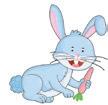











LO: Children will identify and read words with middle /a/ and /e/ sounds. Resources: Literacy Workbook, page 17
1. Jump to the Vowel: Draw two large circles on the floor: one labelled /a/ sound and the other /e/ sound. Call children one by one. Say a three-letter word aloud (e.g. bag/pen) and ask children to jump into the correct circle based on the middle sound. Repeat with different words, making it fun and interactive. Ensure everyone gets a turn.
2. Reading Time: Ask children to open page 17 of the Workbook. Read aloud all the words one by one and ask children to repeat after you. Then, call children one by one and ask them to read aloud a word with middle /a/ sound and another word with middle /e/ sound. Assist children to read, if they struggle.
3. Recall ‘a’ and ‘e’: First, guide children to identify all words with middle /a/ sound and circle them. Then ask them to underline the words with middle /e/ sounds. Guide them to sort and write the words in the respective columns on page 17. You can also ask children to identify objects with the middle /a/ and middle /e/ sounds from the surrounding (e.g., pen, pad, mat, etc.).







LO: Children will count and write the numbers from 21–30 using the concept of bundling.
Resources: Numeracy Skillbook, page 32; 3 bundles of 10 ice-cream sticks; loose ice-cream sticks
1. Counting Using Bundling: Recap counting numbers from 21 to 30. Call children one by one, give them a number and guide them to count and show the number using the bundles and loose sticks. Ensure everyone gets a turn.




2. Identifying Symbols 21–30: Show the children bundles of 10 sticks and loose sticks to represent numbers from 21 to 30. Write each number on the board as you go. Say: Let’s look at 21. We have 2 bundles of 10 (hold up 2 bundles) and 1 loose stick. We write 2 for the two bundles and 1 for the loose stick. So, 20 and 1 more gives us 21. Repeat this for other numbers up to 30, allowing children to count the bundles and loose sticks with you.
3. Counting Forward from 21 to 30: Ask children to open page 32 of the Skillbook. Guide them to read aloud the numbers first. For example, say: 20 and 1 more is 21. Then, ask them to complete writing the first column.



Complete the second column by writing the numbers 21–30 on page 32 of the Skillbook.
LO: Children will identify and explore different leaves with their five senses.
Resources: STEM Exploration, pages 9–11; dried leaves; colourful leaves; leaves of different shapes; basil, mint and coriander leaves; a cloth bag
1. Mystery Bag Game: Put the leaves in the cloth bag and pass the bag around the class. Ask children to take out one leaf without seeing. Guide them to observe the leaves and answer the following:
• Is the leaf rough or smooth?
• Does it have a smell?
• Does it make a sound when crushed?
Ensure everyone gets a turn.
2. Exploring Leaves with Five Senses: Ask children to open pages 10–11 of the STEM Exploration book. Read aloud the questions and guide children to mark the answers.
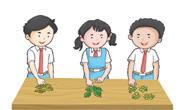



Circle Time
Catch and Count
General Awareness Story: My Pet Dog
General Awareness, page 48
Foundational Literacy Read for Fun: /a/ and /e/ Sounds Literacy Skillbook, page 37
Foundational Numeracy Numbers 1 to 30 Numeracy Skillbook, page 33
DIY Origami Dog Face
LO: Children will play a fun game of throwing a ball in a circle and counting the number of throws.
Resources: 5–6 soft balls
1. Warm-Up: Gather the children in a circle and start with light stretches and jumping in place. Say: Let’s warm up ourselves to get ready for some ball fun!
2. Count the Catches: Pair up the children or form small groups (4–5 children per group). Give each pair/group a soft ball. Explain: You will throw the ball to your partner. Each time someone catches the ball, everyone says the number out loud—1, 2, 3… Let’s see how high you can go!
3. Play Time: Let children begin tossing gently back and forth. Every time the ball is successfully caught, they count aloud together. If the ball drops, they can either start over or continue from where they left off. Move around to support groups and encourage them to aim for 10 catches, then 20!

LO: Children will listen to a story called My Pet Dog and discuss the pictures from the story.
Resources: General Awareness, page 48
1. Warm-Up Discussion: Begin by asking: Who has a pet at home? Listen to their responses and invite those children to share about their pet. Encourage them to say the name of their pet, how they play with them and what they eat.

2. Picture Talk: Ask children to open page 48 of the General Awareness book. Ask them to look at the pictures and share what they see. Ask them questions, such as:
• What do you see in the picture?
• What is the boy doing?
• What is the dog doing?
Encourage each child to participate and respond.
3. Interactive Read-Aloud: Read aloud the story My Pet Dog with expressions and voice modulation. Pause in between to ask questions like:
• What is the name of the dog?
• Who puts water on Milo?
• What did Rohan apply on Milo?
• What did Rohan do with the towel?













LO: Children will read simple sentences with words having middle /a/ and middle /e/ sounds.
Resources: Literacy Skillbook, page 37; letter flashcards (from Skillbook)
1. Reading Three Letter Words: Write down the words with middle /a/ sound first and then with and middle /e/ sound on the board from page 37 of the Skillbook (e.g., cat, hen, mat, red, wet, vet). Point and read aloud the words one by one and ask children to repeat after you.
2. Making Words: Hand out the letter flashcards to the children. Say aloud words with middle /a/ and middle /e/ sounds one by one. Guide them to make the words using the letters. Take rounds to check children’s work and guide them as required.


3. Guided Reading: Read aloud the sentences slowly but loudly with clear pronunciation. Ask children to repeat after you while pointing to each word with their finger. Point and show the pictures while reading.
4. Reading Practice: Call children one by one to read a sentence from the Skillbook. Encourage others to repeat the sentence after them. Assist children, if they struggle to read.







Practise reading the sentences at home from page 37 of the SKillbook.
LO: Children will count and write the symbols of numbers from 1–30.
Resources: Numeracy Skillbook, page 33; 3 bundles of 10 and loose sticks



1. Counting and Identifying Symbols: Call the children one by one. Write a number between 11 to 30 on the board. Ask each child to identify the number and represent it using bundles of 10 (tens) and loose sticks (ones). Guide them to say it clearly, for example: One bundle of 10 and 1 more makes 11 / Two bundles of 10 and 3 more makes 23. Ensure every child gets a turn with a different number. Encourage them and support where needed.
2. Writing Numbers: Ask children to open page 33 of the Skillbook. Guide them to write down the numbers from 1–30 in the Skillbook. Show on the board how to write the digit in tens place under T and the ones place under O.




Explain clearly how to write one-digit numbers and two-digit numbers under T and O. Make sure the children do not write the ones in tens place for the one-digit numbers.
LO: Children will make an origami dog face and develop their fine motor skills.
Resources: Square-shaped brown origami paper (1 per child); black sketch pens or crayons; glue stick; small cutouts of black paper triangles (1 per child)
1. Warm-Up Discussion: Gather children and show them a square paper. Ask: What shape is this? Let them describe it (4 equal sides, 4 corners). Tell them: Today, we are going to turn this square into a cute dog face!
2. Origami Dog Face: Give each child a square piece of paper. Demonstrate the steps first and then ask the children to follow along. Say:
Step 1: Fold the top two corners down diagonally to make triangle-shaped ears.
Step 2: Draw eyes just under the ears.
Step 3: Paste a small triangle in the centre for the nose.
Step 4: Draw a smile under the nose. Let them decorate the ears or add spots and colour the nose using crayons. Once done, let each child come in front and show their creativity.

Domain
Topic of the Day
Circle Time Aim and Throw
General Awareness My Pet Fish
Book & Page
General Awareness, page 59
Foundational Literacy A Mat and a Cat; A Jet Reader, pages 1–2
Foundational Numeracy Numbers from 31 to 40
DIY Cap Your Fish
Numeracy Skillbook, page 34
Art and Craft, page 13
LO: Children will throw an object inside a bucket, improving their hand-eye coordination & gross motor skills.
Resources: Soft ball; a basket or a bucket; chalk
1. Warm-Up: Start with a quick warm-up. Ask them to stretch their hands, touch their toes, etc.
2. Explaining the Game: Gather the children in a circle around the target. Show how to stand behind the line drawn with chalk, aim, and throw the object gently into the basket/ bucket. Explain the goal: We are going to try and get the ball in the basket! Use simple phrases like: Look, aim, throw.
3. Aim and Throw: Call children one at a time to take a turn. The group can chant each child’s name to cheer them on: Go, go [Child’s Name]! Appreciate every child’s effort.

LO: Children will talk about pet fish and develop their fine motor skills.
Resources: General Awareness, page 59; crayons
1. Warm-Up Discussion: Ask: Have you seen an aquarium/fish in a glass tank? What colours of fish did you see? What else was there in the fish tank? Help them think of plants, colourful pebbles, bubbles, etc. Encourage each child to participate and welcome all responses.
Happy Little Fish
Swim, swim, swim so free, In the water, just like me! Bubbles here and bubbles there, My pet fish is everywhere!
2. Rhyme Time: Recite the rhyme Happy Little Fish with voice modulations and expressions. Repeat 3–4 times and ask children to follow.
3. My Pet Fish: Ask children to open page 59 of the General Awareness book. Guide them to complete the fish bowl as per the given instructions. Draw one on the board for reference and assist those who need help.







LO: Children will read simple sentences with middle /a/ and middle /e/ sounds.
Resources: Reader, pages 1–2
















1. Recalling Sight Words and CVC Words: Write down all the sight words from pages 1 and 2 (e.g., The, in, has, on, this) on the board. Point and read aloud the words once and ask children to repeat after you. Repeat the same with the CVC words with middle /a/ and middle /e/ sounds from pages 1 and 2.










































2. Reading Practice: Read aloud the sentences one by one from page 1, loudly and clearly, and ask children to repeat after you. Then, call children one by one and ask them to read aloud any 2 sentences from page 1. Guide the children if they get stuck. Repeat the same for page 2.
If children become thorough with reading, you can also read aloud a few sentences from the book in a random order and ask children to find the sentence.

LO: Children will recognise, count and write the numbers 31–40 through hands-on grouping.
Resources: Numeracy Skillbook, page 34; 4 bundles of 10 ice-cream sticks; loose ice-cream sticks
1. Numbers 31–40: Make four bundles of 10 sticks each and tie them with a rubber band. Hold up a bundle and say: This is 10. Hold up 2 more and say: Now we have 30. Add one loose stick and say: Now it is 31. Keep adding sticks one by one, counting up to 40.





2. Making Number Group: Call children one by one. Give each child 4 bundles of 10 and loose sticks. Call out a number (e.g., 35), and ask children to show it using three bundles of 10 and 5 loose sticks. Repeat with different numbers and ensure every child gets a turn. Guide them to say 30 and 5 makes 35.
3. Numbers 31 to 40: Ask children to open page 34 of the Skillbook. Say aloud the numbers and ask children to repeat after you. Say: 30 and 1 makes 31 / 30 and 2 makes 32 and so on. Write the symbols on the board as you say.
4. Writing 31 to 40: Ask children to write numbers from 31 to 40 in the first column of page 34.



Complete writing numbers 31 to 40 on page 34 of the Numeracy Skillbook.
LO: Children will play a fun game and make an art by sticking bottle caps. Resources: Art and Craft, page 13; 5 colourful bottle caps; sketch pens; glue
1. Warm-Up Discussion: Begin by asking: Do you know where fish live? Welcome responses and say: That’s right! Fish live in water. They live in ponds, rivers, and the sea.
2. Fish Jump: Tell the children: Let’s pretend to be a fish! If I say a place where fish live, you jump in like you’re splashing into water. If I say a place where fish don’t live, stay still like a statue! Use a mix of water and non-water places, such as: pond / land / sea / forest / river / sky and so on.


3. Cap Your Fish: Ask children to open page 13 of the Art and Craft book. Guide children to paste the bottle caps to make their fishes. Then, help them make the eyes with a black sketch pen and decorate the fish. Assist those who need help.








Domain General Awareness
Learning Outcome Children will identify some common birds and animals around us.
Resources General Awareness Book, page 46
Suggested Method Call children one by one and ask them. Ask them to name one animal that they see around them. Guide them to state one line to describe the animal. Clap for each child and give them a smiley sticker. Ensure everyone gets a chance.
Support for Struggling Learners
Domain
Open to page 46 of the General Awareness book. Gather the children around, point at the each animal, read its name aloud and ask the children to repeat after you.
Foundational Literacy
Learning Outcome Children will read words and simple sentences with middle /a/ and /e/ sounds.
Resources Reader, pages 1–2; letter flashcards (from Skillbook)
Suggested Method Hand out the letter flashcards to the children. First, ask them to make a word with middle /a/ sound and another with middle /e/ sound. Take rounds to monitor and guide the children. Then, call children one by one and guide them to read one sentence with middle /a/ sound from page 1 and another with middle /e/ sound from page 2 of the Reader. Clap for each child and ensure everyone gets a chance.
Support for Struggling Learners
Ask children to open page 1 of the Reader. First point to each picture from the page and ask children to share what they see. Then, read the sentences one by one loudly, with clear pronunciations and ask children to repeat the sentences after you. Guide them to put their index fingers under each word as they read along with the teacher. Repeat the same for page 2 for words with middle /e/ sounds.
Domain Foundational Numeracy
Learning Outcome
Children will count numbers from 21 to 30 by grouping them into groups of ten.
Resources Ice-cream sticks: three bundles of 10 sticks, and a few loose sticks
Suggested Method Call children one by one. Give them a number between 21 to 30. Ask the children to show the number using the bundles and the loose sticks. Clap for each child and give them a smiley sticker. Ensure everyone gets a chance.
Support for Struggling Learners
Gather the learners, first guide them to count aloud from 1–30. Ask questions like: What comes after 20? Then, count and show numbers 21 to 30 using bundles of 10 and loose sticks. Say, for example: 2 bundles of 10 and 1 more make 21. Write the number symbol (e.g. 21) on the board as you count.


















Circle Time
Yoga and Meditation
General Awareness Farm Animals
General Awareness, page 50
Foundational Literacy Middle Sound /i/ Literacy Skillbook, pages 38–39
Foundational Numeracy Numbers From 41–50 Numeracy Skillbook, page 35
DIY Story: The Lion and the Hare Rhymes and Stories, pages 28–32
LO: Children will learn and perform the Chicken Pose and practise calm breathing through simple meditation.
Resources: Music
1. Warm-Up: Play soft music and guide the children through gentle stretches. Say:
• Stretch your arms up high as if reaching for the sky.
• Bend down and touch your toes.
• Stand tall and take deep breaths in and out.
2. Chicken Pose Yoga: Demonstrate and guide the children through this pose. Say:
• Stand tall with your feet slightly apart.
• Bend your knees like you’re sitting on a low chair.
• Bend your elbows and flap your wings (arms).
• Move your head gently forward and back like a pecking chicken.
• Add a small hop to be a playful chick!
• Cluck softly: Cluck, cluck! Repeat 3–4 times with soft clucking and flapping.

3. Meditation: Play soft music and say: Imagine you are a bright star in the night sky, shining gently. Take slow, deep breaths and feel calm. Let them sit still for a moment, then gently guide them to open their eyes.

LO: Children will identify and name some common farm animals. Resources: General Awareness, page 50; toy animals (if available)
Introduction
1. Warm-Up: Begin with asking some questions: Have you ever visited a farm? Have you seen animals like cows or hens? Where do they live? Are they wild or do they live with people? Welcome all responses. Explain that animals that live on farms and help us in many ways are called farm animals.
2. Rhyme Time: Recite the rhyme Old Mac Donald Had a Farm with actions and animal sounds to the children. Allow the children to sing the rhyme along with you. Repeat the rhyme at least 2–3 times.
3. Farm Animals: Refer to page 50 of the General Awareness book. Introduce the farm animals one by one by pointing to the pictures or toy animals. For example say: This is a sheep. It lives on a farm. It gives us wool. Say the names of the animals aloud and ask the children to repeat the names after you. Repeat each animal at least 2–3 times.
4. Count and Write: Ask the children to refer to page 50 of the General Awareness book. Guide them to identify, count and write the correct number of each animal given. Assist those who need help.



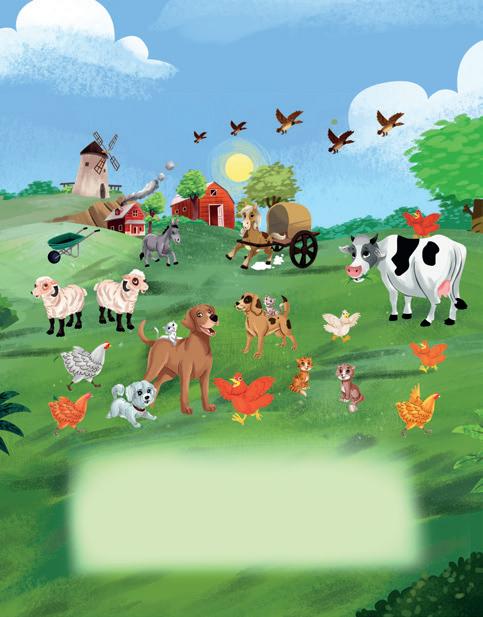


Play a game where you say an animal’s name, and the child has to act it out with its sound. For example: Say: Duck → They waddle and say ’quack quack!’





LO: Children will recognise and understand middle /i/ sounds in CVC words. Resources: Literacy Skillbook, pages 38–39; some pictures or objects with middle /i/ sound (zip, nib, bin, six, lid)
1. The Middle /i/ Sound: Write the letter ‘i’ on the board and say: This is the letter i. It makes /i/ sound. Show different pictures or objects, emphasising the middle /i/ sound and as you say each word aloud. Ask children to repeat after you, stretching the middle /i/ sound. For example: niiiiib / siiiiix / biiiin.
2. Blending Three Letter Words: Write simple CVC words with the middle /i/ sound like NIB, LID, LIP, SIX, etc. on the board. Point to each letter and sound them out slowly, blending the sounds together in the end. For example: /s/ - /i/ - /x/ → six. Ask children to repeat many times after you, helping them blend and read the words fluently.
3. Middle Sounds /i/: Writer ‘ig’ on the board and say: We will read the words that have middle sound /i/ and end with the sound /g/. Guide children to open page 38 of the Skillbook. Read the words aloud one by one as done in step 2. For example: /f/ - /i/ - /g/ → fig; /w/ - /i/ - /g/ → wig. Repeat the same process for other word families too.























Refer to pages 38–39 and read the word families with the middle /i/ sound. You may ask your parents for help.
LO: Children will recognise and count numbers 51–60 through hands-on grouping and write the numbers.
Resources: Numeracy Skillbook, page 35; 5 bundles of 10 ice-cream sticks; loose ice-cream sticks
1. Counting 41 to 50: Show 4 bundles with 10 ice-cream sticks and say: This is 40. Add one loose stick and say: Now it’s 41. Keep adding sticks one by one, counting up to 50.



2. Making Number Groups: Call children one by one. Give each child 5 bundles of 10 sticks and some loose sticks. Call out a number (e.g., 44), and ask children to show it using four bundles of 10 and 4 loose sticks. Repeat with different numbers and ensure every child gets a turn. Guide them to say the number groups, for example: 40 and 4 makes 44.
3. Numbers from 41 to 50: Ask children to open page 35 of the Skillbook. Say aloud the numbers and ask children to repeat after you. Say: 40 and 1 makes 41 / 40 and 2 makes 42 and so on. Write the symbols on the board as you say. Then, ask children to write numbers from 41 to 50 on page 35 of the Skillbook.
LO: Children will discuss the pictures from the story The Lion and The Hare. Resources: Rhymes and Stories, pages 28–32




1. Warm-Up: Ask: Have you ever been to a zoo? What animals do you see there? Welcome all responses. Say: Today, I will tell you a story about a big, strong lion and a small, clever hare!
2. Picture Talk: Ask the children to open pages 28–32 of the Rhymes and Stories book. Show the pictures one by one and discuss them. Ask questions such as:
• What animals do you see in this picture?
• What are the animals doing?
• What is the colour of the monkey?
• Who went to the well and thought of a plan?
• What do you think is happening in this picture?

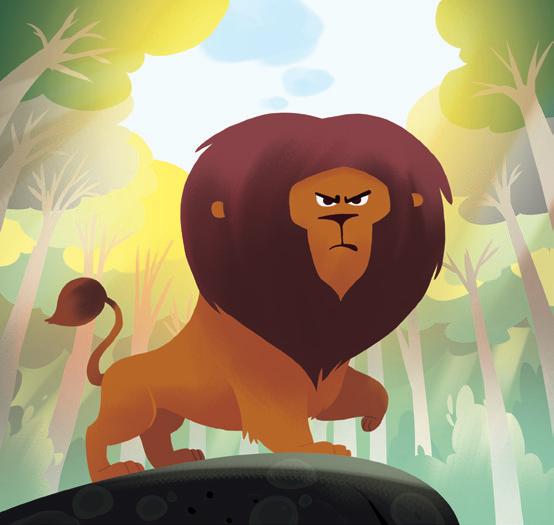
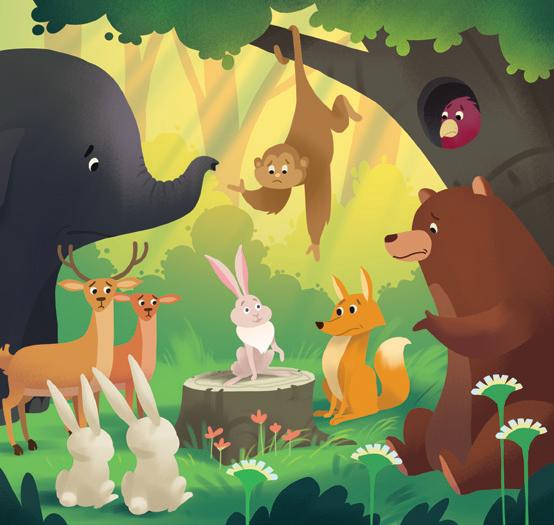
Circle Time Blindfold: Follow Me!
General Awareness Animal Homes
General Awareness, page 51
Foundational Literacy Middle Sound /i/ Literacy Skillbook, pages 38-40
Foundational Numeracy Numbers From 1-50 Numeracy Skillbook, page 36
DIY Story: The Lion and the Hare Rhymes and Stories, pages 28-32
LO: Children will develop listening skills, and body awareness through a group movement game.
Resources: Music; handkerchiefs
1. Warm-Up: Gather the children in a circle. Do simple stretches to get them ready. Say: Stretch up high… bend low… shake your arms… now walk slowly in place! Then, say: Today we’re going to play a fun game where we need to listen carefully and trust our friends. It’s called ‘Follow Me!’ Ask: Have you ever tried walking with your eyes closed? Is it easy? Let us try together!
2. Blindfold-Follow Me: Divide children into pairs – one child is blindfolded, and the other is the guide The guide holds the blindfolded child’s hand and gives gentle voice directions: Walk slowly… Turn left… Stop… Take two steps… Let each child take a turn being the guide and the one blindfolded. Ensure a safe play area and supervise closely. Say: Trust your partner and listen to their voice. No running, just slow steps!

LO: Children will identify and name some common farm animals and their homes.
Resources: General Awareness, page 51
1. Warm-Up: Begin with making some animal sounds: (e.g., Moo moo, Baa baa, Neigh neigh). Ask the children to guess the animals and repeat the sounds. Introduce the idea that just like we live in homes, animals do too.
2. Story Time: Narrate the story Friends on a Farm to the children using voice modulations and actions. Pause in between and ask questions like:
• Where does the cow live?
• Where does a dog live?
• What is the sound of a horse?
• Where does a sheep live?
Encourage each child to give responses. Assist those who need help.
Once there was a small farm in a village.
A cow named Gauri lived in a shed. She gave milk and said, “Moo moo!”
A horse named Badal lived in a stable. He loved to run and said, “Neigh neigh!”
A sheep named Meenu lived in a pen. She had soft wool and said, “Baa baa!”
A hen named Chikki lived in a coop.
She laid eggs and said, “Cluck cluck!”
A dog named Sheru lived in a kennel. He guarded the farm and said, “Bow wow!”
All the animals were good friends. They played together and went home at night.

3. Animal Homes: Ask the children to refer to page 51 of the General Awareness book. Introduce the animals with their homes one by one by pointing at the pictures given. Ask the children to repeat the names after you. Repeat each animal at least 2–3 times.







LO: Children will recognise and understand middle /i/ sounds in CVC words.







Resources: Literacy Skillbook, pages 38–40; some pictures objects with middle /i/ sound (zip, nib, bin, six, lid)
1. Middle Sounds /i/: Write ‘ig’ on the board and say: We will read the words that have middle sound /i/ and end with the sound /g/. Guide children to open pages 38–39 of the Skillbook. Read the words aloud one by one. For example: /f/ - /i/ - /g/ → fig; /w/ - /i/ - /g/ → wig. You may write them on the board as well. Repeat the same process for other word families too.














2. Identifying the Middle /i/ Sound: Draw two pictures (e.g., lid and cap) on the board. Point to it, name it, and then ask: Which word has /i/ in the middle? Children shout or clap when they hear the correct word. Use 5–6 pairs for practice (e.g., fig–fan, fin–cup, zip–zap).
Practice
3. Fill in the Blanks: Ask children to open page 40 of the Skillbook. Guide them to identify the pictures and complete the words.
LO: Children will count and write the numbers from 1–50.
Resources: Numeracy Skillbook, page 36




















1. Number Freeze Dance: Tell the children that when you sing something and clap, they will stand up at their seats and dance. When you stop singing, ask the children to freeze and say a number. Ask the children to shout that number and write it in the air using their index fingers.
2. Writing on the Board: Call children one by one to come in the front. Call out some numbers (between 1–50) and ask the child to write the number on the board. Then ask them to say the number that comes after it. (For example: 21, 22, 23…..) Repeat the activity till each child gets a chance to participate. Keep changing the numbers each time you call a new child.
3. Numbers from 1 to 50: Ask children to open page 36 of the Skillbook. Guide them to write the numbers from 1–50 in the correct order.







LO: Children will listen to the story The Lion and the Hare and share their reflection.
Resources: Rhymes and Stories, pages 28–32
1. Interactive Read-Aloud: Read aloud the story The Lion and the Hare with expressions and voice modulations. Pause at relevant places to show pictures and discuss questions from the story. Ask questions such as:
• What animals do you see in this picture?
• What are the animals doing?
• Who went to the well and thought of a plan?




• What do you think is happening in this picture?
2. Reflection Time: Ask the children to share one thing that they learnt from the story. Welcome all responses. Guide the children, if they are stuck provide them with guiding questions like: What happened to the lion in the end? What did we learn from the story? Encourage them to give responses in their home or in a mixed language.

Circle Time
Chinese Whispers
General Awareness Useful Animals
General Awareness, page 52
Foundational Literacy Middle Sound /i/ Literacy Workbook, page 18
Foundational Numeracy Numbers from 1 to 50
DIY A Bunch of Flowers
Numeracy Workbook, pages 23–24
Art and Craft, pages 14–15
LO: Children will listen carefully and attentively and repeat a short sentence or phrase clearly.
1. Warm-Up: Gather the children in a circle. Ask: Have you ever played Chinese Whispers? Let us play it today. Gather the children in a group. Then, demonstrate how it is played first.
2. Chinese Whispers: Call one child and whisper a sentence into his/her ear. Then each child whispers the sentence to the next child quietly. The last child says the message out loud. Compare the original and final messages. Ask: Was it the same? Or did it change? If it changes, laugh together and talk about how funny it became! Repeat with new sentences and different children starting each round. Assist those who need help.

LO: Children will identify and name some common farm animals and understand how these animals help us.
Resources: General Awareness, page 52
1. Warm-Up: Ask: Have you seen a cow before? What does a cow give us? Elicit responses such as milk. Then, ask: Do you eat eggs? Which animal gives us eggs? Do you know where it comes from?
2. Animals and Their Uses: Refer to page 50 of the General Awareness book. Point to each animal one by one and discuss its uses. For example, say: This is a cow. It gives us milk. OR This is a hen. It gives us eggs. Repeat each animal at least 2–3 times for better understanding.
3. Useful Animals: Ask the children to refer to page 52 of the General Awareness book. Introduce the animals with their uses one by one by pointing at the pictures given. Ask the children to repeat the names after you. Repeat each animal at least 2–3 times.
4. Matching the Animals: Guide them to identify and match the animals to the things we get from them. Then, ask them to circle the animals that carry loads for us. Assist those who need help.















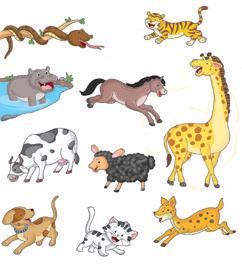


LO: Children will read CVC words with middle sound /i/ and match them with the correct pictures.
Resources: Literacy Workbook, page 18
Introduction
1. Reading Time: Write simple CVC words with middle /i/ sound such as zip, nib, pin, lid, etc. on the board. Point to each letter and sound it out slowly, blending the sound together in the end. For example: /l/ - /i/ - /d/ → lid. Then, invite a few children to read the words individually.
2. Middle Sound /i/: Ask children to open page 18 of the Workbook. Guide them to look at the pictures and identify them. Then, ask them to use the letters and make the words. Encourage them to say the words aloud. Assist those who need help.













Look around your house. Find three objects that have middle /i/ sounds and write the words in your notebook.
LO: Children will learn how to count objects by grouping them and writing the numbers in the correct sequence from 1 to 50 to form a picture.
Resources: Numeracy Workbook, pages 23–24; classroom objects like (pencils, crayons, erasers, etc.)
Introduction
1. Revision: Revise numbers 1 to 50 by writing any number between 1 to 50 on the board and then asking the children to name it. You may even do the reverse where you name the number and ask the children to write it on the board.

2. Numbers 1 to 50: Ask the children to open to page 23 of the Workbook. Guide them to count and write the numbers from 1 to 50 in the correct order under tens and ones. Assist those who need help.
3. Counting in Groups: Ask children to open page 24 of the Workbook. Guide them to count the number of things in total and write the numbers.



1. Warm-Up: Ask: Have you seen a flower? Can you name a few flowers? (Encourage answers like rose, lily, sunflower, etc.). Say: Today, we will make our own flower—not with crayons or colours, but with origami sheets! It’s called paper folding art. Show them a finished origami flower and say: Would you like to make a flower just like this? Let us do it together!
2. Origami Flowers: Use slow, clear instructions and model each step. Refer to page 14 of the Art and Craft book. Demonstrate and guide the children to follow the steps given on page 14.
3. A Bunch of Flowers: Once the origami flowers are ready, ask the children to open to page 15 of the Art and Craft book. Guide them to paste the flowers within the space given.












Resources: Art and Craft, pages 14–15; origami sheets (from Art and Craft Book); glue





















LO: Children will learn to fold paper using simple steps to make a flower and enhance their fine motor skills and hand-eye coordination.
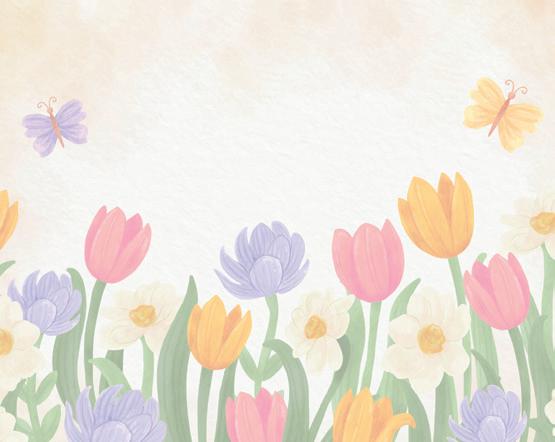







Circle Time
Balancing with a Plate
General Awareness Art Activity on Animals
Foundational Literacy Word Search Puzzle Literacy Skillbook, page 41
Foundational Numeracy Join the Dots Numeracy Workbook, page 25
DIY Animal Charades
LO: Children will be able to develop body balance and coordination by participating in fun, guided balancing activities.
Resources: Paper plates (1 per child)
1. Warm-Up: Start with a short warm-up. Ask the children to:
• Stretch arms, touch toes, hop in place.
• Stand on one foot like a flamingo.
3. Balancing with the Plate: Provide the paper plates to the children. Let each child balance a paper plate on their head. Guide them to walk from one end of the room to the other on a line or marked path. If it falls, ask them to gently pick it up and try again. Assist those who need help.
If the space inside the classroom is less, then take the children outdoors or in the playground.

LO: Children will develop their fine motor skills in creativity to represent different animals. Resources: Old newspaper or brown paper; crayons or sketch pens; glue (optional); safety scissors (optional); pencils
1. Warm-Up: Ask: Can you name any animals that live on a farm? Show simple drawings (on the board or in the Coursebook) of a cow, pig, and hen. Say: Let’s make a puppet of your favorite farm animal using only paper and crayons!
2. Farm Animals: Let the children choose a farm animal. Demonstrate and guide them to draw the animal’s face (e.g., pig snout, cow ears, chick beak) on a piece of paper. Then guide them to colour it using crayons or sketch pens.


If scissors are available, they can cut around the drawing. If not, they simply fold the paper in half to make it like a card puppet.
Ask the children to fold the bottom edge so it can be held like a puppet. Let them glue the drawing to a pencil or rolled paper stick to hold it.
Practice
3. Discussion Time: Call out one child at a time. Ask them to share their creativity and speak a few sentences on it. For example, Let them say: This is a cow. It says moo, moo. Assist them in forming simple sentences. Make sure each child gets a chance to participate in the activity.







LO: Children will read CVC words with middle sound /i/ and match them with the correct pictures.
Resources: Literacy Skillbook, page 41
Introduction
1. Recap: Write some CVC words with middle sound /i/ on the board. For example: lid, bib, lip, pin, etc. Point to each letter and sound them out slowly, blending the sounds together in the end. For example: /l/ - /i/ - /p/ → pot. Ask children to repeat many times after you, helping them blend and read the words fluently.
2. Word Search Puzzle: Ask children to open page 41 of the Skillbook. Guide them to read the words aloud emphasising on the middle /i/ sound. Then, ask them to find the words in the word search puzzle. Assist those who need help.


LO: Children will learn counting numbers from 1 to 50 and join the dots in the correct sequence to form a picture.
Resources: Numeracy Workbook, page 25; chalk
Introduction
1. Hopping and Counting Numbers: Write the numbers 1 to 10 on the floor. Call one child at a time. Say a number (e.g., 24) and the child must jump to the numbers 2 and 4, saying the digits aloud. Repeat changing the numbers each time you call a child. Assist those who need help.
2. Joining the Dots: Guide the children to refer to page 25 of the Workbook. Ask them to count the numbers from 1–50 and join the dots while counting to complete the picture. Once done, ask them to identify and name the animal formed by joining the dots.



LO: Children will identify animals through actions and sounds.
1. Warm-Up: Ask: Do you love animals? Can you move like a lion or hop like a frog? Encourage each child to give responses. Say: Today we will play a fun game called Animal Charades! You will become animals and your friends will guess who you are!
2. Animal Charades: Demonstrate 2–3 animal actions as examples (e.g., flap arms like a bird, hop like a frog). Call out one child at a time. Say the name of a farm animal in their ears. Ask him/her to act out the animal without speaking. Let the class guess: Are you a sheep? / Is it a horse? The child says: Yes! when someone guesses right. Say the rule: No words—only actions and animal sounds allowed. Cheer for each performer and make sure each child gets a chance to participate.








Domain
Learning Outcome Children will identify and name the farm animals around us.
Resources A soft toy; General Awareness book, pages 50–52
Suggested Method Ask one child to come in front. Hand them a ruler or a pen that they can use like a microphone.
Ask them questions like:
• Name two farm animals?
• What sounds do they make?
• Where does a horse live?
• Name two animals that help us?
Clap loudly for each child. Repeat until all children get a chance.
Support for Struggling Learners
Domain
Make the children sit in a circle. Refer to the General Awareness book pages 50–52 and introduce each farm animal one by one by pointing to the pictures. For example: Point to the first picture and say: This is a cow. It lives in a shed, It gives us milk. Repeat with the other pictures.
Learning Outcome Children will identify and read words with middle /i/ sounds.
Suggested Method Call children one by one. Say aloud a word with middle /i/ sound. Guide children to spell the word and write it on the board. Clap for each child and give them a smiley.
Support for Struggling Learners
Domain
Gather the learners. Show them objects or pictures of objects with middle sound /i/ (e.g. lid) and write it on the board. Guide the children to read the individual sounds that blend together: /l/ /i/ /d/ - pot. Ask the children to repeat 3–4 times after you. Repeat as many words as possible.
Foundational Numeracy
Learning Outcome Children will identify, count and write the numbers from 41 to 50.
Resources Chalk; Numeracy Skillbook, pages 35–36
Suggested Method

Support for Struggling Learners
Call children one by one. Call out a number (for e.g., 35) and ask the child to show the number by writing it on the board. Clap for each child.
Gather the learners in a circle. Refer to pages 35–36 of the Skillbook. Say: Let us count the pencils in the bundle. Count and take ten pencils. Tie them with a rubber band to make a bundle. Explain: 1 ten = 10. Now add one pencil at a time and count aloud together till 40. Encourage the children to follow the pictures in the book and count with you. Repeat the activity for all the other numbers till 50.



































Circle Time Show Your Feelings
General Awareness Wild Animals
General Awareness, page 53
Foundational Literacy Read for Fun: /i/ Sound Literacy Skillbook, page 42; Literacy Workbook, page 19
Foundational Numeracy Numbers from 51 to 60
Numeracy Skillbook, page 37
DIY Magic Mix STEM Exploration, pages 12–14
LO: Children will build their social-emotional skills and share their feelings by expressive gestures.
1. Warm-Up: Tell the children that you will play a game with them. When you say a feelings word, they must ‘show’ the feeling through their expression.
2. Show Your Feelings: Call out a feelings word, such as: Happy! The children must ‘show’ the feelings. Guide them to show a bright smile. Then, say ‘sad’, and guide them to show a frown. Use other feelings such as ‘angry’ or ‘shocked’. Repeat the feelings randomly.

LO: Children will identify and write the names of a few wild animals.
Resources: General Awareness, page 53
1. Warm-Up Discussion: Begin by asking: Do you know what are the animals that live in the jungle called? Let the children share their responses. Then say: They are called wild animals. Can you name some wild animals? Let the children guess the names of a few wild animals.

2. Wild Animals: Refer to the animals given in the first part on page 53 of the General Awareness book. Point to the lion and say: This is a lion. Then write ‘lion’ on the board, say the word aloud and encourage children to repeat after you. Repeat the same for the other animals. Say each word 3–4 times, for reinforcement. Then, guide children to identify and write the names of the animals. Refer to page 53 of the book. Identify the animals by looking at the pictures and try to read their names.



















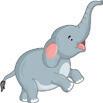


LO: Children will read simple sentences with words having middle /i/ sounds. Resources: Literacy Skillbook, page 42; Literacy Workbook, page 19; letter flashcards (from Skillbook)
1. Reading CVC Words: Write down the words with middle /i/ sound on the board from page 42 of the Skillbook (kid, wig, big, hid, bin). Point and read aloud the words one by one and ask children to repeat after you.
2. Making CVC Words: Hand out the letter flashcards to the children. Say aloud a few words with middle /i/ sound one by one. Guide them to make the words using the letter flashcards. Take rounds to check children’s work and guide them as required.
3. Guided Reading: Refer to page 42 of the Skillbook. Read aloud the sentences slowly but loudly with clear pronunciation. Ask children to repeat after you while pointing to each word with their finger. Point and show the picture while reading.
4. Reading Practice: Call children one by one to read a sentence from the Skillbook. Encourage others to repeat the sentence after them. Assist children, if they struggle to read.
Read aloud the CVC words on page 19 of the Workbook and complete writing them.



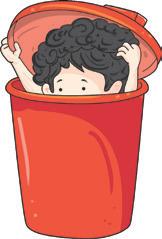

LO: Children will recognise, count and write the numbers from 51–60.
Resources: Numeracy Skillbook, page 37; 6 bundles of 10 ice-cream sticks; loose ice-cream sticks
1. Counting 51 to 60: Show 5 bundles with 10 ice-cream sticks and say: This is 50. Add one loose stick and say: Now it’s 51. Keep adding sticks one by one, counting up to 60.



2. Making Number Groups: Call children one by one. Give each child 6 bundles of 10 and loose sticks. Call out a number (e.g., 54), and ask children to show it using five bundles of 10 and 4 loose sticks. Repeat with different numbers and ensure every child gets a turn. Guide them to say, for example: 50 and 4 makes 54
3. Numbers from 51 to 60: Ask children to open page 37 of the Skillbook. Say aloud the numbers and ask children to repeat after you. Say: 50 and 1 makes 51 / 50 and 2 makes 52 and so on. Write the symbols on the board as you say. Then, ask children to write numbers from 51 to 60 on page 37 of the Skillbook.




LO: Children will observe and identify things that mix with water and things that do not.
Resources: STEM Exploration, pages 12–14; salt; sugar; sand; 3 transparent glasses filled with water; spoon
1. Warm-Up: Show the ingredients one by one to the children and ask them to guess what they see. Take responses and then name the ingredients (salt, sugar, sand). Say: Today we will see what happens if we pour these ingredients in a glass of water.
2. Observation Time: Pour the ingredients one by one in each glass and stir them well. Let the children look at the glasses carefully and share their observations. Ask them questions like: Can you see the sugar in water? / Can you see the sand in the water? Then, explain:
• Sugar and salt mix well in the water. We cannot see them.
• Sand does not mix in water.










You can also show what happens if other items like talcum powder, some common spices etc. are poured in a glass of water.

Circle Time Pass the Action Pattern
General Awareness Animals and Their Young Ones
General Awareness, pages 54–55
Foundational Literacy The Kid Reader, page 3; Literacy Workbook, page 20
Foundational Numeracy Number from 51 to 60
LO: Children will perform simple actions and pass it around in the circle.
Numeracy Workbook, page 26
DIY Magic Mix STEM Exploration, pages 12–14
1. Warm-Up: Gather the children in a circle, if possible. Start with simple actions to get children ready. Ask children to stand or sit in a circle. Call out and model basic actions one by one:
• Clap your hands! • Tap your knees! • Hop like a bunny! • Stretch up high! Let children suggest an action or two as well. Repeat each action together to build rhythm and focus.
2. Game Time: Say: Now we will play a game where we pass an action pattern around the circle! Start with a simple pattern: Clap–Tap–Clap. Do the pattern and say: Your turn! to the child next to you. The pattern continues around the circle from one child to the next. After a few rounds, call out Change! Introduce a new pattern, like Tap–Tap–Hop or Clap–Clap–Stomp! Keep the pace fun and light—encourage laughter and creativity!
You can also ask children to come up with their own action pattern while playing the game.

LO: Children will identify and name some common animals and their babies. Resources: General Awareness, pages 54–55
1. Names of Baby Animals: Begin with a discussion, ask: Have you ever seen a baby animal? Let children share their responses freely. Then introduce each pair in simple language:
• A cow’s baby is a calf.
• A dog’s baby is a puppy.
• A duck’s baby is a duckling.
Continue for all animals: horse-foal, hen-chick, sheep-lamb, cat-kitten, elephant-calf, lion-cub. Repeat the name of each animal and their young ones 3-4 times for reinforcement.
2. Animals and Their Young Ones: Ask children to open pages 54–55 of General Awareness book. Guide them and say: Look at each big animal. Can you find its baby in the pictures? Ask them to circle the correct baby animal. Encourage them to say the names of the young ones as they circle. Assist those who need help.










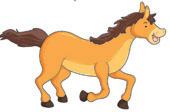

















LO: Children will listen to, read, and write CVC words with the middle /i/ sound and read sight words. Resources: Reader, page 3; Literacy Workbook, page 20
1. Picture Talk: Ask children to open page 3 of the Reader. Point to a picture and ask: What do you see? Take a few responses and say: This is a kid. / The kid is wearing a wig. Repeat the same with other pictures.
2. Explaining in Home Language: Read the lines from page 3 of the Reader and explain them in a mix of English and the home language to ensure understanding.
3. Modelling: Demonstrate how to read aloud the sentences from page 3. Read slowly but loudly with clear pronunciation and voice modulation.
5.



4. Sight Words: Introduce the sight words from page 3. Write the sight words on the board and read each word aloud. For example, write that, is, has, with, the, sees, gets and help the children identify and read the sight words after you. Call children one by one, say a sight word, and ask them to point to it in the Reader.
5. Reading CVC Words: Introduce the CVC words on page 3. Write a word on the board and guide children in reading it. For example, write ‘kid’ and say: /k/ /i/ /d/—kid. Emphasise the middle sound /i/ and ask children to repeat after you. Repeat with other CVC words containing the middle /i/ sound such as kid, wig, big, digs, pit and tin
6. Writing CVC Words: Ask children to open page 20 of the Workbook. Help them read the CVC words on the page. Ask them to trace and write only the first two lines (bin and fin). Assist those who need help.








Refer to page 20 of the Workbook. Trace and write the CVC words. Practise reading words with the middle /i/ sound at home.
LO: Children will count and identify the symbols of numbers from 51 to 60.
Resources: Numeracy Workbook, page 26; 6 bundles of tens ice-cream sticks, loose ice-cream sticks
1. Identifying the Numbers and Counting: Call children one by one and write a number between 51 to 60 on the board. Ask children to identify the number and count and show the number using bundles and loose sticks. Guide them to say, for example: 5 tens and 4 more makes 54. Ensure everyone gets a turn.
2. Numbers from 51 to 60: Ask children to open page 26 of the Workbook. First guide them to fill in the boxes with the missing numbers. Then, ask them to count the number of pencils and write the total.


LO: Children will observe and identify things that mix with water and things that do not.
1. Recap: Ask children to recall and share their observations from the previous session. Guide them by asking questions like: Did the sand mix in the water? / Could you see the salt and sugar after mixing them in the water?
2. Mix Them All: Ask: What do you think will happen if we mix all the three items in the water? Welcome all responses. Then, mix the salt, sand and sugar in a glass of water and show it to the children. Ask them to share their observations.


























































































































Resources: STEM Exploration, pages 12–14; salt; sugar; sand; 1 transparent glass filled with water; spoon


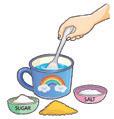
3. Magic Mix: Guide children to open pages 12–13 of the STEM Exploration book. Read aloud the questions one by one and guide children to mark the correct answers.
Circle Time My Peaceful Place
General Awareness
Animals and Their Young Ones
Foundational Literacy The Kid
Foundational Numeracy Numbers from 61 to 70
DIY A Beautiful Scenery
General Awareness, pages 54–55
Reader, page 3; Literacy Workbook, page 21
Numeracy Skillbook, page 38
Art and Craft, page 16
LO: Children will practise mindfulness through imagination and build emotional vocabulary through sharing.
Resources: A soft music
1. Warm-Up Breathing: Gather children in a circle, if possible. Ask them to sit comfortably and close their eyes (if they like). Say gently: Let’s take a deep breath in… and blow it out slowly. Let’s do it two more times together. Play soft music in the background, if possible.
2. A Peaceful Place: Say: Feel your body sitting on the floor. Let your arms rest. Close your eyes if you like. Now imagine you are on a soft cloud or in a quiet garden. It’s calm and safe. What do you see? What do you hear? Maybe birds or water? Let them stay quiet for 30–60 seconds.
3. Conversation Time: Now invite children to open their eyes. Say: What did your peaceful place look like? / Did you hear anything? / Was it bright or dark? / Would you like to go there again? Encourage children to share their responses. Keep responses light and simple.

LO: Children will recall and identify some common animals and their babies through a fun activity.
Resources: General Awareness, pages 54–55; a soft toy

1. Recap: Ask children to open pages 54–55 of the General Awareness book. Recall the name of the animals and their young ones with the help of the pictures given.
2. Recall Circle: Sit in a circle if possible and pass a soft toy around. When you say STOP the child holding the soft toy says the name of the animal and their young animal. For example, ask: What is a baby cow called? / What is a baby duck called? Ensure everyone gets a turn.


















LO: Children will practise reading and writing the CVC words with the middle /i/ sound and identify sight words through guided activities.
Resources: Reader, page 3; Literacy Workbook, page 21
1. Revising CVC Words and Sight Words: Write the CVC words from page 3 of the Reader on the board. Read them aloud, emphasising the middle /i/ sound. Invite a few children and say a word and ask them to identify it on the board. Then, write sight words on the board and read them aloud. Ask children to open page 3 of the Reader, then call out sight words one by one and guide them to underline each word with a pencil.
2. Guided Reading: Read aloud the sentences from page 3 of the Reader. Ask children to repeat the sentences after you while pointing to each word with their finger.
3. Reading CVC Words: Call children one by one to read a sentence from the Reader. Encourage others to repeat after them. Assist children, if they struggle to read.
Encourage children to point to each word and read slowly, one word at a time.
4. Writing CVC Words: Ask children to open page 21 of the Workbook. Help them read the CVC words on the page. Ask them to trace and write only the first two lines (bib and nib). Assist those who need help.










Refer to page 21 of the Workbook. Trace and write the CVC words. Practise reading words with the middle /i/ sound at home.
LO: Children will recognise, count and write the numbers from 61–70 through hands-on grouping.
Resources: Numeracy Skillbook, page 38; 7 bundles of 10 ice-cream sticks; loose ice-cream sticks
1. Counting Numbers from 61 to 70: Show 6 bundles with 10 ice-cream sticks and say: This is 60. Add one loose stick and say: Now it’s 61. Keep adding sticks one by one, counting up to 70.
2. Making Number Groups: Call children one by one. Give each child 7 bundles of 10 and loose sticks. Call out a number (e.g., 62), and ask children to show it using 6 bundles of 10 and 2 loose sticks. Repeat with different numbers and ensure each child gets a turn. Guide them to say, for example: 60 and 2 makes 62.
3. Numbers from 61 to 70: Ask children to open page 38 of the Skillbook. Say aloud the numbers and ask children to repeat after you. Say: 60 and 1 makes 61 / 60 and 2 makes 62 and so on. Write the symbols on the board as you say. Then, ask children to write numbers from 61 to 70 on page 38 of the Skillbook.
LO: Children will complete a scenery by tracing simple patterns.
Resources: Art and Craft, page 16
1. Nature Talk: Begin by asking: What do we see in the nature around us? Let children share their responses freely. Then, say: Today we will make patterns to complete the scenery.
2. A Beautiful Scenery: Ask children to open page 16 of the Art and Craft book. Guide them to trace the patterns to complete the scenery.










Circle Time Self-Care Talk
General Awareness What Do Animals Eat?
General Awareness, page 56
Foundational Literacy That is Literacy Skillbook, page 43
Foundational Numeracy Numbers from 61 to 70
DIY Photo Frame
Numeracy Workbook, page 27
Art and Craft, page 17
LO: Children will reflect on and share personal self-care habits, building awareness and communication skills.
Resources: A ball or a soft toy
1. Warm-Up Discussion: Start with a few fun scenarios to get them thinking. Say: Let’s imagine… What if you forget to brush your teeth for many days? / What if we do not wash our hands after playing? Let children share what might happen. Encourage responses like Our teeth will get dirty! or We might get sick! Say: We should always keep ourselves clean. Self-care is a habit that helps us stay healthy, clean, and happy.
2. Game Time: Say: Let’s go around the circle. I will pass this ball. When you get it, you will tell us one thing you do to take care of yourself. Then pass it to a friend! Encourage a variety of responses like (eating veggies, bathing, resting, trimming nails, etc.). If a child is stuck, gently prompt: What do you do after waking up? / Before eating? / Before sleeping
Pro Tip
Praise effort, not just answers. Say things like That’s a great habit! / Wow! You’re taking such good care of yourself!

LO: Children will identify what different animals eat and understand that some animals eat plants while others eat meat.
Resources: General Awareness, page 56
1. Warm-Up Talk: Begin with a question to spark curiosity: What do you like to eat? Fruits? Vegetables? Rice? Let a few children share their answers. Now ask: Do you think animals eat the same food as us? Welcome all responses.
2. Discussion Time: Name a few animals, one by one, and ask: What do you think this animal eats? / Does it eat plants like grass or leaves? / Or does it eat other animals like small birds or fish? After the responses, give examples such as:
• Cow, Goat, Elephant → They eat grass, leaves, and plants. These are plant-eating animals
• Tiger, Lion → They eat other animals. These are meat-eating animals.
3. What Do Animals Eat?: Ask children to open page 56 of the General Awareness book. Help the children identify the animals under each section. State clearly what each animal eats.
4. Sorting Animals: Call the children to the front and ask them to stand in a line. Label one side of the room Plant-eating Animals and the other Meat-eating Animals. Call each child one by one, say an animal’s name, and ask: What does it eat? The child answers and stands on the correct side. Continue until all children have had a turn. Offer help as needed and encourage everyone to participate.


















LO: Children will use the phrase ‘That is’ to refer to the objects that are far away. Resources: Literacy Skillbook, page 43; some common classroom objects
1. Engaging the Concept: Start with a quick conversation. Point to something nearby and say: This is my pen. (Hold it in your hand). Then point to something farther away, like a bag across the room, and say: That is a bag. Explain: We say ‘That is’ when the thing is far from us. Encourage children to repeat after you.
2. Spot and Say: Play a game. Point to distant classroom objects and ask: What is that? Model and have children respond: That is a chair. / That is a window. Ensure everyone gets a turn to speak.
3. That is: Write ‘That is a bin’ on the board and read it aloud by putting your index finger under each word. Ask the children to repeat the sentence after you. Repeat the same for the sentences: That is a tip / That is a bib / That is a lid. Then guide children to identify the pictures and trace and write the sentences on page 43 of the Skillbook.









LO: Children will count and identify the symbols of numbers 61 to 70.
Resources: Numeracy Workbook, page 27; 7 bundles of tens ice-cream sticks; loose ice-cream sticks
1. Identifying the Number and Counting: Call children one by one and write a number between 61 to 70 on the board. Ask children to identify the number and count and show the number using bundles and loose sticks. Guide them to say, for example: 6 tens and 1 more makes 61. Ensure everyone gets a turn.
2. Numbers from 61 to 70: Ask children to open page 27 of the Workbook. First guide them to fill in the boxes with the missing numbers. Then, ask them to count the bundles and loose crayons to write the total.


LO: Children will develop their fine motor skills by using the technique of tearing and pasting the newspapers to complete a photo frame.
Resources: Art and Craft, page 17; a photo frame; some newspaper; glue
1. Warm-Up: Show a photo frame to the children and ask: What is this? Do you know how we use it? Let children share their responses freely. Then say: This is a photo frame. We keep our photos in it.
2. Photo Frame: Ask children to open page 17 of the Skillbook. Demonstrate and guide children to tear the newspaper into pieces and stick them on the outline of the photo frame.

Paste your family photo in the photo frame, decorate the photo frame using glitter or sequins.










Domain General Awareness
Learning Outcome Children will identify some animals and their young ones.
Resources A soft ball; General Awareness, pages 54–55
Suggested Method Pass a soft ball around. When you say STOP, the child holding the soft ball answers the questions. Ask: What is the young one of a ____ (name the animal) called? Clap for each child and give them a smiley sticker. Ensure everyone gets a chance.
Support for Struggling Learners
Gather the children together. Refer to pages 54 and 55 of the General Awareness book. Show them the pictures of the animal and help them identify their young ones. For example, say: This is a cow. A baby cow is called a calf. Ask children to repeat after you. Repeat for all the animals.
Domain Foundational Literacy
Learning Outcome Children will read sentences with simple sight words and middle /e/ sounds.
Resources Reader, page 3
Suggested Method Call children one by one. Guide them to read a sentence aloud from page 3 of the Reader. Ask them to put their fingers under each word as they read. Clap for each child and give them a smiley sticker. Ensure everyone gets a chance.
Support for Struggling Learners
Ask children to open page 3 of the Reader. First point to each picture from the page and ask children to share what they see. Then, read the sentences aloud one by one, with clear pronunciations and ask children to repeat the sentences after you. Guide them to put their index fingers under each word as they read along with the teacher.
Domain Foundational Numeracy
Learning Outcome Children will count numbers from 51 to 70 by grouping into groups of ten.
Resources Ice-cream sticks: 7 bundles of 10 sticks and loose sticks
Suggested Method Call children one by one. Say a number between 51 to 70. Ask the children to show the number using the bundles and loose sticks. Then, guide them to write the number on the board. Clap for each child and give them a smiley sticker. Ensure everyone gets a chance.
Support for Struggling Learners


Gather the children together. Count and show numbers 51 to 70 using bundles of 10 and loose sticks. Say, for example: 5 bundles of 10 and 1 more make 51. Write the number symbol (e.g. 51) on the board as you count. Ask children to repeat after you. Repeat for all numbers till 70.

































Circle Time Yoga and Meditation
General Awareness
More Animal Homes
Foundational Literacy Recall ‘a’, ‘e’ and ‘i’
Foundational Numeracy Numbers from 71 to 80
General Awareness, page 57
Literacy Skillbook, page 44
Numeracy Skillbook, page 39
DIY Rhyme: Mary Had a Little Lamb Rhymes and Stories, page 33
LO: Children will practise a simple yoga pose and meditation.
Resources: Soft music
1. Warm-Up: Begin the class with a few warm-up exercises. Say: Clap your hands. / Tap your feet. / Stretch up tall like a tree. / Wiggle and shake arms and legs.
2. Warrior 3 Pose: Say: Today, we are going to become strong, brave warriors— like superheroes flying in the sky! Demonstrate and guide children to do this yoga pose:
• Stand straight.
• Stretch your arms forward.
• Lean forward slowly.
• Lift one leg and extend it behind you.
• Try to balance yourself on one leg.
Let each child try—support gently, if needed.
3. Cool Down: Sit down in a circle, if possible, and play soft music in the background. Ask children to place one hand on their belly and the other on their chest. Say: Breathe in slowly… and breathe out like you are blowing out a candle. Let’s do this together three times.

LO: Children will identify and name the homes of different animals.
Resources: General Awareness, page 57; flashcards of animal homes (from Coursebook)
1. Warm-Up Discussion: Say: Just like we live in homes, animals also do live in their homes! Some live in water, some live in trees, and some dig the ground! Ask questions to activate thinking:
• Have you seen a nest?
• Have you seen fishes? Where can you find them?
• Have you seen a spider’s web? Let children share what they know.
2. More on Animal Homes: Ask children to open page 57 of the General Awareness book. Point to the pictures to introduce the home of each animal. For example, say: This is a frog. It lives in a pond. / This is a bird. It makes a nest to live in. Explain for the rest of the animals given. Repeat 3–4 times for reinforcement.
3. Identify Animal Homes: Hand out the flashcards on animal homes to the children. Call out the name of an animal and ask the children to hold up flashcards showing the home of that particular animal. Monitor and guide as required.







LO: Children will recall the CVC words with middle sound /a/, /e/, and /i/.
Resources: Literacy Skillbook, page 44



1. Sound and Action Game: Say a few CVC words aloud and ask children to jump in place if they hear middle sound /a/, touch their toes for middle sound /e/, and clap for middle sound /i/. For example:
• Bag → jump
• Pen → touch toes
• Bin → clap
Say each word loudly and clearly. Monitor and guide children as required.
2. Reading CVC Words: Call children one by one and write a CVC word on board (e.g. den). Guide children to read the words and identify the middle sound of the word. Ask them to say a word with the same middle sound (e.g. den). Ensure everyone gets a chance.
3. Recall ‘/a/, /e/, and /i/: Ask children to open page 44 of the Skillbook. Allow them to read the CVC words given. Then, guide them to identify the pictures and circle the correct CVC words.











You can ask children to identify items with middle /a/, middle /i/ and middle /e/ sounds in their surroundings.

LO: Children will recognise, count and write the numbers from 71–80 through hands-on grouping.
Resources: Numeracy Skillbook, page 39; 8 bundles of 10 ice-cream sticks; loose ice-cream sticks
1. Counting Numbers from 71 to 80: Show 7 bundles with 10 ice-cream sticks in each and say: This is 70. Add one loose stick and say: Now it’s 71. Keep adding sticks one by one, counting up to 80.



2. Making Number Groups: Call children one by one. Give each child 8 bundles of 10 and loose sticks. Call out a number (e.g., 78), and ask children to show it using 7 bundles of 10 and 8 loose sticks. Repeat with different numbers and ensure each child gets a turn. Guide them to say, for example: 70 and 8 makes 78.
3. Numbers from 71 to 80: Ask children to open page 39 of the Skillbook. Say aloud the numbers and ask children to repeat after you. Say: 70 and 1 makes 71 / 70 and 2 makes 72 and so on. Write the symbols on the board as you say. Then, ask children to complete the first column by writing numbers from 71 to 80 on page 39 of the Skillbook. Refer to page 39 of the Skillbook. Complete writing the numbers from 71 to 80 in the second column.




LO: Children will develop their listening and gross motor skills by reciting the rhyme Mary Had a Little Lamb.
Resources: Rhymes and Stories, page 33
1. Rhyme Time: Sing the rhyme Mary Had a Little Lamb with voice modulation and expressions. Ask children to follow and sing along. Repeat 3–4 times.
2. Discussion Time: Then, ask simple questions like: Who had a little lamb? / What colour was the lamb? / Where did the lamb follow Mary? Encourage each child to participate and respond to your questions.
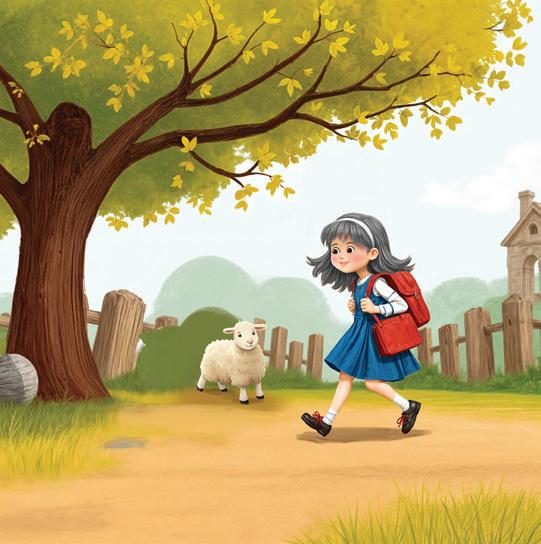

Circle Time Exploring the Market
General Awareness Fun with Animals
Foundational Literacy That is Literacy Workbook, page 22
Foundational Numeracy Numbers from 71 to 80 Numeracy Workbook, page 28
DIY Rhyme: Mary Had a Little Lamb Rhymes and Stories, page 33
LO: Children will name any one thing that they can see in a market.
1. Warm-Up: Greet the children warmly. Ask: Have you ever been to a market? What do we see there? Talk about the different things and people found in a market—like fruits, vegetables, shopkeepers, buyers, etc. Keep it lively and relatable!

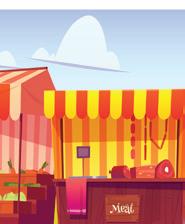


2. Market Talk: Invite children one by one to name one thing they might see in a market. Say: What can you see in a market? Give gentle hints if needed, such as: This person sells things… / It is something you eat that is red and round. Ensure that no words are repeated and guide children to come up with as many different words as they can.

Examples of Objects in a Market Place: Different fruits and vegetables, buyers, shopkeepers, different shops (garments/bakery/grocery), weighing scale, money, shopping bags, buildings, hawker, milk, snacks (chips/biscuits), grains (rice, dal), eggs, spices (turmeric, chilly powder), utensils, etc.
Encourage children to give specific answers (e.g., “fruit shop” instead of just “shop”). Gently guide them to name a variety if they repeat the same type, like different fruits instead of just one.

LO: Children will recall facts about animals through fun activities. Resources: Flashcards of animals homes (from Coursebook)
Introduction
1. Recap Fun: Recall different facts on animals by asking simple questions to children. Say: I will say some facts, listen to them carefully. Explain if the sentence is correct, respond by saying YES and showing a thumbs up; if it is incorrect say NO with a thumbs down. For example, you may say: A cow is a wild animal. / A horse lives in a stable. / A tiger eats grass and plants.

2. Identifying Animal Homes: Place the animal home flashcards on the table. Call the children one by one. Say the name of an animal and show a flashcard. For example, say: I am a bee. Is this my home? Encourage the child to think and respond. Repeat with different animals and flashcards. Ensure everyone gets a turn.







LO: Children will frame simple sentences using the phrase ‘That is’ and write them. Resources: Literacy Workbook, page 22; some common classroom objects
1. Recap: Begin by pointing to something across the room (like a bin or bag) and say: That is a bag. Repeat with 2–3 examples and invite children to repeat after you. Write the sentences on the board as you say. Then put your finger under each word and read aloud the sentence.
Try to show objects that are CVC words with middle /a/, /e/ and /i/ sounds (pen, mat, fan etc.). This will help children to associate the word with the object thereby remembering the concept in a better way.
2. Framing Sentences: Call the children one by one. Show or place one object near them and another farther away. Ask them to frame a sentence using ‘That is’ for the correct object. Gently guide them if needed and ensure each child gets a turn.
3. That is: Ask children to open page 22 of the Workbook. Guide them to identify the objects and write the sentences using the phrase ‘That is’ for numbers 1 to 4. You can write the sentences on the board for reference.











Refer to page 22 of the Workbook. Complete writing the sentences for 5 and 6 using ‘That is’.
LO: Children will count and identify the symbols of numbers from 71 to 80.
Resources: Numeracy Workbook, page 28; 8 bundles of ten ice-cream sticks; loose ice-cream sticks
1. Identifying the Number and Counting: Call children one by one and write a number between 71 to 80 on the board. Ask children to identify the number and count and show the number using the bundles and the loose sticks. Guide them to say, for example: 7 tens and 1 more makes 71. Ensure everyone gets a turn.
2. Numbers from 71 to 80: Ask children to open page 28 of the Workbook. First guide them to fill in the boxes with the missing numbers. Then, ask them to count the number of pencils and write the total.



1. Rhyme Time: Recite the rhyme Mary Had a Little Lamb with voice modulations and expressions. Ask children to follow and sing along. Repeat 3–4 times.
2. Making a Lamb: Give the materials to the children. Demonstrate and guide the children to make a lamb using the following guidelines:
• Give each child a paper plate to make the lamb’s body.
• Ask them to tear or roll small pieces of cotton and stick them to fill the lamb’s body.
• Help them cut out or draw the lamb’s head and legs using black paper or sketch pens.
• Stick the parts to make it look like a fluffy lamb.












































































































LO: Children will recite the rhyme Mary Had a Little Lamb and make a lamb using paper plates.

































You can display the lambs made by the children in a wall to decorate the classroom.












Resources: Rhymes and Stories, page 33; paper plate; cotton balls or loose cotton; black paper or white paper; glue; sketch pens



Domain
Circle Time
General Awareness
Memory Game
Water Animals
General Awareness, page 58
Foundational Literacy This or That Literacy Workbook, page 23
Foundational Numeracy Counting in Groups Numeracy Workbook, page 29
DIY An Origami Bunny
Art and Craft, page 18
LO: Children will look at some common classroom objects and try to guess the missing one.
Resources: Some common classroom objects; a dupatta or a cloth
1. Warm-Up Setting: Place 4–6 objects in the centre of the circle. Let children see and name each item aloud together.
2. Memory Game: Ask the children to close their eyes or gently turn around. Remove one object silently and cover the remaining with the cloth. Say: Open your eyes! What’s missing? Let children guess what was taken away. The child who guesses right gets to remove the next item. Repeat a few rounds, increasing difficulty by adding or removing more items! Switch up the objects every few rounds to keep the game exciting. For an extra challenge, shuffle the object positions before covering them!

LO: Children will identify and name some common water animals.
Resources: General Awareness, page 58
Introduction
1. Warm-Up: Begin with a fun discussion, ask: Where do fish live? Take responses from children and then ask: Do you know any other animals that live in water? Let the children share their responses.
2. Rhyme Time: Recite the rhyme Splashy Splash in the Sea with voice modulations and expressions. Sing the rhyme 3–4 times for reinforcement and ask children to repeat after you.
Splashy Splash in the Sea Splash, splash goes the fish, Swish, swish with a silver wish! Blub, blub says the jelly so slow, Snap, snap goes to the crab below! Flap, flap swims the turtle near, Click, click—the dolphin’s here! Squish, squish goes the wiggly eel, Splashy splash—what a watery feel!
3. Water Animals: Ask children to open page 58 of the General Awareness book. First, ask children to observe the picture and share what they see. Then point to the water animals and name them one by one. Ask children to say aloud the names of the animals after you.







LO: Children will write sentences starting with the words ‘this’ or ‘that’.





Resources: Literacy Workbook, page 23; a few classroom objects (book, pencil, pen, marker, etc.)
1. Recap: Hold two familiar classroom objects—one close to you and one farther away (e.g., a book and a pencil box). Say, for example: This is a book (object close to you). / That is a pencil box (object farther away). Repeat with a few different objects. Encourage children to repeat after you and show the difference between ‘this’ and ‘that’.
2. Look and Say: Place two objects—one near and one far—and call children one by one. Ask: What is this? (pointing to the close object) / What is that? (pointing to the farther one). Encourage full sentences, such as: This is a crayon. / That is a chair. Give prompts or help if needed and ensure each child gets a turn.
3. This or That: Ask children to open page 23 of the Workbook. Guide them to identify the pictures and frame the sentences using ‘this’ and ‘that’. Write 2–3 sentences on the board and encourage children to write the rest by themselves.








Observe different things around. Write one sentence starting with ‘This’ and another with ‘That’ and bring it to the class the next day.




LO: Children will count objects in groups of 10.
Resources: Numeracy Workbook, page 29; 10 bundles with 10 ice-cream sticks in each bundle
1. Counting in Groups of 10: Call children one by one. Give them a quantity, say for example: Show me 3 groups of 10. Guide children to pick up the correct number of bundles. Also, guide them to say, for example: 3 tens make 30. Ensure everyone gets a turn, and give different numbers to children.
2. Counting in Groups: Ask children to open page 29 of the Workbook. Guide them to look at the pictures, identify the number of bundles and write the correct number symbol.
Resources: Art and Craft, page 18; Origami paper (from the Art and Craft book)
1. Rhyme Time: Begin the session by reciting the rhyme Bunny Hop with voice modulations and expressions. Ask children to follow you. Repeat 3–4 times.
2. Origami Bunny: Distribute the origami papers and say: Today we will make a cute bunny using a paper. Demonstrate and guide children to make the bunny by following the instructions given on page 18 of the Art and Craft book.

















LO: Children will develop their fine motor skills by making a bunny using origami art.
















































Bunny Hop Bunny, bunny, hop, hop, hop, Through the garden, never stop! Wiggle nose and floppy ears, Hopping fast—then disappears!







Circle Time Mini Debate Circle
General Awareness Fun with Water Animals
Foundational Literacy Recall /a/, /e/, and /i/ Literacy Workbook, page 24
Foundational Numeracy Revising Numbers from 51 to 80
DIY An Origami Bunny Art and Craft, page 19
LO: Children will practise speaking, listening and expressing simple preferences confidently.
1. Warm-Up Discussion: Begin by saying: Today we will take turns sharing what we like. Everyone’s choice is okay, and we will listen to each other. Give a few examples to model:
• I like mango more than banana because it’s sweet!
• I like playing outside more than drawing because I can run! Encourage a few children to share their favorites in a friendly tone.
2. Debate Time–This or That: Divide the children into two groups based on their preferences. Choose very simple topics like: Mango or Banana/Cat or Dog/Playing outside or Watching cartoons/Rain or Sunshine etc. Say: If you like mango more, come stand here. If you like bananas, stand on the other side. Let children take turns saying: I like ___ because ___. Help with sentence starters like: I like it because it’s fun/yummy/soft/funny. Keep it light, supportive and praise all efforts.


LO: Children will play a fun game on water animals and make a jelly fish. Resources: Half paper plate (1 per child); thin strips of paper (6–8 per child); crayons; glue
1. Recap: Begin by asking: Name some animals that are found in water. Let children share their responses freely. Then, recite the rhyme Splash Splash in the Sea from the previous session.
2. Jump in the Water: Say the name of an animal. If it is a water animal, children pretend to jump in water. If it is not a water animal, they stay still.
Use both familiar (fish, duck) and tricky ones (elephant, lion) to make it fun!

3. A Jelly Fish: Say: A jellyfish lives in the sea. It has a soft, round top and long, wiggly legs that float in the water! Ask children to wiggle their hands like jellyfish tentacles. Say: Today we will make a jellyfish.
4. Jelly Fish Craft: Give the materials to the children. Ask them to colour or decorate the plate using crayons or sketch pens. Let them draw dots, swirls, or patterns to make it pretty. Hand out 6–8 paper strips to each child. Demonstrate how to glue the strips on the flat edge of the plate to look like tentacles hanging down.
If paper plates are not available, you can also use cutouts of half circles.







LO: Children will write the CVC words with middle /a, /e/ and /i/ sounds.
Resources: Literacy Workbook, page 24
1. Guess the Middle Letter: Write a CVC word on the board with the middle letter missing (e.g. b__ t). Say aloud the word (e.g. bed) and ask children to identify the middle sound and guess the middle letter to complete the word. Repeat with 6–8 different CVC words.
2. Writing Words: Call children one by one. Say aloud a CVC word with middle /a/, /e/ or /i/ sound. Guide children to write the spelling of the word on the board using chalk. Ensure everyone gets a turn.
In case the children are struggling to write the correct spelling, guide them by breaking the sounds and then blending them. For example: /b/ /a/ /t/ – bat.
3. Recall /a, /e/ and /i/ Sounds: Ask children to open page 24 of the Workbook. Guide them to identify the pictures and write down the words. Solve only the left hand side of the page in class.











Refer page 24 of the Workbook. Solve page 24 by identifying the pictures and writing the words given on the right side.




LO: Children will revise the numbers from 51 to 80 using hands–on activities. Resources: 8 bundles of 10 ice-cream sticks; loose ice-cream sticks; chalks
1. Associating Numbers with Symbol: Keep the bundles of ice-cream sticks and the loose sticks neatly on the table. Call children one by one and say aloud a number between 51 to 80 (e.g. 67) and ask children to represent the number using bundles and loose sticks and write the number on the board. Guide them to say, for example: 6 tens and 7 makes 67. Ensure everyone gets a turn.
2. Find the Missing Numbers: Write some numbers between 51 to 80 in a sequence with some numbers missing in between. For example: 67, __, 69 _____, 71, 72. Ask children to guess and say aloud the missing numbers. Repeat with at least 10 sets of numbers.
LO: Children will recite a rhyme on bunny and paste the origami bunny. Resources: Art and Craft, page 19; origami bunny made in the previous session; glue
1. Rhyme Time: Recite the rhyme bunny hop with voice modulations and expressions. Ask children to follow and repeat 3–4 times.
2. Name Your Bunny: Ask the children to come forward one by one and guide them to show their origami bunny and give a name to their bunny. Guide them to say: I made this bunny. It is __ in colour. The name of my bunny is _____.
3. Pasting Time: Demonstrate and guide the children to paste their bunny on page 19 of the Art and Craft book with glue.









Domain
General Awareness
Learning Outcome Children will identify and name some common animals and their homes.
Resources Flashcards of animal homes (from Coursebook)
Suggested Method Place the flashcards of animal homes neatly on a table. Call the children one by one and say the name of an animal. Ask them to look at the pictures and identify the correct home of the animal. Appreciate their effort by clapping and giving a smiley sticker. Make sure every child gets a turn.
Support for Struggling Learners
Domain
Gather the children together. Refer to page 57 of the General Awareness book. Show the pictures from the book and say aloud the names of the animals and their homes. For example, say: A frog lives in a pond. Ask children to repeat after you.
Foundational Literacy
Learning Outcome Children will frame simple sentences using the words ‘this’ and ‘that’.
Resources Some common classroom objects
Suggested Method
Support for Struggling Learners
Domain
Call the children one by one. Place one object near the child and another one farther away. Guide the child to frame sentences using ‘This’ for the nearby object and ‘That’ for the object farther away. Support them as needed and encourage correct usage. Appreciate their effort by clapping and make sure every child gets a turn.
Gather the children together. Say: We start a sentence using ‘this’ to show an object that is nearby. Show some objects and give them some examples like: This is a cup. / This is a pen. Then invite a few children to frame sentences using ‘This’. Repeat the same for ‘That’. Say: We use ‘that’ to show objects that are far away.
Foundational Numeracy
Learning Outcome Children will count numbers from 71 to 80 by grouping into groups of ten.
Resources
Suggested Method

Support for Struggling Learners
Ice-cream sticks: 8 bundles of 10 sticks and loose sticks
Call children one by one. Say a number between 71 to 80. Ask the children to show the number using the bundles and loose sticks. Then, guide them to write the number on the board. Clap for each child and give them a smiley sticker. Ensure everyone gets a chance.
Gather the children together. Count and show numbers 71 to 80 using bundles of 10 and loose sticks. Say, for example: 7 bundles of 10 and 1 more make 71. Write the number symbol (e.g. 71) on the board as you count. Ask children to repeat after you. Repeat for all numbers till 80.



































Circle Time
Sharing Morning Stories
General Awareness Birds
General Awareness, page 59
Foundational Literacy Middle Sounds /o/ Literacy Skillbook, pages 45–46
Foundational Numeracy Numbers from 81 to 90 Numeracy Skillbook, page 40
DIY Story: The Elephant and the Brave Little Ants Rhymes and Stories, pages 35–38
LO: Children will express themselves by sharing one sentence about their morning, enhancing their speaking skills and confidence in a group setting.
Resources: Common classroom objects that can be used as a mic (duster, ruler, a small bottle, etc)
1. Warm-Up: Begin with a friendly greeting. Say: Good morning, everyone! Today, each of us will share a little story about our morning. It can be what you ate, something you did, or something you saw! Give 2–3 examples using simple sentences: I ate a banana. / I saw a cow on the way to school.
2. Sharing Time: Call children one by one and give them an object which they can use like a microphone. Ask children questions that can guide them what to think about and say, such as: What is one thing you did this morning? Help them frame a simple sentence, if needed. Use positive reinforcement like: Great job! or That’s a lovely story about your morning!


LO: Children will identify and name some common birds around us.
Resources: General Awareness, page 59
1. Warm-Up Discussions: Start with a simple question: Have you seen any birds around your home or school? Listen to their responses and name a few common birds like crow, sparrow, pigeon, and parrot. Say: Birds have feathers, wings, and beaks. Most birds can fly!
2. Birds: Ask the children to turn to page 59 in the General Awareness book. Point to each bird, one by one, read its name aloud to the class, and ask them to repeat after you. Share 1–2 simple facts about each bird.















For example: This is a parrot. It is green. It can copy what we say. / This is a duck. It swims in water and says ‘quack quack.’
3. Identifying Birds: Point to any of the birds given in page 59 and ask: Who can tell me the name of this bird? Encourage group responses and cheer for each correct answer. If possible, take children outside, either to the school garden or to the playground. Help them look for birds and ask them to identify them.







LO: Children will recognise and understand middle /o/ sounds in CVC words. Resources: Literacy Skillbook, pages 45–46; some objects, or pictures of objects, with the middle /o/ sound
1. The Middle /o/ Sound: Write the letter ‘o’ on the board and say: This is the letter o. It makes /o/ sound. Show different pictures or objects, and as you say each word aloud, emphasising the middle /o/ sound. Ask children to repeat after you, really stretching the middle /o/ sound. For example: po - o - t / bo - o - x / to - o - p.
2. Three Letter Words: Write simple CVC words with the middle /o/ sound like HOT, POT, TOP, etc. on the board. Point to each letter and its sound, and then at the end, read the sound of the letters together as a word. For example: /p/ - /o/ - /t/ → pot. Ask children to repeat after you, helping them read the words fluently.
3. Middle Sounds /o/: Write ‘od’ on the board and say: We will read the words that have middle sound /o/ and end with the /d/ sound. Guide children to open page 45 of the Skillbook. Write the ‘od’ words on the board. Practice read alouds of each letter and then the entire word, as done in step 2. For example: /p/ - /o/ - /d/ → pod; /c/ - /o - /d/ → cod. Repeat the same process for other word families too.
4. Matching Words: Ask children to turn to page 46 in the Skillbook. Guide them to read and match the same words.

















LO: Children will recognise, count and write numbers from 81–90 through hands-on grouping.
Resources: Numeracy Skillbook, page 40; 9 bundles of 10 ice-cream sticks; loose ice-cream sticks
1. Counting 81 to 90: Show 8 bundles with 10 ice-cream sticks in each and say: This is 80. Add one loose stick and say: Now it’s 81. Keep adding sticks, one by one, counting up to 90.
2. Making Number Groups: Call the children one by one. Give them 9 bundles of 10 sticks as well as the loose sticks. Call out a number (88), and ask children to show it using 8 bundles of 10 sticks and 8 loose sticks. Repeat with different numbers and ensure every child gets a turn. Guide them to say, for example: 80 and 8 makes 88.





3. Numbers from 81 to 90: Ask the children to open to page 40 of the Skillbook. Say the numbers aloud and ask children to repeat after you. Say: 80 and 1 makes 81; 80 and 2 makes 82 and so on. Write the numbers on the board as you say them out loud. Then, ask children to complete the first column by writing numbers from 81 to 90 on page 40 of the Skillbook.


Refer to page 40 of the Skillbook. Complete writing the numbers from 81 to 90 in the second column.
LO: Children will develop their listening skills and speaking skills through the story The Elephant and the Brave Little Ants.
Resources: Rhymes and Stories, pages 35–38
1. Ant or Elephant: Gather the children in a circle, if possible. Tell them that when you say elephant, they must stomp their feet, and when you say ant, they must snap their fingers. After that, randomly say elephant and ant a few times to play this game.
2. Picture Talk: Ask children to refer to pages 35 to 38 of the Rhymes and Stories book. Discuss the pictures from the story. Ask them questions like: What is the elephant doing? / What animals do you see in the picture? / What are the ants doing?




Domain Topic of the Day Book & Page
Circle Time What Would You Do?
General Awareness Sequencing
General Awareness, page 60
Foundational Literacy Middle Sounds /o/ Literacy Workbook, page 25
Foundational Numeracy Numbers from 81 to 90 Numeracy Workbook, page 30
DIY Story: The Elephant and the Brave Little Ants Rhymes and Stories, pages 34–38
LO: Children will think creatively and express solutions through a fun, scenario-based discussion.
1. Warm-Up Discussion: Gather children in a circle. Begin with a short conversation. Say: Imagine you are walking home and suddenly it starts raining! What will you use to cover yourself? Encourage them to think about and say umbrella or raincoat. Then say: Oh no! You forgot your umbrella / raincoat! What will you do now? Ask more situational questions, such as:
• What if it rains and you have no umbrella? (Possible answers: Take shelter under a tree or in a nearby shop, use the bag to cover my head, etc.
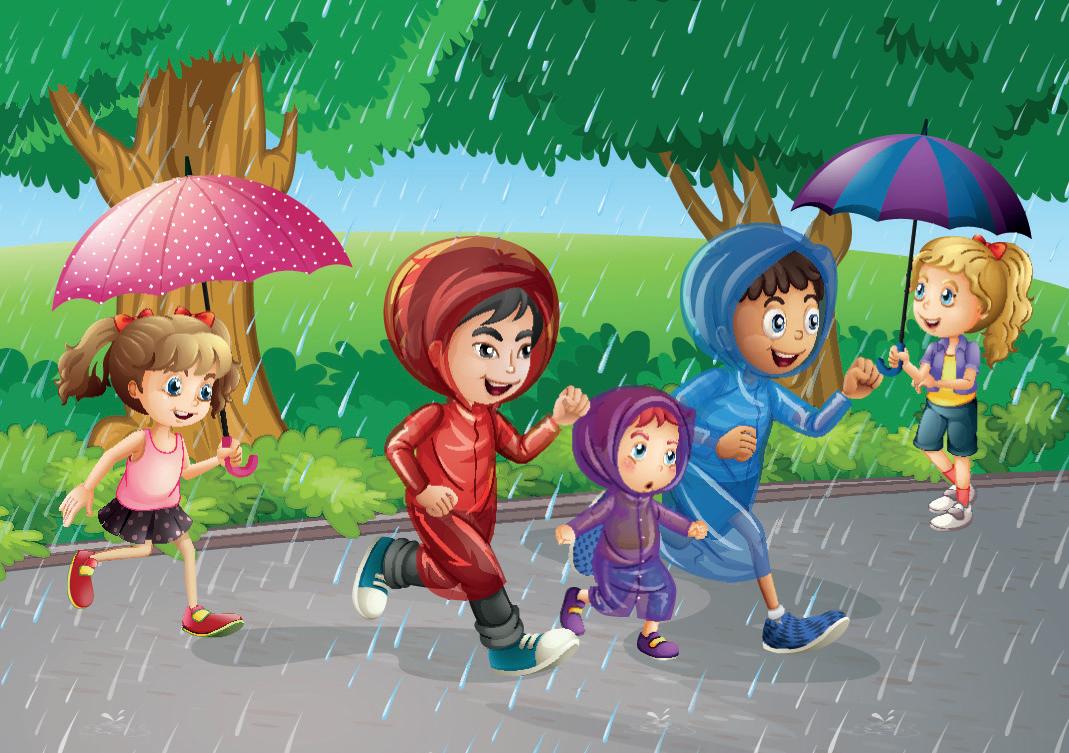
• What if your shoes get wet? (Possible answers: I will take them off, I will go home and put them to dry, etc.)
• What if get completely wet in the rain? What will you do? (Possible answers: I will go home and quickly dry myself with a towel, etc.)


LO: Children will discuss and read a story about a bird building its nest. Resources: General Awareness, page 60; some twigs
1. A Nest: Begin by asking: Do you know where birds lay its eggs? Listen to a few responses and say: Birds lay their eggs in a nest. Ask: Have you ever seen a nest? Listen to what the children say and then show the twigs to the children, saying: Birds make nests with twigs.
2. Picture Talk: Ask children to open to page 60 in the General Awareness book. Point at each of the pictures and talk about them. Ask questions like: What is the bird doing? / What do you see in the picture? Welcome all responses.
3. Interactive Read-Aloud: Read aloud the story while showing the pictures to the children. Pause in between to ask questions like: What did Mumma bird use to build the nest? / Where did Mumma bird lay eggs? / Who came out of the eggs?











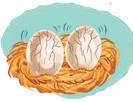




LO: Children will read CVC words with middle /o/ sound and match them with the correct pictures.
Resources: Literacy Workbook, page 25
1. Reading Time: Write simple CVC words with middle /o/ sound like: POT, HOT, COD, TOP, etc. on the board. Point to each letter and sound it out slowly, blending the sound together in the end. For example: /h/ - /o/ - /t/ → hot. Then, invite a few children to read the words individually.
2. Middle Sound /o/: Ask the children to open page 25 of the Workbook. First, read aloud the words one by one. Then, guide children to identify the pictures and match them with the correct word.












Look around your house. Find three objects that have middle /o/ sounds and write the words in your notebook.
LO: Children will count and identify the symbols of numbers from 81 to 90.
Resources: Numeracy Workbook, page 30; 9 bundles of tens ice-cream sticks, loose ice-cream sticks
Introduction
1. Identifying Numbers and Counting: Call the children one by one and write a number between 81 and 90 on the board. Ask children to first identify the number and then count and show it using bundles and loose sticks. Encourage them to voice the numbers that they are grouping. For example: 8 tens and 1 more makes 81. Ensure everyone gets a turn.

2. Numbers from 81 to 90: Ask children to open page 30 of the Workbook. First guide them to fill in the boxes with the missing numbers. Then, ask them to count the number of crayons and write the total.


LO: Children will listen to the story The Elephant and the Brave Little Ants and share their reflection. Resources: Rhymes and Stories, pages 34–38
1. Interactive Read-Aloud: Read aloud the story The Elephant and the Brave Little Ants with expressions and voice modulation. Pause at relevant places to show pictures and discuss questions from the story. Ask questions like:
• What did the elephant do when the other animals lay on the riverbank?
• Who decided to teach the elephants a lesson?
• What did the ants do?
• What did the elephant do at the end?

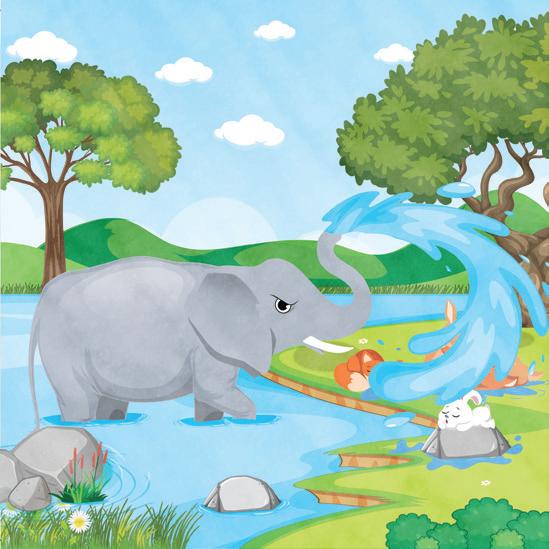
2. Reflection Time: Ask children to share one thing that they learnt from the story. Listen to every child’s response and guide them with questions, such as: Is it right that the elephant is mean to the other animals? / Did the elephant do the right thing at the end?

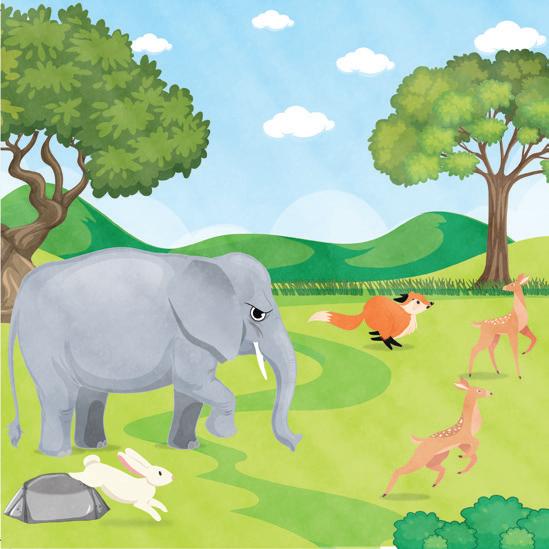
Circle Time Word Chain
General Awareness Fun with Birds
Foundational Literacy Complete the Words Literacy Skillbook, page 47
Foundational Numeracy Numbers from 91 to 100 Numeracy Skillbook, page 41
DIY An Ice-Cream Tractor Art and Craft, page 20
LO: Children will recall and say CVC words with middle vowels /a/, /e/, /i/, /o/ in a word chain format.
1. Warm-Up: Begin by revising a few CVC words with each vowel. Say each word aloud and ask the children to repeat:
• /a/ words: cat, man, fan
• /e/ words: pen, net, ten
• /i/ words: pin, lip, zip
• /o/ words: pot, top, dog
2. The Word-Chain Game: Start with a simple CVC word (e.g., cat). The next child says a new CVC word that begins with the last letter of the previous word (e.g., top). The word can have any middle vowel sound. Continue the chain around the circle. If a child is unsure, gently prompt or allow a friend to help.
Play the game again using CVC words with only one middle sound to make it challenging.


LO: Children will develop their fine motor skills by making a bird using their handprints. Resources: Drawing paper (1 per child); watercolours
1. Recap: Start a short conversation: Can you name some birds you know? Show the bird pictures from page 59 of the General Awareness book and recall their names together. Prompt them with hints, if needed.

2. Bird or Not a Bird: Explain the rules: When I say a word, flap your arms like wings only if it’s a bird! If it’s not a bird, stay still! Then, say a mix of birds and animals slowly (e.g., crow, lion, hen, cat, parrot, elephant, duck, goat). Praise them for listening carefully and playing correctly!

3. Handprint Bird: Give the art paper and colours to the children. Demonstrate and guide children to dip their hand in the watercolours and press it onto a drawing paper. Say: Your handprint looks like a bird! Help them draw a small beak and eye on the thumb area to complete the bird.
You can also trace the outline of the children’s hand with crayons if they cannot get watercolours. Also, ensure that the children wash their hands after the activity.







LO: Children will identify and spell CVC words with middle sound /o/.
Resources: Literacy Skillbook, page 47
1. Recap: Write some CVC words with middle sound /o/ on the board. For example: POT, COD, TOP, MOP, etc. Point to each letter and its sound, and then at the end, read the sound of the letters together as a word. For example: /p/- /o/- /t/ → pot. Ask children to repeat after you, helping them blend and read the words fluently.
2. Guess the Missing Letter: Call the children one by one. Say aloud a CVC word (e.g., POT), and write its spelling on the board with one letter missing (p o __). Guide the children to guess the missing letter. Repeat with 8–10 different words.
3. Completing the Words: Guide children to open page 47 of the Skillbook. Guide them to identify the pictures and complete the words by filling in the missing letters.










LO: Children will recognise, count and write the numbers from 91 to 100 through grouping.
Resources: Numeracy Skillbook, page 41; 10 bundles of 10 ice-cream sticks; loose ice-cream sticks
1. Counting 91 to 100: Show 9 bundles with 10 ice-cream sticks in each and say: This is 90. Add one loose stick and say: Now it’s 91. Keep adding sticks one by one, counting up to 100.




2. Making Number Groups: Call the children one by one. Give each child 10 bundles of 10 sticks and the loose sticks. Call out a number (e.g., 92), and ask children to show it using 9 bundles of 10 sticks and 2 loose sticks. Repeat with different numbers and ensure every child gets a turn. Guide them to voice the numbers while counting, such as: 90 and 2 makes 92.
3. Numbers from 91 to 100: Ask children to open to page 41 in the Skillbook. Read the numbers aloud and ask children to repeat after you. Say: 90 and 1 makes 91, 90 and 2 makes 92, and so on. Write the numbers on the board as you say them. Then, ask children to complete writing the numbers from 91 to 100 on page 41 of the Skillbook.



Practise writing numbers 91 to 100 in your notebook. Say the numbers aloud as you write.
LO: Children will make an ice-cream tractor with ice-cream sticks, and black and white paper. Resources: Art and Craft, page 20; red paint; paint brush; 5 ice-cream sticks (per child); black and white sheet (from Art and Craft book); glue
1. Warm-Up: Start by asking: How many of you like to eat ice-cream? Which is your favourite ice-cream? Let children share their responses freely. Then say: From where do you buy ice-cream? Welcome all responses.
2. An Ice-Cream Tractor: Ask children to open page 20 of the Art and Craft book. Guide them to paste the ice-cream sticks on the tractor and paint them red. Then, demonstrate and guide them to cut out circles from the black and white coloured sheet to make the wheels of the tractor.

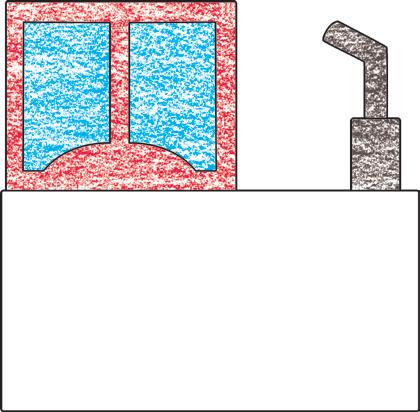




Circle Time
General Awareness
Foundational Literacy
Being a Good Person
Animal Care
General Awareness, page 61
Writing CVC Words Literacy Skillbook, page 48
Foundational Numeracy Numbers from 91 to 100
DIY
Feet of the Wild
Numeracy Workbook, page 31
Art and Craft, page 21
LO: Children will identify positive behaviours and make choices that reflect kindness, honesty, and fairness.
1. Warm-Up Discussion: Say: Today, we will talk about being a good person. That means doing the right things even when no one is watching! Ask simple guiding questions:
• What do you do when someone drops something?
• Should we wait for our turn while playing?
• Is it okay to take something without asking?
Welcome all answers and gently guide children toward understanding helpfulness, fairness, honesty, and using polite words like please and sorry.
2. Yes or No: Say a few simple situations aloud. If it shows a good person’s actions, children say Yes! and clap. If not, they say No! and cross their arms.
Examples:
• You wait for your turn in line. → Yes!
• You shout when the teacher is talking. → No!
• You tell the truth if you break a toy. → Yes!
• You push a friend aside to go first. → No!
Keep the pace quick and fun!


LO: Children will understand and talk about how to take care of animals.
Resources: General Awareness, page 61
Introduction
1. Warm-Up: Start a friendly talk with the children. Ask: Do you have any pets at home? How do we take care of animals? Guide the conversation with simple prompts like:
• We give them food and water.
• We keep them clean.
• We do not hurt them.
• We are kind to animals.
Encourage all responses. Gently correct them, if needed, and praise the answers that are thoughtful.
2. Mimicking Animals: Ask children to act out different ways to take care of animals. Examples of some actions: Pretend to feed a dog. / Pretend to bathe a cat. Gently stroke or pet an animal. Say: Let us show how we care for animals without using any words! Each child gets a turn. Others guess what they are doing.




3. Animal Care: Ask children to open page 61 of the General Awareness book. Ask them to look at the pictures and guide them to identify the actions taking place in each picture. Then, help them put a tick on the actions that are right and a cross on the actions that are wrong.








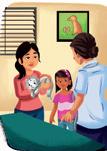

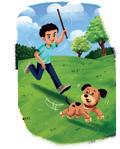
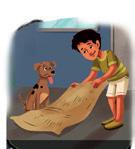

LO: Children will identify pictures of items with middle /o/ sound and write the words.
Resources: Literacy Skillbook, page 48
1. Recap: Write words with the middle /o/ sound on the board (e.g., top, cop, mop, dog, etc.). Guide children to read the words, emphasising the letter sounds. For example: /m/ /o/ /p/ – mop. Then, invite a few children to read the words individually.
2. Guess the Spelling: Call children one by one and say aloud an item with the middle /o/ sound (pot). Guide children to spell out the word, emphasising on the letter sounds and then write the spelling on the board. (e.g: /p/ /o/ /t/ → pot)
3. Tracing and Writing: Ask children to open page 48 of the Skillbook. Guide them to identify the pictures, trace and write the spelling of the words.



Refer to page 48 of the Skillbook. Colour the pictures of the objects given.

LO: Children will count and identify the symbols of numbers from 91 to 100.
Resources: Numeracy Workbook, page 31; 10 bundles of 10 ice-cream sticks; loose ice-cream sticks
1. Identifying Numbers and Counting: Call children one by one and write a number between 91 and 100 on the board. Ask children to identify the number and count and show the number using the bundles and the loose sticks. Guide them to say, for example: 9 tens and 1 more makes 91. Ensure everyone gets a turn.
2. Numbers from 91 to 100: Ask children to open page 31 of the Workbook. First guide them to fill in the boxes with the missing numbers. Then, ask them to count the number of crayons and write the total.
LO: Children will draw lines to match the animals with their correct feet.
Resources: Art and Craft, page 21; cotton swabs (Q-Tips); paints
1. Identifying Animals: Ask children to open page 21 of the Art and Craft book. Guide them to identify the animals given on the page. Say: We will trace lines to help the animals reach their feet.
2. Feet of the Wild: Show the children how to dip the cotton swab in the paint and then trace the path to help the animals reach their feet.













Domain General Awareness
Learning Outcome Children will identify different ways of taking care of animals.
Resources General Awareness, page 61
Suggested Method Call the children one by one. Ask them to enact and explain how they can take care of different animals. Give them prompts, if required. Appreciate their effort by clapping and giving a smiley sticker. Make sure every child gets a turn.
Support for Struggling Learners
Gather the children together. First, ask them to share how they think one can take care of animals. Then, refer to page 61 of the General Awareness book and describe each picture, helping them to identify which actions towards animals are correct and which are incorrect.
Domain Foundational Literacy
Learning Outcome Children will identify and read words with middle /o/ sounds.
Resources –
Suggested Method
Support for Struggling Learners
Call children one by one. Say aloud a word with middle /o/ sound. Guide children to spell the word and write it on the board. Clap for each child and give them a smiley.
Gather the learners. Show them objects or pictures of objects with middle sound /o/ (e.g., pot) and write it on the board. Guide the children to read the sound of each letter before reading the entire word: /p/ /o/ /t/ → pot. Ask the children to repeat 3–4 times after you. Repeat as many words as possible.
Domain Foundational Numeracy
Learning Outcome Children will count numbers from 81 to 100 by grouping into groups of ten.
Resources Ice-cream sticks: 10 bundles of 10 sticks, and 10 loose sticks
Suggested Method

Support for Struggling Learners
Call children one by one. Say a number between 81 to 100. Ask the children to show the number using the bundles and the loose sticks. Then, guide them to write the number on the board. Clap for each child and give them a smiley sticker. Ensure everyone gets a chance.
Gather the learners together. Count and show numbers 81 to 90 using bundles of 10 and loose sticks. Say, for example: 8 bundles of 10 and 1 more make 81. Write the number symbol (e.g., 81) on the board as you count till 90. Ask children to repeat after you. Repeat for all numbers 91 to 100.




































Circle Time
General Awareness
My Light Inside
Animal Art
General Awareness, page 62
Foundational Literacy Read for Fun: /o/ Sounds Literacy Skillbook, page 49; Literacy Workbook, page 26
Foundational Numeracy Counting in Groups
DIY
Magnet Magic
Numeracy Workbook, page 32
STEM Exploration, pages 15–16
LO: Children will practise simple meditation and share what makes them feel calm and happy.
Resources: Soft music
1. Looking Within: Ask children to sit with their eyes closed. You may play soft music in the background. Say: Let us all close our eyes and take a deep breath… in and out… Now imagine a small, warm light glowing inside your heart. This is your special light. It shines when you are happy, kind, or calm. Can you feel it? Let us keep it glowing bright.
2. Sharing Circle: Invite children to share one thing that makes their heart feel happy, peaceful, or kind. Give some examples: I feel good when I hug my mother. / I feel good when I share my toys with my friend. Help them frame their thoughts with sentence starters like: My light shines when I… or I feel happy when I…

LO: Children will identify the missing parts of the animals and draw them.
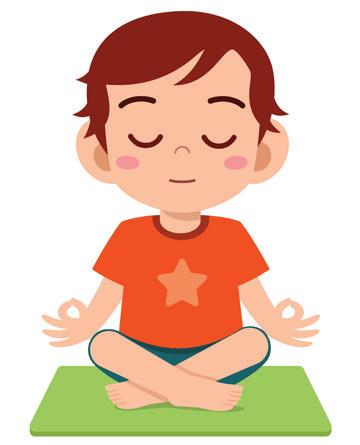
Resources: General Awareness, page 62; chart with labelled pictures of animal body parts (tails, feet, ears, fins, etc.)
1. Parts of Animals: Talk about the body parts of birds and animals. You may either use a chart that has these parts labelled or write them on the board and talk about them to the children.
Birds: Wings, feet, beak, eyes, etc.
Animals: Leg, tail, horn, eyes, mouth, ears, etc.
2. Picture Talk: Ask children to open page 62 of the General Awareness book. Help them identify the animals given in the picture and identify the missing parts. Example: This is a duck. Its feet are missing.
3. Animal Art: Guide children to draw the missing parts of the animals given on page 62 of the General Awareness book. You can draw the missing parts on the board for the children’s reference.












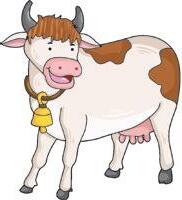

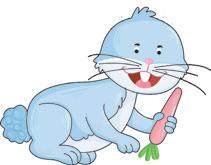

LO: Children will read simple sentences with words having middle /o/ sounds. Resources: Literacy Skillbook, page 49; letter flashcards (from Skillbook)
1. Reading CVC Words: Write down the words with middle /o/ sound on the board from page 49 of the Skillbook (fox, dog, box, mop). Point and read aloud the words one by one and ask the children to repeat after you.
2. Making CVC Words: Give the flashcards to the children. Say aloud a few words with middle /o/ sound. Guide them to make the words using the letter flashcards. Go around to check the children’s work and guide them as required.
3. Guided Reading: Refer to page 49 of the Skillbook. Read aloud the sentences slowly but loudly, and with clear pronunciation. Ask children to repeat after you while pointing to each word with their finger. Point and show the picture while reading.
4. Reading Practice: Call children one by one to read a sentence from the Skillbook. Encourage others to repeat the sentence after them. Assist children if they struggle to read.




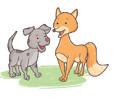


Refer to page 26 of the Workbook. Read aloud the CVC words and complete writing them.

LO: Children will count in groups of tens and ones.
Resources: Numeracy Workbook, page 32; 10 groups of 10 ice-cream sticks; loose sticks
1. Associating Number with Symbols: Call children one by one. Write a number on the board (e.g., 56) and show that number using bundles and loose sticks. Ask: Does the number on the board match the number of sticks shown? Encourage the child to check by counting the bundles (tens) and loose sticks (ones). If the number is incorrect, prompt the child to count and arrange the correct number using bundles and sticks. Ensure each child gets a turn. Gently guide and praise all efforts.
2. Counting in Groups: Ask children to open page 32 of the Workbook. Guide them to count the number of groups and write the correct number.


LO: Children will identify that magnets can pull certain things towards itself and stick to certain objects.
Resources: STEM Exploration, pages 15–16; a magnet; various objects (paper clip, key, plastic spoon, crayon, socks)
1. Magnet Hunt: Call children in small groups. Give each group a tray of objects (of different materials) and a magnet. Ask them to test each object: Does it stick to the magnet? Help them sort into two piles – “Magnet Sticks” and “Magnet Does Not Stick”. Ensure everybody gets a turn.
2. Explore and Find: Call a few children. Ask some of them to take the magnet near a wall, bench or chair and others to take it near window railing or any metal object such as a railing, almirahs, door, cupboard etc. Ask children to share their observation.
3. Magnet Magic: Guide children to solve questions given on pages 15 and 16 by ticking the correct answers. Demonstrate each activity as they solve the questions.






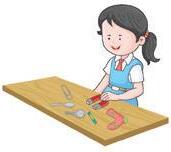
Circle Time Making a Choice
General Awareness Animals and Their Sounds
General Awareness, page 63
Foundational Literacy Rox and Bob Reader, page 4; Literacy Workbook, page 27
Foundational Numeracy Counting from 50 to 100 Numeracy Workbook, page 33
DIY Rhyme: Action Poem Rhymes and Stories, page 39
LO: Children will think critically by exploring simple everyday situations and making choices
1. Let Us Think Together: Sit in a circle, if possible, and say: I will tell you about something that has happened. I want you to think what you would do? Use simple, relatable scenarios, such as:
• You see a banana peel on the floor. What would you do?
• Your friend is not sharing his/her crayons. What would you do?
• You dropped your water bottle by mistake. What would you do?
Give children time to think and listen to their responses. Accept different answers and encourage them to explain their choice.
2. Pick a Choice: Say: Now I will give you two choices—you have to choose one and tell me why. Example scenarios:
• You are hungry. Will you eat a fruit or a candy? Why?
• It’s raining. Will you go outside or stay inside? Why?
• You find a puppy on its own. Will you walk away or tell an adult about it? Why?
Let children take turns answering these questions. Praise all answers and gently guide their thinking, if needed. Always ask: Why do you think so? To build their reasoning. Don’t focus on right or wrong—focus on thinking and explaining.



LO: Children will identify different animals and the sounds made by them.
Resources: General Awareness, page 63
1. Let’s Make Animal Sounds: Say: Let’s have fun with animal sounds! Call out the name of an animal (e.g., Dog) and ask: What sound does a dog make? Demonstrate if needed: A dog says woof woof! Repeat with common animals like cow, cat, lion, duck, and hen. Encourage children to repeat after you and act out the sounds.
2. Animals and Their Sounds: Ask children to open page 63 of the General Awareness book. Point to each animal and mention the sound made by them. Example: This is a dog. A dog barks. Repeat this for each animal 2–3 times for reinforcement.



















LO: Children will listen to, read, and write CVC words with the middle /o/ sound and read sight words.
Resources: Reader, page 4; Literacy Workbook, page 27
1. Picture Talk: Ask children to open page 4 of the Reader. Point to a picture and ask: What do you see? Take a few responses and say: This is a fox. Repeat with other pictures.
2. Explaining in Home Language: Read the lines from page 4 of the Reader and explain them in a mix of English and the home language to ensure understanding.
3. Modelling: Demonstrate how to read aloud the sentences from page 1. Read slowly but loudly with clear pronunciation and voice modulation.








4. Sight Words: Introduce the sight words from page 4. Write the sight words on the board and read each word aloud. For example, write words like as, is, sees, the, and, goes, and help children identify and read the sight words after you. Call children one by one, say a sight word, and ask them to point to it in the Reader.
5. Reading CVC Words: Introduce the CVC words on page 4. Write a word on the board and guide children in reading it. For example, write fox and say: /f/ /o/ /x/ – fox. Emphasise the middle sound /o/ and ask children to repeat after you. Repeat with other CVC words containing the middle /o/ sound such as Rox, fox, Bob, cob, hob, pop and hop.



6. Writing CVC Words: Ask children to open page 27 of the Workbook. Help them read the CVC words on the page. Ask them to trace and write only the first two lines (hop and top). Assist those who need help.
Refer to page 27 of the Workbook. Trace and write the CVC words. Practise reading words with the middle /o/ sound at home.
LO: Children will revise and identify numbers from 50 to 100 through movement and group participation.
Resources: Numeracy Workbook, page 33; chalk
1. Number Hunt: Write some numbers (between 50 to 100) randomly on the floor or on the board. Call children one by one. Say a number aloud (e.g., 63), and ask the child to find that number and bring it or point to it. After they find it, ask: What comes before and after? Help if needed. Continue till everyone gets a turn.
2. Counting from 50 to 100: Ask children to open page 33 of the Workbook. Guide children to complete the page by writing the missing numbers from 50 to 100.


LO: Children will recite the rhyme Action Poem with some fun movements and actions.
Resources: Rhymes and Stories, page 39
1. Warm-Up: Ask children to make simple actions like hopping, touching toes, stretch up high, wiggle their fingers etc. Say: We will recite a rhyme with lots of actions today.
2. Rhyme Time: Recite the poem Action Poem with voice modulations and expressions and ask children to follow. Repeat 3–4 times for reinforcement.


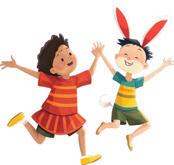



Circle Time
Sounds of Nature
General Awareness Spot Them Out
General Awareness, page 64
Foundational Literacy Rox and Bob Reader, page 4; Literacy Workbook, page 28
Foundational Numeracy Counting from 50 to 100 Numeracy Workbook, page 34
DIY Rhyme: Action Poem Rhymes and Stories, page 39
LO: Children will listen and discuss different sounds they hear in nature.
1. Listening Time: Take the children to the school field or to an area in the school premises which is open but quiet. Say: Today, let us listen to the sound of nature! Close your eyes… What sounds can you hear? Encourage responses like fan, bird, or footsteps. Then ask: What sounds do you hear outside— like in a park or when it rains? / Have you heard birds singing? / Have your heard the breeze when it blows amongst the leaves?
2. Nature Sound Game: Make or mimic different nature related sounds. Ask children to guess what the sound is and act it out if they can. Examples of sounds to mimic or describe:
• Wind blowing (whooosh) → Children sway like trees.
• Bird chirping (tweet tweet) → Children flap their arms.
• Thunder (boom!) → Children cover their ears and giggle.
• Footsteps on dry leaves (crunch crunch) → Children stomp lightly.
You can also play some audio clips of nature and ask children to identify the sounds.

LO: Children will solve simple riddles on animals and identify the correct animal based on clues.
Resources: General Awareness, page 64
1. Guess the Animal: Ask simple riddles to the children and let them guess the animals:
• I give you milk and say “moo”. (Cow)
• I lay eggs and I live in a coop”. (Hen)
• I roar and I live in a den. (Lion)
• I can fly and sing in the sky. (Bird)
• I give wool and say “baa”. (Sheep)
• I bark and guard your home. (Dog)
• I love bananas and I swing on trees. (Monkey)
• I have a long nose called a trunk. (Elephant)
• I quack and I swim in a pond. (Duck)
• I meow and I love to chase mice. (Cat)
2. Spot Them Out: Ask children to open page 64 of the General Awareness book. Read aloud the clues and guide them to circle the correct animal.




















LO: Children will practise reading and writing CVC words with the middle /o/ sound and identify sight words through guided activities.
Resources: Reader, page 4; Literacy Workbook, page 28
1. Revising CVC Words and Sight Words: Write the CVC words from page 4 of the Reader on the board. Read them aloud, emphasising the middle /o/ sound. Invite a few children and say a word and ask them to identify it on the board. Then, write sight words on the board and read them aloud. Ask children to open page 4 of the Reader, then call out sight words one by one and guide them to underline each with a pencil.

2. Guided Reading: Read aloud the sentences from page 4 of the Reader. Ask children to repeat the sentences after you while pointing to each word with their finger.
3. Reading Practice: Call children one by one to read a sentence from the Reader. Encourage others to repeat after them. Assist children, if they struggle to read.
Encourage children to read slowly, one word at a time. They may also point to each word while reading.
4. Writing CVC Words: Ask children to open page 28 of the Workbook. Help them read the CVC words, then guide them to trace and write the first two words (cot and hot)











Refer to page 28 of the Workbook. Trace and write the CVC words. Practise reading words with the middle /o/ sound at home.
LO: Children will recall numbers 51–100 and write the missing numbers.
Resources: Numeracy Workbook, page 34
1. Number Train: Call 10 children at a time and assign each child a number from a specific range (e.g., 51 to 60 / 61 to 70, etc.) in random order. Ask each child to say their number aloud and then work together to arrange themselves in the correct numerical order to form a “number train”.
Repeat the activity with different groups and number ranges up to 100 so that all children get a turn and more practice.
2. Missing Numbers: Write a range of numbers between 51–100, with some numbers missing in between, for example: 67, ___69, ____, 71, ____ 73. Ask children to identify the missing numbers and fill in the blanks. Repeat with 5–6 different ranges of numbers.
3. Numbers from 51 to 100: Ask children to open page 34 of the Workbook. Guide children to write the missing numbers under hundreds, tens and ones. Demonstrate by writing the digits of a few numbers under H T O on the board.


LO: Children will recite the rhyme Action Poem with actions and play a fun action game. Resources: Rhymes and Stories, page 39
1. Rhyme Time: Recite the rhyme Action Poem with actions and ask children to sing along. Repeat 2–3 times.
2. Follow Me: Gather children in a circle, if possible. Say: Today we will do our own actions and our friends will follow us. Start with a simple action and ask others to follow (e.g. jumping and clapping). Then, ask children to come up with an action and ask others to follow. Ensure everyone gets a turn and no actions should be repeated.





Domain
Circle Time
Topic of the Day
Mission Clue Hunt
General Awareness Quiz on Animals
Book & Page
Foundational Literacy Writing Time Literacy Workbook, page 29
Foundational Numeracy Number Hunt Numeracy Workbook, page 35
DIY Grid Drawing Art and Craft, page 22
LO: Children will listen to simple clues and try to find the objects in the classroom.
Resources: Common classroom objects
1. Setting the Scene: Say: Today, you are all little explorers! I have a secret mission for you. You will get clues—and you must follow them correctly to complete the mission!
2. Clue Hunt: Call children one by one and give one clue at a time. After each one, children must find the object or go to the right place in the classroom (e.g., table, door, mat). Examples of clues:
• Spot the place where we keep our toys. (children walk to that area)
• Show me the thing that we use to write on the board. (chalk)
• Point at something that makes sound. (point to the bell)

LO: Children will recap animals, birds, and water animals through a fun quiz session. Resources: Flashcards of animal homes (from Coursebook)
1. Recap: Gather children in a circle, if possible. Begin a light and friendly recap conversation. Ask guiding questions such as:
• Can you name some birds around us?
• Which animals live in water?
• Say a few sounds of some animals?
• Who gives us milk?
Encourage short, enthusiastic answers. Use gestures or voice sounds for fun (e.g., “moo,” “quack”).

1. Recalling Animal Homes: Divide children in two groups. Call out one group and the name of an animal. Ask children of that group to hold up the flashcard showing the home of the animal. Monitor and guide children to find the correct home if they show the incorrect one. Ensure both the groups get equal number of chances.
2. Quiz Time: Say: We will have a quiz time now. Ask questions to each group one by one and the group giving the maximum answers win. Call children one by one from each group and ask questions. Make sure to give hints to the children who struggle to answer. Ask simple questions, such as:
• Which bird says “quack quack”? (duck)
• Which animal gives us milk? (cow)
• Which animal has a long trunk? (elephant)
• Which water animal has eight arms? (octopus)
• Which small animal says “meow”? (cat)
• Which water animal is very big and sprays water? (blue whale)
• Which animal lives in a den and roars loudly? (lion)
• Which bird is awake at night and says “hoot hoot”? (owl)
You can also show pictures of birds, animals and water animals and ask children to identify them.







LO: Children will identify pictures and write the CVC word with middle /o/ sounds.
Resources: Literacy Workbook, page 29
1. Spot the Correct Spelling: Write two spellings on the board, one correct and one incorrect. Say aloud the word and ask children to spot the correct spelling. For example, say: pot and write ‘pat and pot’ on the board. Ask children to spot the correct spelling. Repeat for 5–6 words with middle /o/ sounds.

2. Write the Word: Call children one by one and give them CVC word with middle /o/ sound. Guide children to spell the word and write it one the board. Ensure everyone gets a turn.
3. Writing Time: Ask guide the children to open page 29 of the Workbook. Guide them to identify the pictures and write the CVC words.









Colour the pictures given on page 29 of the Workbook. Say aloud the words as you colour.

LO: Children will identify and circle the number called out.
Resources: Numeracy Workbook, page 35; chalks
1. Writing the Number: Call children one by one. Call out any number between 1 to 100 and guide children to write the number on the board. Ensure everyone gets a turn.
2. Number Hunt: Ask children to open page 35 of the Workbook. Call out one number from each set. Ask children to listen to the number carefully, find it and circle it.
LO: Children will draw a house in the grid.
Resources: Art and Craft, page 22
1. Warm-Up Discussion: Ask children: Where do we live? Let children share their responses. Say: We live in a house. Then ask children to share names of different parts of a house. (window, door, walls etc.)
2. Grid Drawing: Ask children to open page 22 of the Art and Craft book. Demonstrate drawing the house in a grid on the board and ask them copy. Guide those who need help.













Domain
General Awareness
Learning Outcome Children will share interesting facts about animals.
Resources General Awareness, page 63
Suggested Method Call children one by one. Give a name of any animal or bird that they have learnt in the week or are commonly known to them (e.g. hen). Ask children to mention the sound made by the animal and share one interesting fact about the animal. Clap for each child and give them a smiley.
Support for Struggling Learners
Gather the children and refer to page 63 of the General Awareness book. Point and say the name of an animal and tell the children the sound made by that animal. Example: This is a dog A dog barks. Have them repeat this for reinforcement.
Domain Foundational Literacy
Learning Outcome Children will read sentences with CVC words having middle /o/ sounds.
Resources Reader, page 4
Suggested Method Call children one by one. Guide them to read a sentence aloud from page 4 of the Reader. Ask them to put their fingers under each word as they read. Clap for each child and give them a smiley sticker. Ensure everyone gets a chance.
Support for Struggling Learners
Ask children to open page 4 of the Reader. First point to each picture from the page and ask children to share what they see. Then, read aloud the sentences one by one loudly, with clear pronunciations and ask children to repeat the sentences after you. Guide them to put their index fingers under each word as they read along with the teacher.
Domain Foundational Numeracy
Learning Outcome
Children will count numbers from 51 to 100 and find the missing numbers.
Resources Ice-cream sticks (10 bundles of 10 sticks); loose sticks
Suggested Method Call children one by one. Make a number track on the board, with some numbers missing. Example: 54, ___ 56, ___, ___ 59. Ask the children to fill in the missing numbers. Clap for each child and give them a smiley.

Support for Struggling Learners
Gather the children together. Start with counting aloud numbers between 51 to 60 in a sequence. Then write a number track on the board with some numbers missing (51, __53, __, ___ 56, ___, ___, 59, ___). Guide children to complete the number track by filling in the missing numbers. Repeat the same for number ranges between 61–70, 71–80, 81–90 and 91–100.



































Circle Time
General Awareness
The Wise Old Tree
Parts of a Tree
Foundational Literacy Reading CVC Words and Colour Words
Foundational Numeracy Number Names from 1 to 10
General Awareness, page 65
Numeracy Skillbook, page 42
DIY Rhyme: Animals are Friends Rhymes and Stories, page 40
LO: Children will listen to the story The Wise Old Tree, discuss it and share their reflections.
Resources: A small plant (if possible)
1. Warm-Up Discussion: Show a plant to the children and ask: How do you think plants help us? Let them share their thoughts freely.
If a plant is not available, draw a simple plant on the board with a stem and leaves.
2. Interactive Story Time: Narrate the story
The Wise Old Tree using expressions and voice modulation. Pause at key points to ask questions, such as:
• Which tree grew in the centre of the village?
• What protected the villagers during the storm?
• What did the villagers decide to do in the end?
The Wise Old Tree
Long ago, a village had a huge banyan tree in the centre. The villagers loved it. They sat under it to rest, talk, and share food. One day, there was a storm. Many huts were blown away. But the banyan tree stood firm. It protected the villagers who took shelter underneath it. The villagers were thankful to the tree. They said, “This tree is our guardian.” They promised to plant more trees and love them just as they loved this banyan tree. The tree smiled in silence, happy to be loved.
3. Reflection Time: Ask each child to share one way they care for plants and trees. Make sure everyone gets a turn.

LO: Children will identify different parts of a tree and trace their names.
Resources: General Awareness, page 65; some leaves; some flowers; a fruit

1. Exploring Different Parts: Show the leaves, fruit, and flowers to the children. Pass them around and encourage the children to touch, feel, and smell them. Then ask: Where do these come from? Allow children to respond, then say: These are all different parts of a tree. Say: Today we will learn names of different parts of a tree.

2. Parts of a Tree: Ask the children to open page 65 of the General Awareness book. Point to the picture and guide them to identify the different parts of the tree. Ask them to repeat the name of each part after you.
3. Tracing Names of Different Parts: Guide the children to trace the names of each part using a pencil on page 65 of the General Awareness book.



You may buy a sprig of coriander; or vegetables like turnip and beetroot, with the stock, to show children the roots of plants. Pro Tip







LO: Children will read CVC words with middle /o/ sounds, and names of different colours.
Resources: Objects of different colours
Introduction
1. Recap CVC words: Write 5–6 CVC words with the middle /o/ sound on the board (e.g. dog, log, pot, top, mop, box). Call one child at a time. Point to a word and say: Let us read the words together – /d/–/o/–/g/→ dog! Ask him/her to repeat after you. Then let them try reading the next word on their own. Ensure everyone gets a turn.
2. Reading Names of the Colours: Write the names of colours, such as red, blue, green, yellow, black, and brown, on the board. Point to each word and say: This word says red–R E D–Red. What do you see around you that is red? Encourage children to look around and say sentences such as: The mat is red.
Repeat for all colour words, helping them associate the written word with real objects. Repeat each word 3–4 times for reinforcement.
3. Word Pick: On the board, write 3 CVC words and 3 colour words. Call a child to choose any word. If it’s a CVC word – ask them to read it out. If it’s a colour word – ask them to point to something of that colour after reading the word. Guide them if they struggle in reading the words.
LO: Children will read and write the spellings of numbers from 1–10.
Resources: Numeracy Skillbook, page 42
1. Number Chant: Write numbers 1 to 10 on the board along with their spellings (e.g. 1 – one, 2 – two, 3 – three…). Point to each number and say: Let us clap and say the spellings together! Say each spelling slowly, clapping for each letter. Example: O-N-E… one! (3 claps). Repeat for 1 to 10. Encourage the class to join in. Revise the spelling of each number 3–4 times for reinforcement.







2. Number Names from 1 to 10: Ask children to open page 42 of the Skillbook. Guide them to read the number names first and then write the spellings of the numbers. Refer to page 42 of the Skillbook. Practise reading the number names and write them in your notebooks.
LO: Children will recite the rhyme Animals are Friends with voice modulations and expressions.
Resources: Rhymes and Stories, page 40
1. Warm-Up: Ask children to open page 40 of the Rhymes and Stories book. Ask: Which animals do you see in this picture? Do you know how these animals help us? Let children share their responses freely.
Practice
2. Rhyme Time: Recite the rhyme Animals are Friends with voice modulations and expressions. Repeat 2–3 times and ask children to sing along.

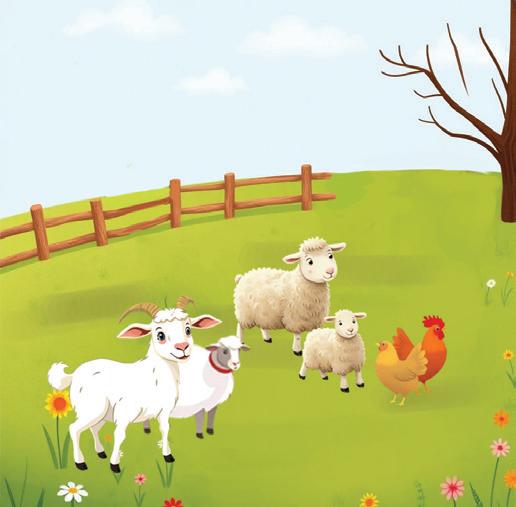
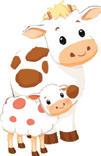


Circle Time Story Weaving
General Awareness Uses of Plants
General Awareness, page 66
Foundational Literacy Colour Reader, page 5
Foundational Numeracy Number Names from 1 to 10 Numeracy Workbook, page 36
DIY Rhyme: Animals are Friends Rhymes and Stories, page 40
LO: Children will use their creativity and imagination to weave a story.
Resources: Different types of leaves
1. Warm-Up: Start by showing the leaves to the children. Ask: What do you see in these leaves? What shapes, colours, or patterns can you notice? Encourage children to touch, feel, and observe the leaves closely. Prompt them with questions like: Are the edges smooth or jagged? Are the leaves big or small?
2. Weaving a Story: Say: Each leaf has a story to tell! Begin with one leaf and say: This leaf fell from a tall tree and began an adventure. Pass it to the next child to continue the story. Encourage imagination—where does the leaf go, who does it meet, what happens next? Each child adds a part, and the last child gives it an ending.

LO: Children will identify different things that we get from a tree.
Resources: General Awareness, page 66; some objects like wooden pencils, an apple or any other fruit, paper etc.
1. Warm-Up: Draw a simple tree on the board. Say: Look at this big tree! What do you think trees give us? Encourage children to share freely. Support their ideas by adding: Trees give us shade, fruits, wood, clean air, and a home for birds and animals.
2. Objects from Trees: Show or name several common objects (such as paper, fruit, wood, and a pencil) and ask the children to identify which ones come from trees. Say: Look at this paper! Where do you think it comes from? Ask the children: What about this apple? Continue with other items like a wooden spoon or pencil. Encourage children to raise their hands and share their answers. End by summarising: Many of the things that we use every day come from trees!
3. Uses of Plants: Ask children to open page 66 of the General Awareness book. Guide them to identify the things that we get from a tree or a plant. Say the name of the objects aloud and ask children to repeat after you. Repeat 2–3 times for reinforcement.







LO: Children will read simple sentences with different colour words. Resources: Reader, page 5


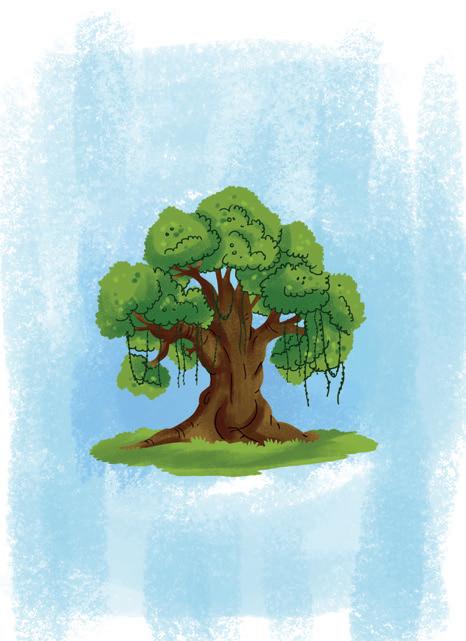










1. Picture Talk: Ask children to open page 5 of the Reader. Point to a picture and ask: What do you see? Take a few responses and say: This is a box. / This is a cat. Repeat with other pictures.
2. Explaining in Home Language: Read the lines from page 5 of the Reader and explain them in a mix of English and the home language to ensure understanding.
3. Modelling: Demonstrate how to read aloud the sentences from page 5. Read slowly but loudly with clear pronunciation and voice modulation.
Practice
4. Sight Words: Introduce the sight words from page 1. Write the sight words on the board and read each word aloud. For example, write words such as the, is, as, on, in and help children identify and read the sight words after you. Call children one by one, say a sight word, and ask them to point to it in the Reader.
5. CVC Words: Introduce the CVC words on page 5. Write a word on the board and guide children in reading it. For example, write cat and say: /k/ /a/ /t/ – cat. Emphasise the middle sounds and ask children to repeat after you. Repeat with other CVC words: box, fox, cat, rug.


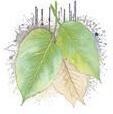




6. Colour Words: Write the colour words given on page 5–red, brown, black and blue. Help children identify and read the colour words after you. Call children one by one, say a colour word, and ask them to point to it in the Reader.
Practise reading the colour words from page 5 of the Reader.

LO: Children will write number names for the numbers.
Resources: Numeracy Workbook, page 36; number name flashcards (from Skillbook)
1. Recap: Write the number names of 1 to 10 on the board. Point and read each spelling one by one and ask children to repeat after you. Example: O-N-E–one / T-W-O–two. Recap each spelling 3–4 times.
2. Find the Number Name: Give the number name flashcard to the children. Point to the spelling of the number 1 and ask children to find and hold up the flashcard showing the spelling. Repeat for other number names.
3. Number Names from 1 to 10: Ask children to open page 36 of the Workbook. Guide them to count the number of objects and write the correct number name in the given space.



LO: Children will recite the poem Animals are Friends with voice modulation and expressions. Resources: Rhymes and Stories, page 40; a soft toy
1. Rhyme Time: Recite the poem Animals are Friends with voice modulation and expressions. Ask children to sing along. Repeat 3–4 times.
2. Guess the Animal: Pass a soft toy around. When you say STOP the child holding the soft toy gets a clue and has to say the name of the correct animal. For example, ask: I hum and make sweet honey. Who am I? / I give warm and soft wool. Who am I? Ensure everyone gets a turn.














Circle Time
Making a Paper Boat
General Awareness From Seed to Plant
General Awareness, page 67
Foundational Literacy Rainy Day Literacy Skillbook, pages 51–53
Foundational Numeracy Number Names from 1 to 10
DIY Grid Drawing: Kite
LO: Children will follow step-by-step instructions to fold a paper boat.
Numeracy Workbook, page 37
Art and Craft, page 23
Resources: Rectangular sheet of paper (per child); a readymade paper boat
1. Warm-Up: Show the paper boat to the children and ask: What do you see? Let children share their answers freely. Then, say: Today we will make a paper boat. You may engage them with questions, such as: Did anyone ever take a boat ride? Welcome all responses.
2. Making a Paper Boat: Give the square sheets to the children. Demonstrate and guide them to make a paper boat. Follow the instructions shown in the picture.

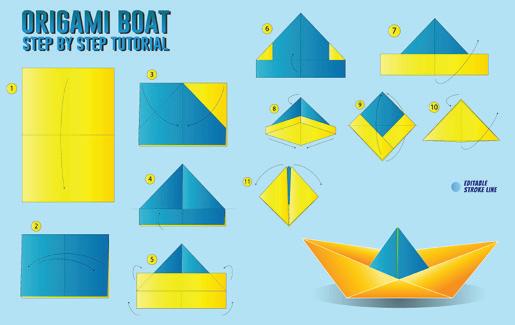
LO: Children will discuss how a seed grows into a plant through pictures and a story.
Resources: General Awareness, page 67; a small seed (any fruit seed or lentils)
1. Warm-Up Discussion: Show the seed to children and ask: What do you think this is? How does it help a plant? Let children share their responses freely. Then, say: This is a seed. A plant grows from a seed. Today we will learn how seeds grow into a plant.
2. Picture Talk: Ask children to open page 67 of the General Awareness book. Point to each picture and discuss them. As questions like: What do you see in this picture? What is the girl doing?
3. From Seed to Plant: Read aloud From Seed to Plant from page 67 of the General Awareness book. Pause in between to show pictures and ask them questions such as:

• What did the girl fill in the pot?
• Where did the girl plant the seed?
• How did the girl take care of the seed?
• How was the plant after a few days?
Emphasize that after planting a seed we must take of the seed by keeping it in the sunlight and by watering it.
You can do a seed planting activity in the school ground or in a small pot in the classroom. Let children observe daily how to take care of the seed and help it grow into a plant.









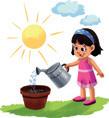





LO: Children will discuss the pictures from the story Rainy Day and discuss the sight words.
Resources: Literacy Skillbook, pages 51–53
1. Warm-Up Discussion: Begin by asking: What happens when it rains? What do you do on a rainy day? Let children share their responses freely. Refer to the paper boat children made in the circle time session and ask: Did anyone make and sail a paper boat in a puddle on a rainy day? Welcome all responses.

2. Picture Talk: Ask children to refer pages 51 to 53 of the Skillbook. Show the pictures given on each page and discuss them. Ask questions like: What weather do you see in the picture? / What is the boy and the girl making? / What are they doing?
3. Sight Words: Write the sight words on the board given at the bottom of page 53 of the Skillbook. Point to each word and read it aloud and ask children to repeat after you. Repeat each word 5–6 times.



LO: Children will read the number names and identify the correct number symbol.
Resources: Numeracy Workbook, page 37; some countable objects
Introduction
1. Recap: Write ‘ONE’ on the board and guide children to read the number name. Then ask them to count and show that many pictures. Repeat the same for all the numbers up to 10.
2. Reading and Counting: Call children one by one. Write a number name on the board. Guide them to read the number name, pick up the correct number of objects and write the number symbol on the board. Ensure everyone gets a turn.
3. Number Names from 1 to 10: Ask children to open page 37 of the Workbook. Guide them to count the number of objects, read the number names and write the correct number symbol.




























Revise the spellings of numbers 1–10 by referring to page 37 of the Numeracy Workbook. Practise writing the spellings in your notebooks.
LO: Children will make grid drawing of a kite.
Resources: Art and Craft, page 23; a kite (of possible)
1. Warm-Up: Show the kite to the children and ask: What is this? Take a few responses and say: This is a kite. Then ask: How many of you fly kites? During which festival do you fly kites? Welcome all responses.
If picture of a kite is not available, simply draw a kite on the board and show it to the children.
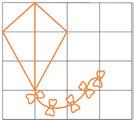

2. Grid Drawing: Ask children to open page 23 of the Art and Craft book. Demonstrate drawing a kite in a grid on the board and ask them copy step by step. Guide those who need help.

Circle Time Pick and Count
General Awareness Tree Art
Foundational Literacy Rainy Day Literacy Skillbook, pages 51–53
Foundational Numeracy Number Names Numeracy Workbook, page 38
DIY An Elephant Gond Art Art and Craft, page 24
LO: Children will develop their eye-hand coordination through a game.
Resources: 10 to 20 sticks
1. Warm-Up: Say: Today we will play the game Pick-up the Sticks. Then, demonstrate how the game is played:
• Shake and spill the sticks on your desk or on the floor (if possible).
• Use one stick to pick each stick from the pile without it falling or touching another stick.

2. Game Time: Call the children one by one and give them a chance at picking the sticks. Appreciate them and give a round of applause to the child who picks the most number of sticks. Encourage them to count them while picking the sticks.

LO: Children will make a tree using crayons and finger prints. Resources: Drawing sheet (per child); green watercolour; brown crayon
1. Recap: Recall the concepts from the previous sessions. First, ask children to name different parts of a tree (roots, leaves, branch, trunk, flowers and fruits). Then, ask: What should we do to help a seed grow into a plant? Take responses and correct children wherever required.
2. Art Time: Say: We will make a tree using crayons and fingerprints. Give the drawing sheets to the children. Demonstrate how to draw a trunk and branches of a tree. Ask children to draw on the drawing sheet with a brown crayon. Then, guide children to dip their fingers in green watercolour and make fingerprints to make leaves of a tree.







LO: Children will listen to the story Rainy Day and read the sight words from the story.
Resources: Literacy Skillbook, pages 51–53
1. Sight Words: Write the sight words given on page 53 on the board. Point and read aloud the sight words and ask children to repeat after you. Then, call children one by one, say aloud a sight word and ask the children to identify it. Ensure everyone gets a turn.
2. Interactive Read-Aloud: Read aloud the story Rainy Day with expressions and voice modulation. Make relevant pauses in between to show pictures and ask questions. You can ask questions such as:
• With what did Anisha and Asif make paper boats.
• What did they wear to go out in the rain?
• Where did Asif and Anisha float their boats?
• What did they eat?
3. Spotting the Words: Guide children to open pages 51–53 of the Skillbook. Say aloud the sight words one by one and guide children to find and underline the sight words from the book.
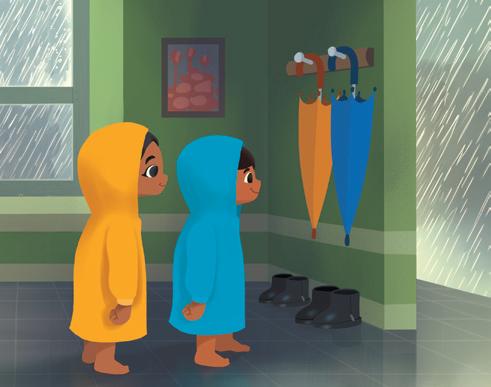



LO: Children will write number names and match them with the correct number.
Resources: Literacy Workbook, page 38; number name flashcards (from Skillbook)
1. Recap: Give the number name flashcards to the children. Call out a number and ask children to hold up the flashcard with the correct number name. Monitor and guide as required.
2. Complete the Number Names: Write down a number name on the board with some letters missing, for example: __ i__e. Guide children to guess the number name and fill in the missing letters. Give hints like: This number comes after 4 or before 6. Repeat with different numbers between 1–10.
3. Number Names: Ask children to open page 38 of the Workbook. Guide them to fill in the missing letters to complete the number names. Then read aloud the number names one by one and ask the children to repeat after you.



Refer to page 38 of the Workbook. Read the number names and match with the correct number symbols.
LO: Children will join dotted lines to make designs on an elephant. Resources: Art and Craft, page 24; coloured pens
1. Warm-Up: Begin by asking: This animal has two big ears and a long nose. Can you guess the animal? Let children think and share their responses. Then say: We are talking about an elephant. Today we will make designs on an elephant. Let children do some simple activities like stomping feet like an elephant, moving their hands like the trunk of an elephant.
2. Picture Talk: Ask children to open page 24 of the Art and Craft book. Ask: What kind of designs do you see on the elephant? Let children share their responses freely. Then say: This is a Gond Art picture. It is a tribal art from the state of Madhya Pradesh. Explain that in the picture the elephant is standing under a tree.




3. An Elephant Gond Art: Guide children to join the dotted lines to complete the patterns on the elephant.







Domain
Learning Outcome
Resources
General Awareness
Children will identify different uses of a plant and share how a plant grows from a seed.
General Awareness, pages 65–67
Suggested Method Call children one by one. Ask them to mention any two uses of a plant. Then, guide them to explain the steps involved when a seed grows into a plant. Ensure everyone gets a turn and give them a smiley.
Support for Struggling Learners
Domain
Gather the learners together. Show them a real plant, if possible, to introduce the different parts of a plant or refer to page 65 of the General Awareness book. Then, help them understand how a seed grows into a plant with the help of pictures and the story given on page 67 of the General Awareness book.
Foundational Literacy
Learning Outcome Children will read sentences with words of different colours.
Suggested Method Reader, page 5
Support for Struggling Learners
Domain
Call children one by one. Guide them to read a sentence aloud from page 5 of the Reader. Ask them to put their fingers under each word as they read. Clap for each child and give them a smiley sticker. Ensure everyone gets a chance.
Ask children to open page 5 of the Reader. Write down the names of the colour from page 5 on the board (red, brown, black, blue) read the words aloud and ask children to repeat after you. Then read aloud the sentence from page 5 of the Reader and ask children to repeat after you. Guide them to put their fingers under each word as they read.
Learning Outcome Foundational Numeracy
Resources Children will spell the number names for the numbers 1–10
Suggested Method Number names flashcards (from Skillbook); chalk
Support for Struggling Learners

Support for Struggling Learners
Call children one by one. Say aloud a number between 1 to 10 and ask the children to write the spelling of that number on the board. Ensure everyone gets a turn and give each child a star or a smiley.
Gather the learners together and give them the number name flashcards from the Skillbook. Write the spelling of number 1 (One) on the board and read it aloud–ONE and ask children to repeat after you. Then guide them to hold up the flashcard with the spelling ‘One’. Repeat the same for spellings two to ten.




































The early years shape a child’s cognitive, social, and emotional growth. The DAWN Curriculum, aligned with NEP 2020 and NCF-FS 2022, integrates the Panchakosha framework to nurture well-rounded development—physical, emotional, intellectual, social, and moral. This manual ensures progressive, engaging, and hands-on learning through a structured teaching model, and provides special days dedicated for reinforcement and enrichment activities.
Equipped with helpful alerts, pro-tips, and best practices, this manual makes teaching seamless, interactive, and impactful. With play-based activities and multisensory techniques, teachers can confidently create a stimulating, joyful, and inclusive classroom.
• 180-Day Teaching Plan: Well-paced progression with built-in revision days.
• 4+1 Teaching Model: Structured learning with a dedicated reinforcement day.
• Panchakosha Framework: A holistic approach to early childhood development.
• DIY & Hands-on Learning: STEM, Art & Craft, storytelling, and interactive activities.
• Dynamic Circle Time: Engaging discussions, mindfulness, and movement-based activities.
• Multisensory & Play-Based Approach: Enhancing retention through interactive learning.
• Error Alerts & Pro-Tips: Practical guidance for smooth and effective teaching.
Uolo partners with K-12 schools to provide technology-enabled learning programs. We believe that pedagogy and technology must come together to deliver scalable learning experiences that generate measurable outcomes. Uolo is trusted by over 15,000+ schools across India, Southeast Asia and the Middle East.
ISBN 978-81-985727-4-5

hello@uolo.com